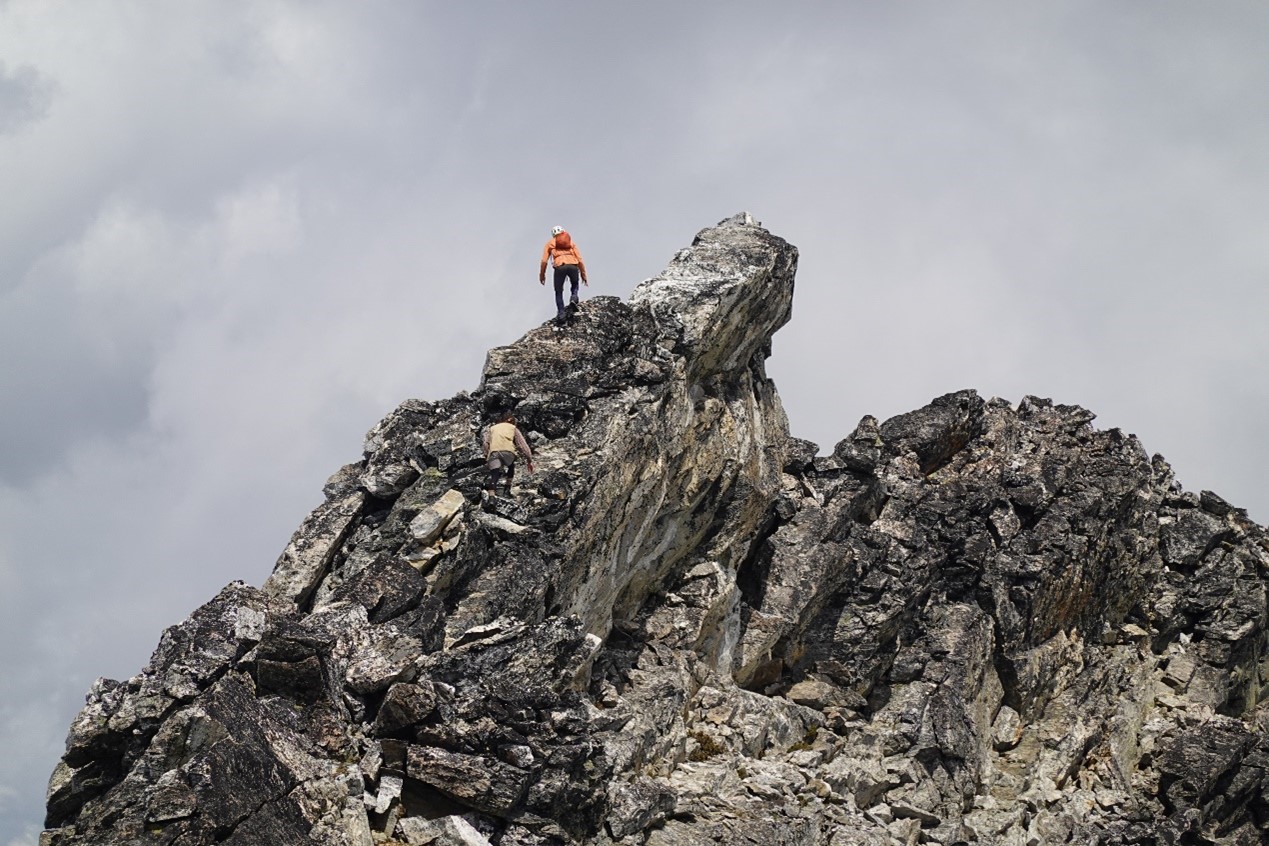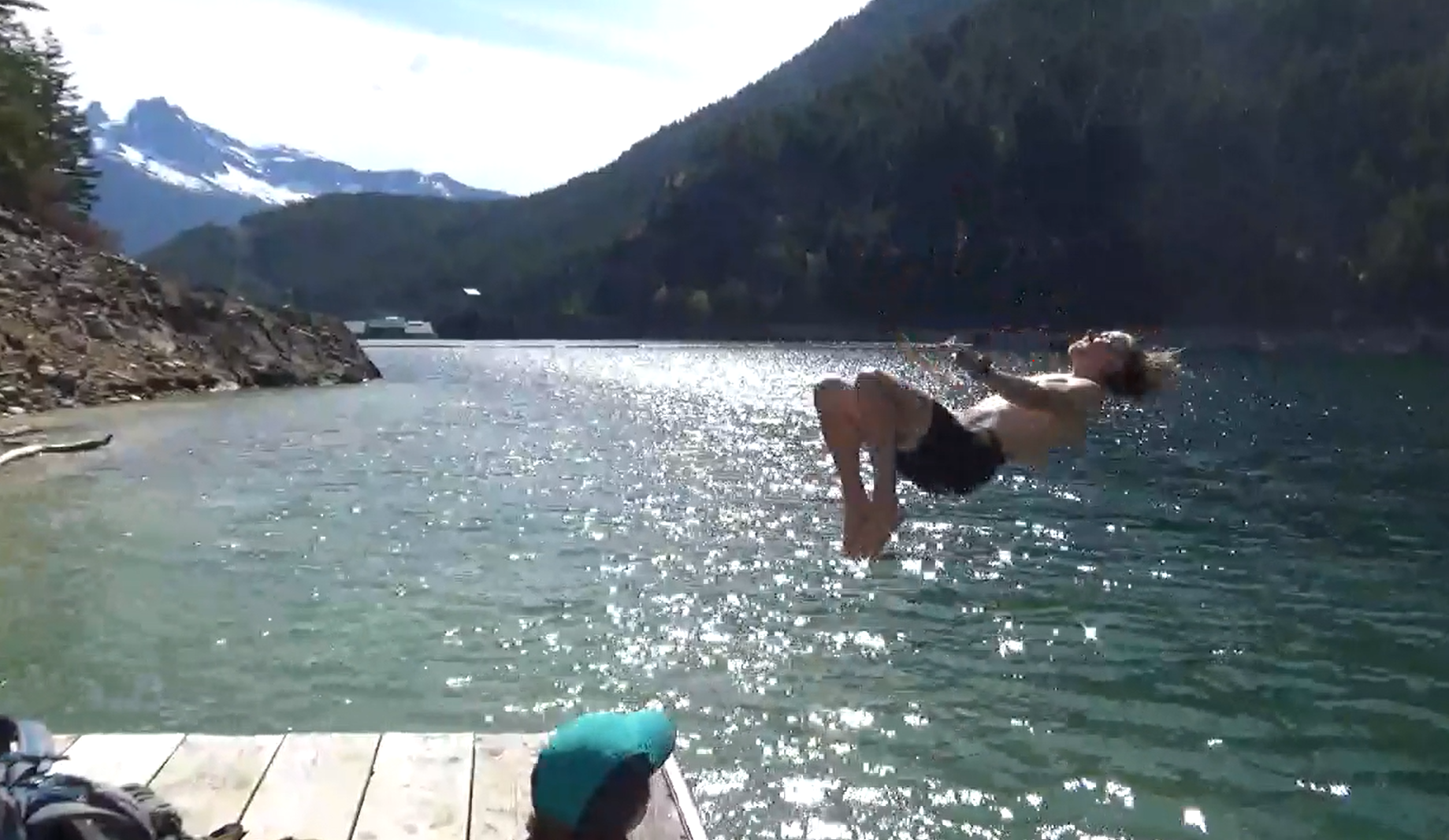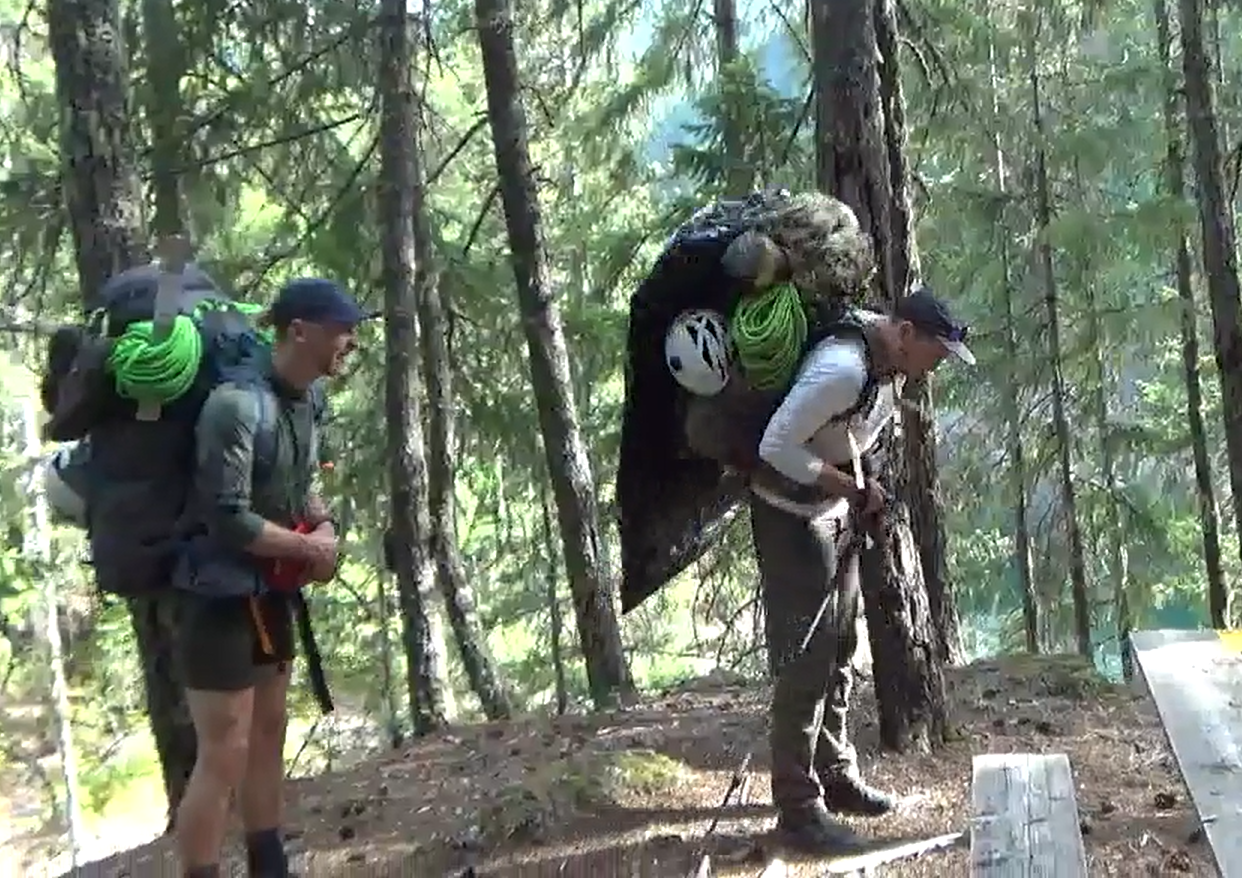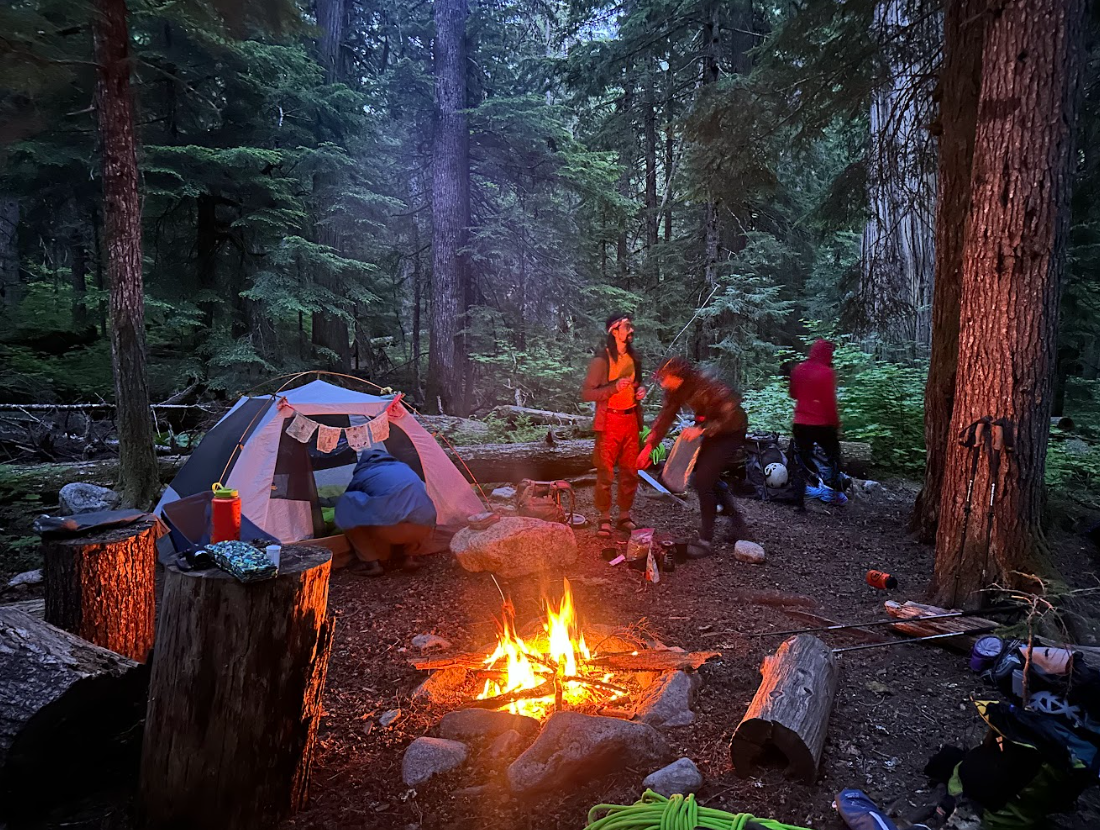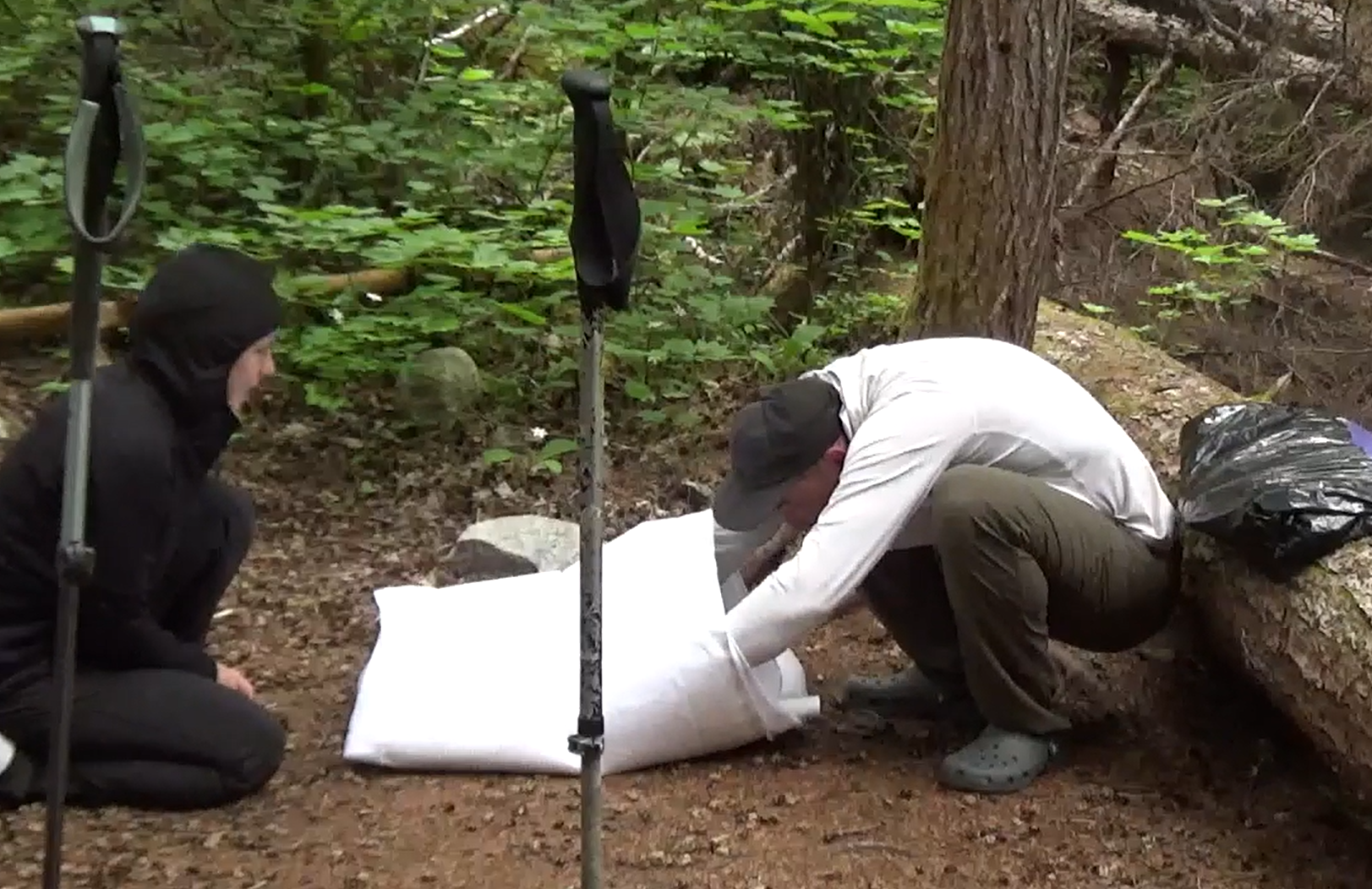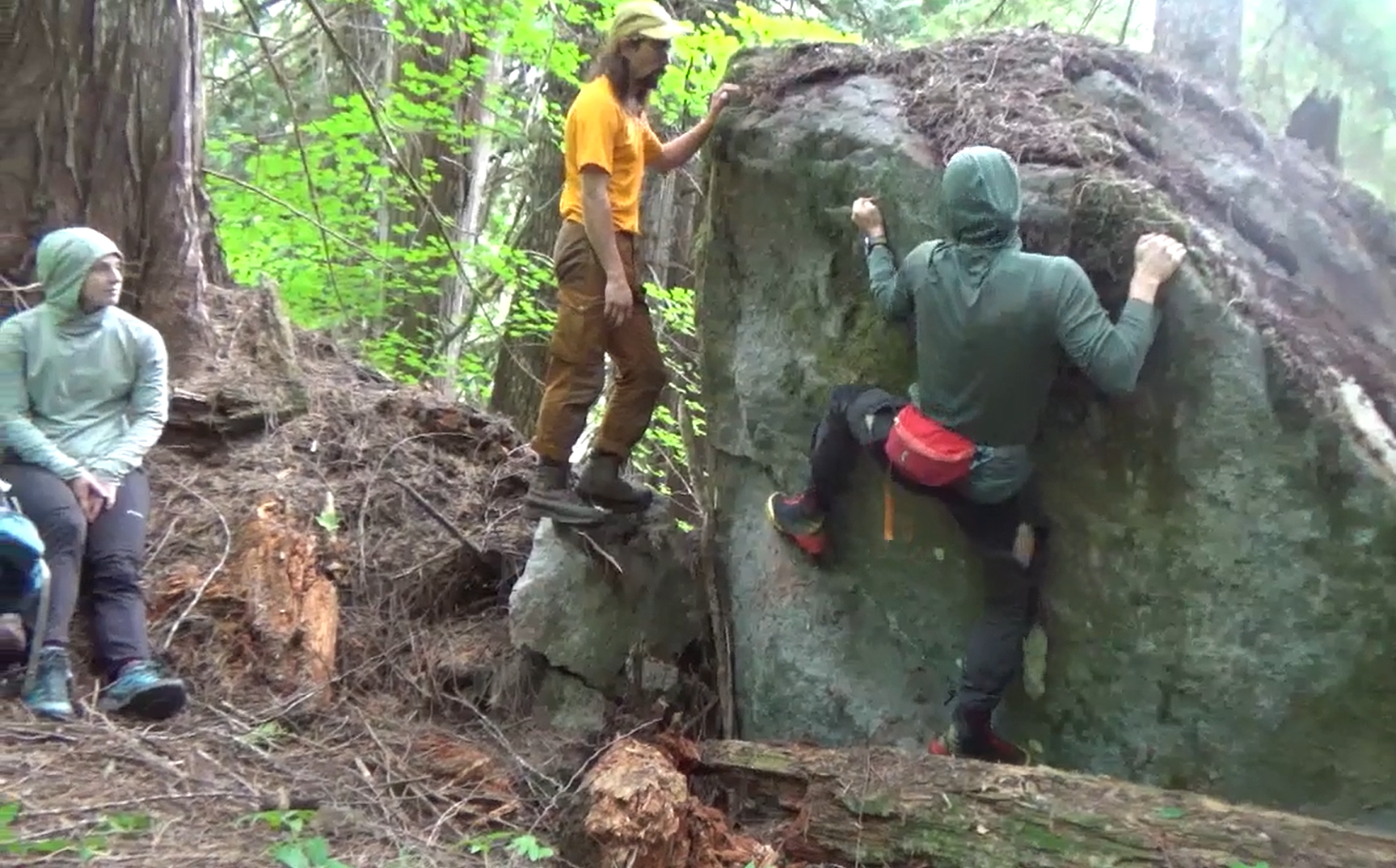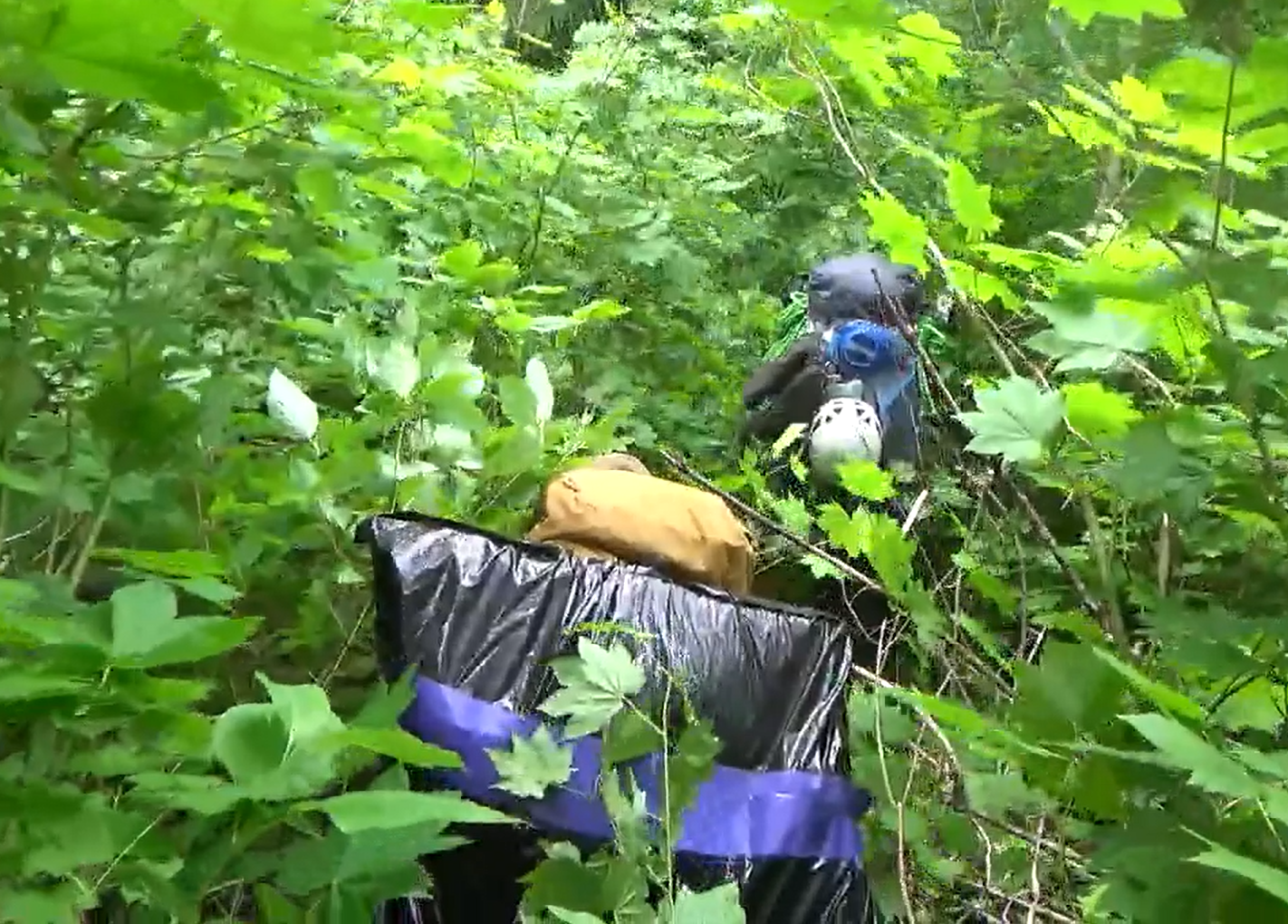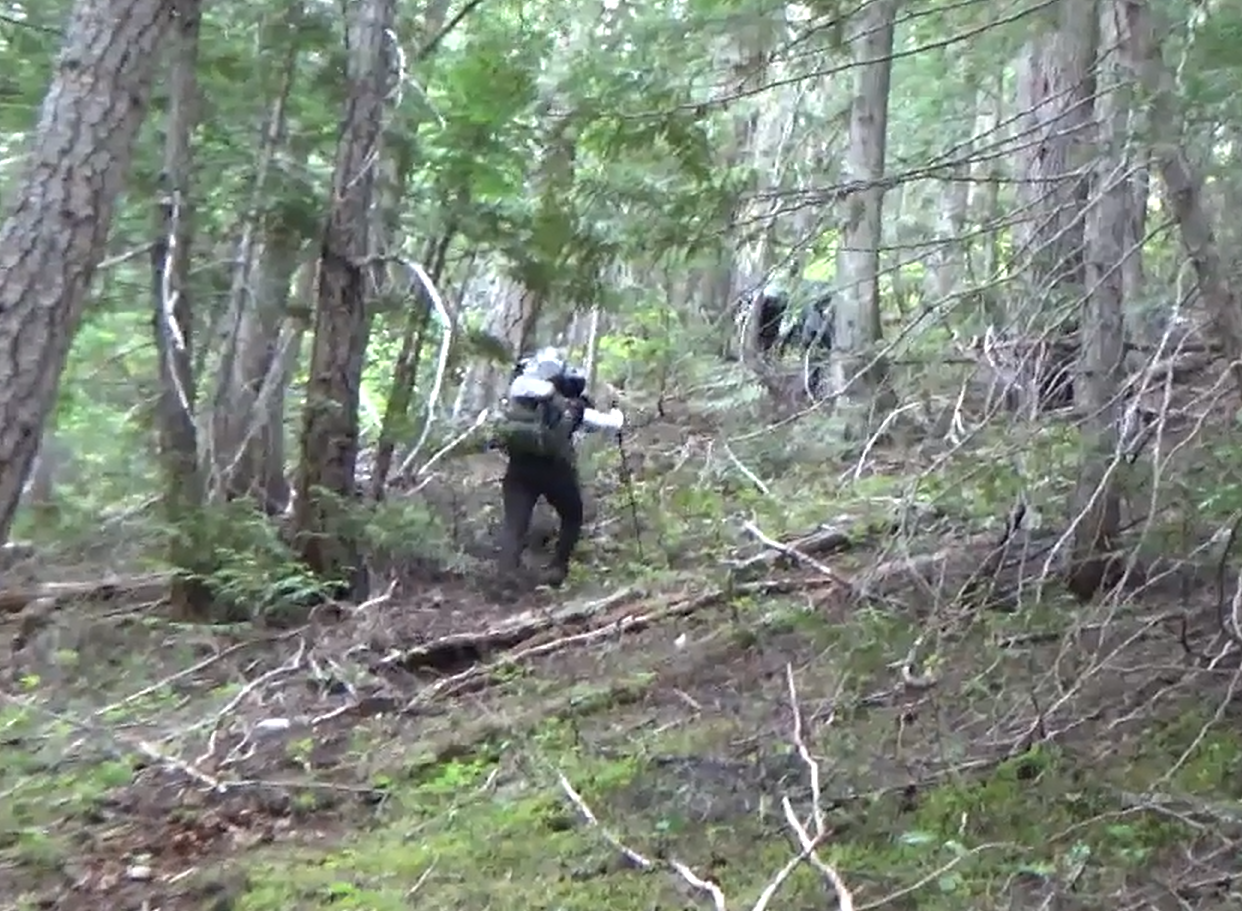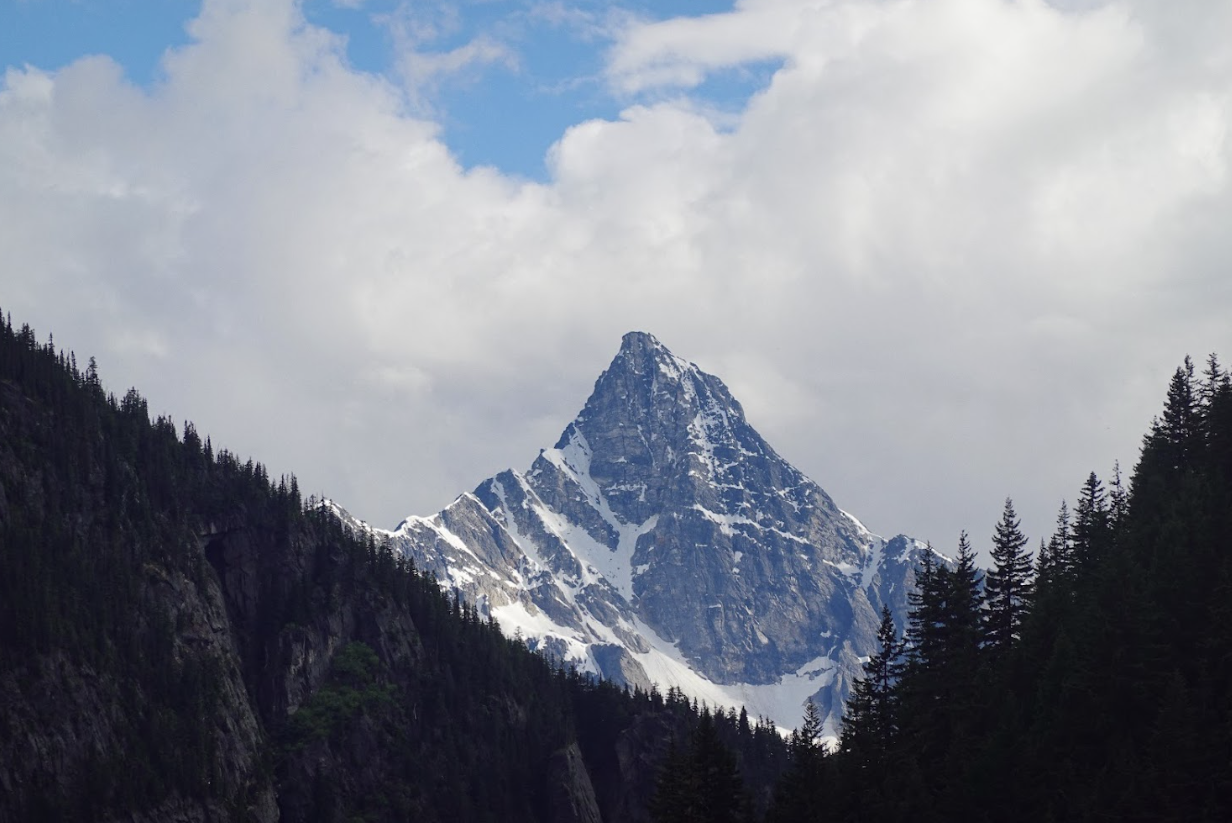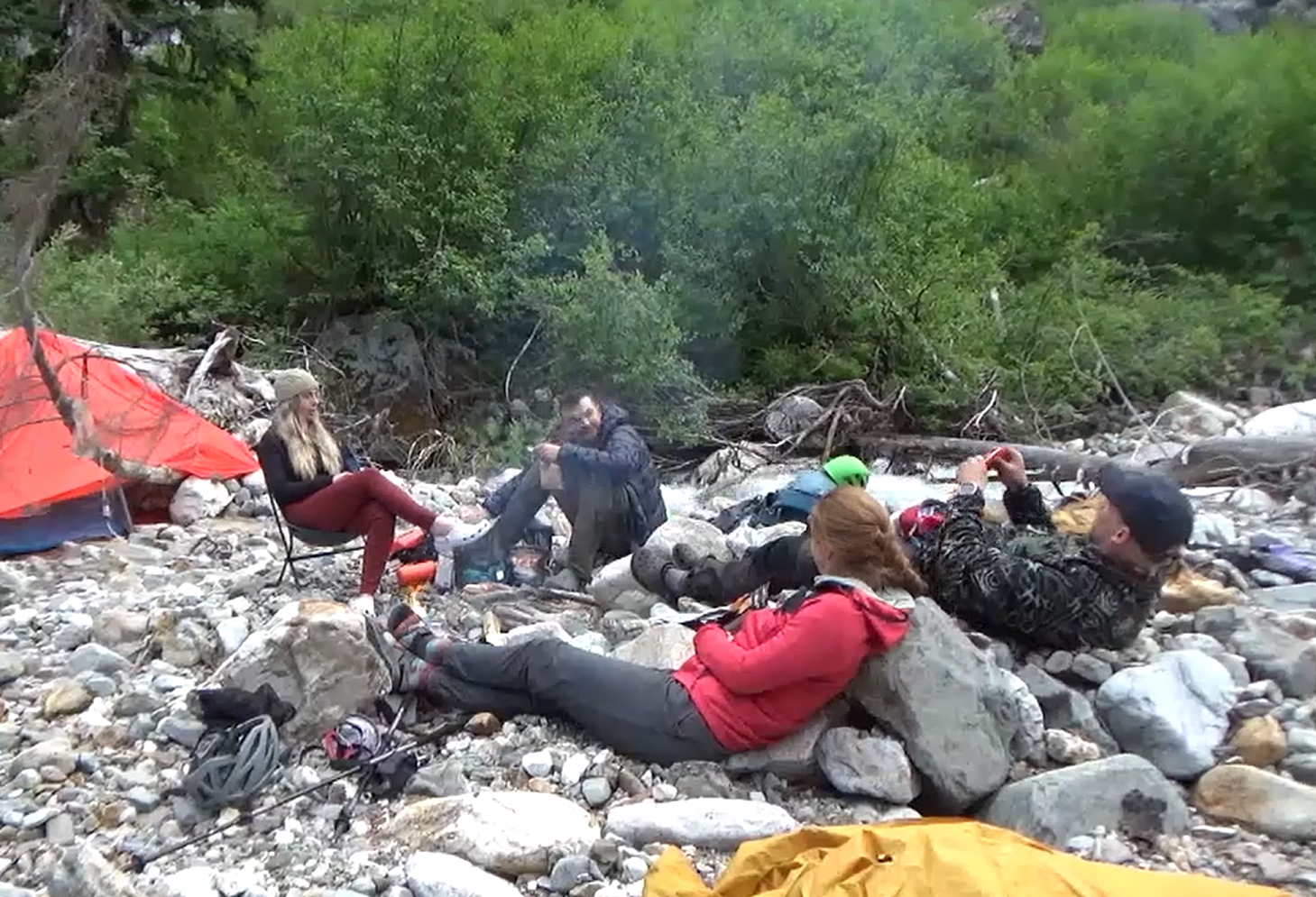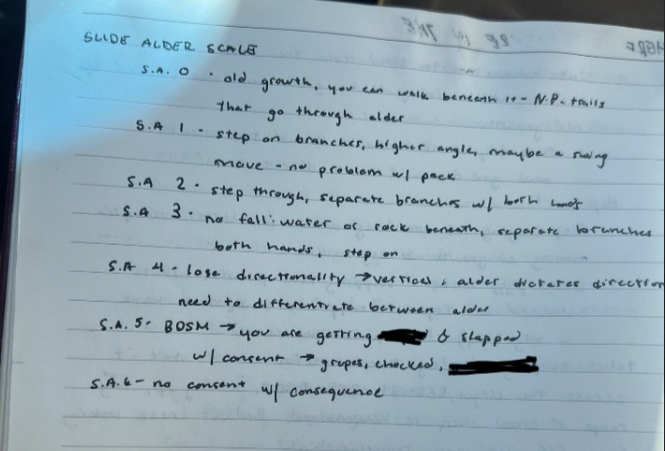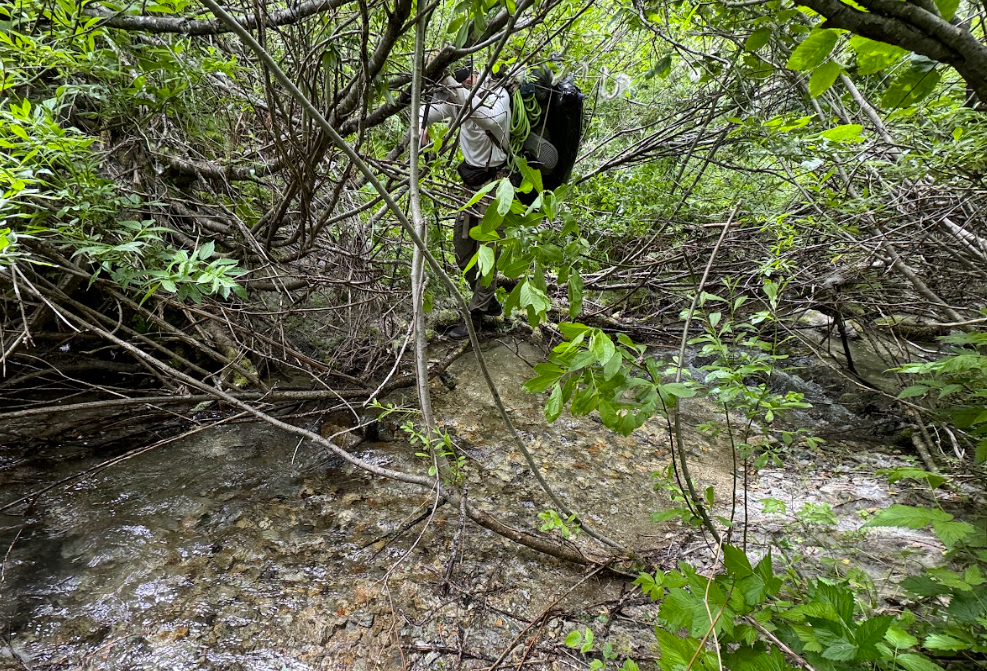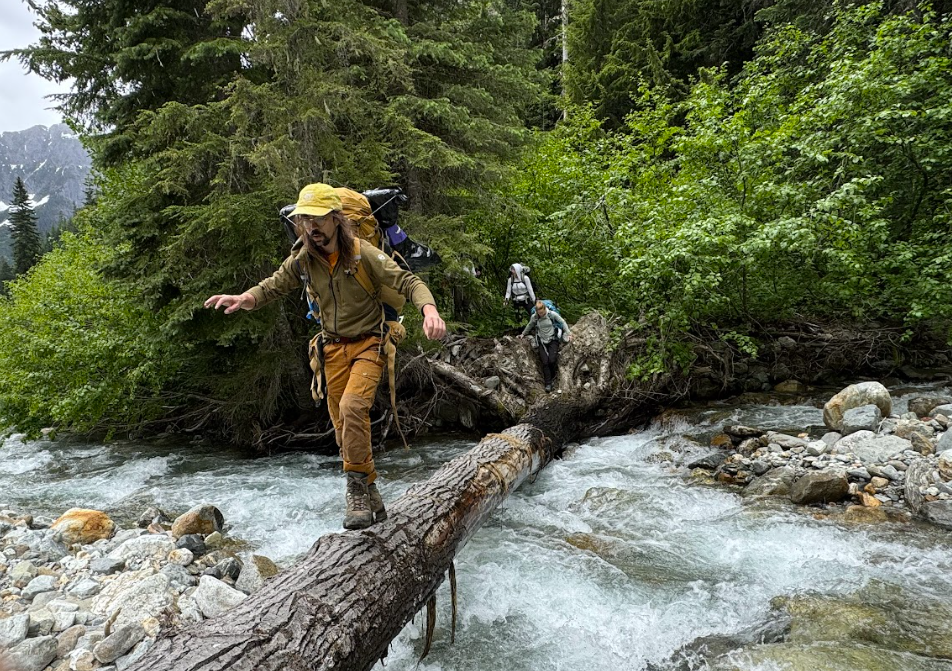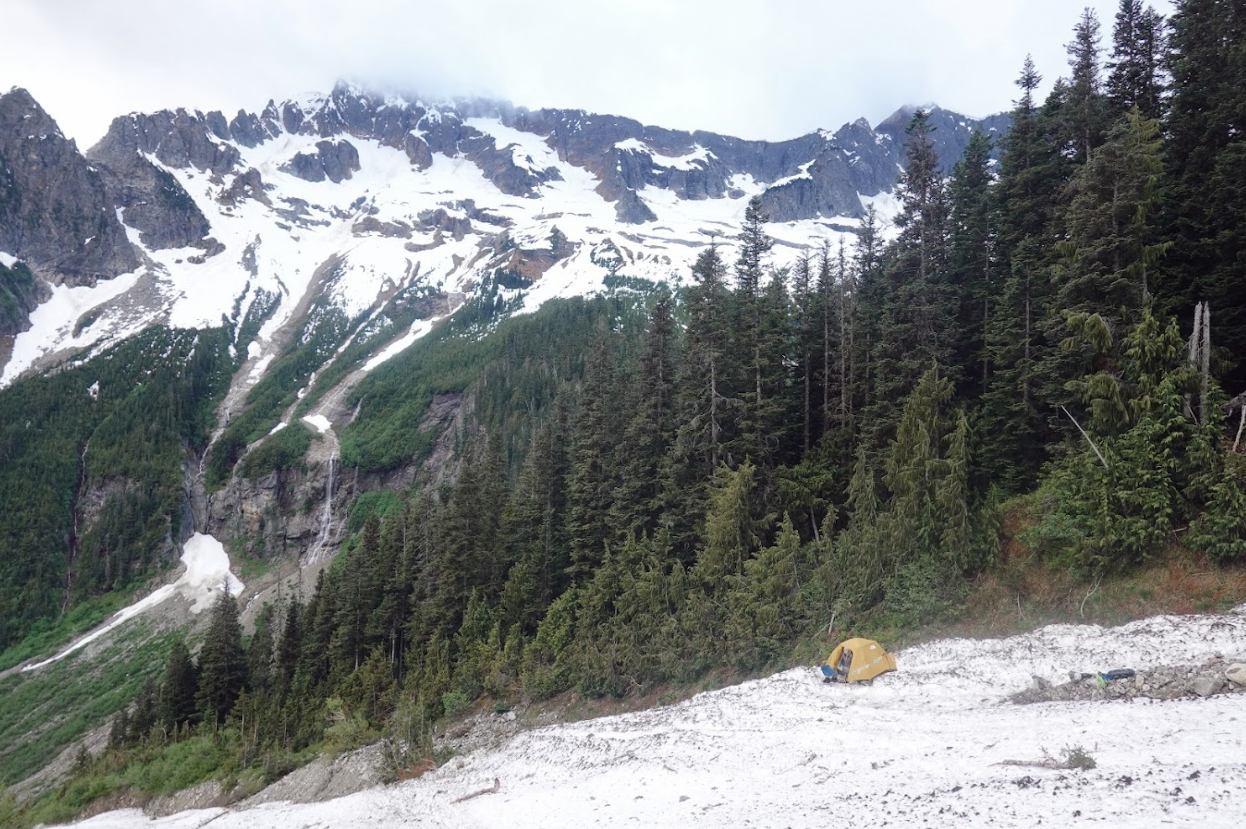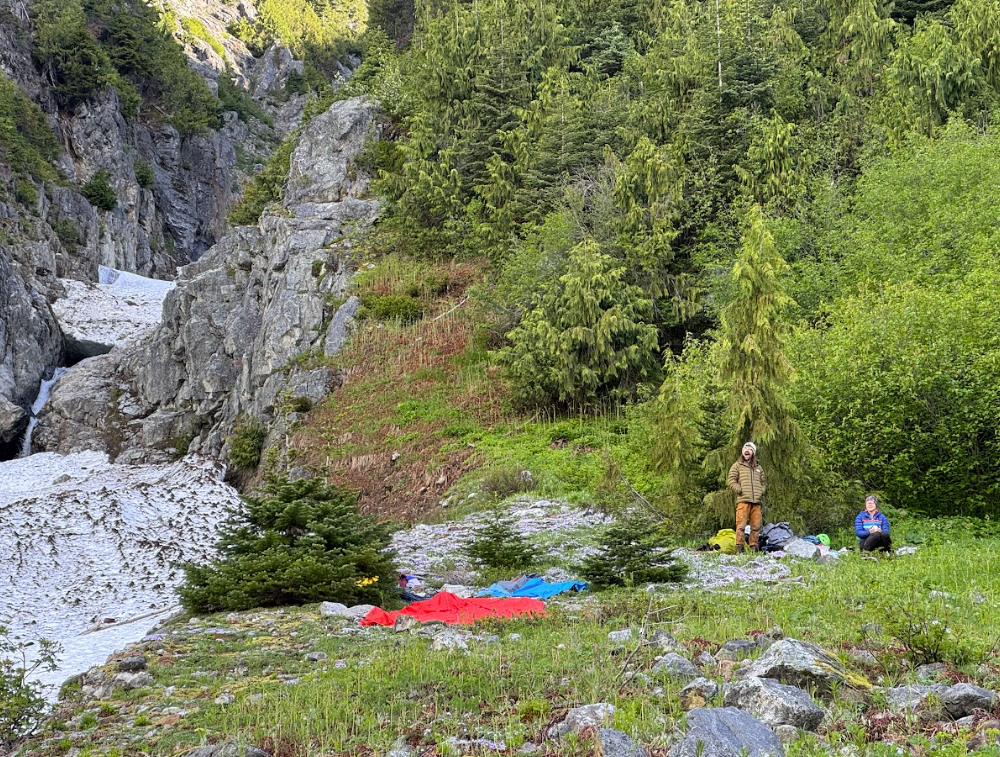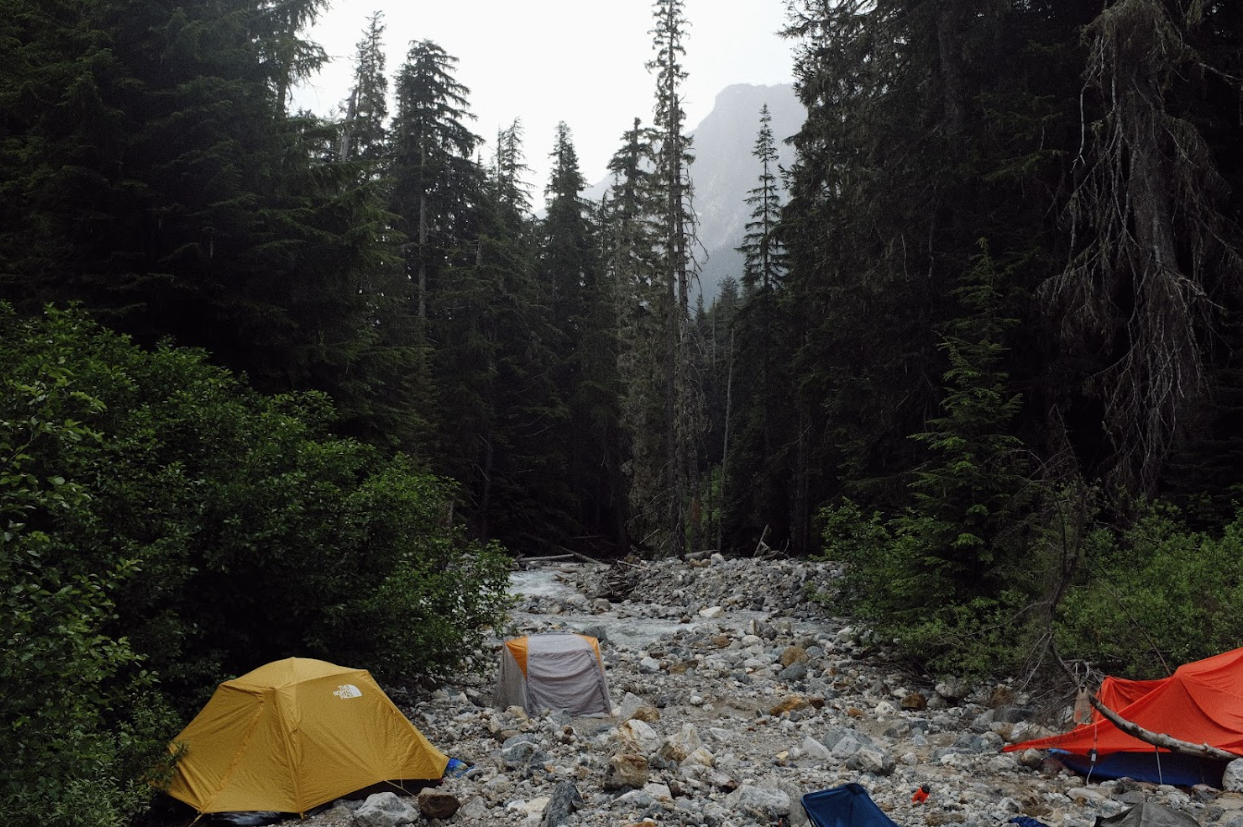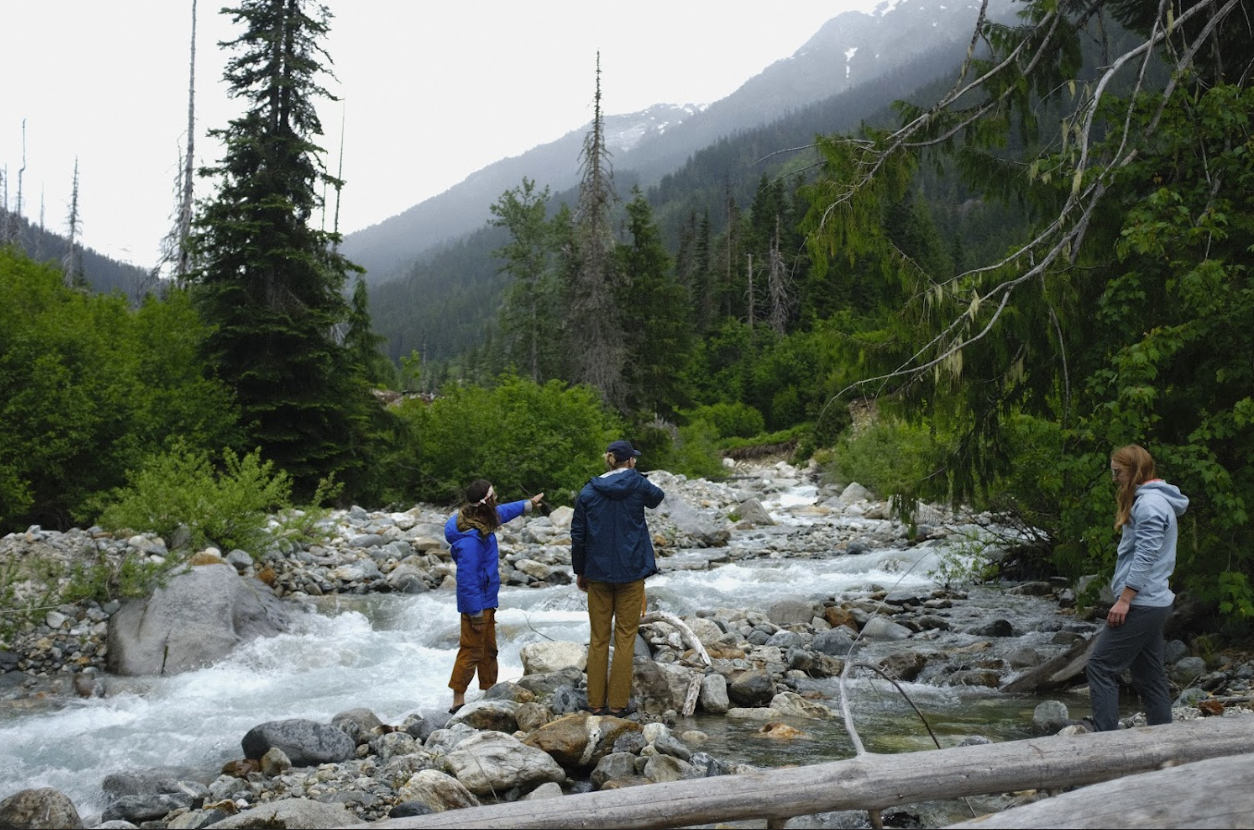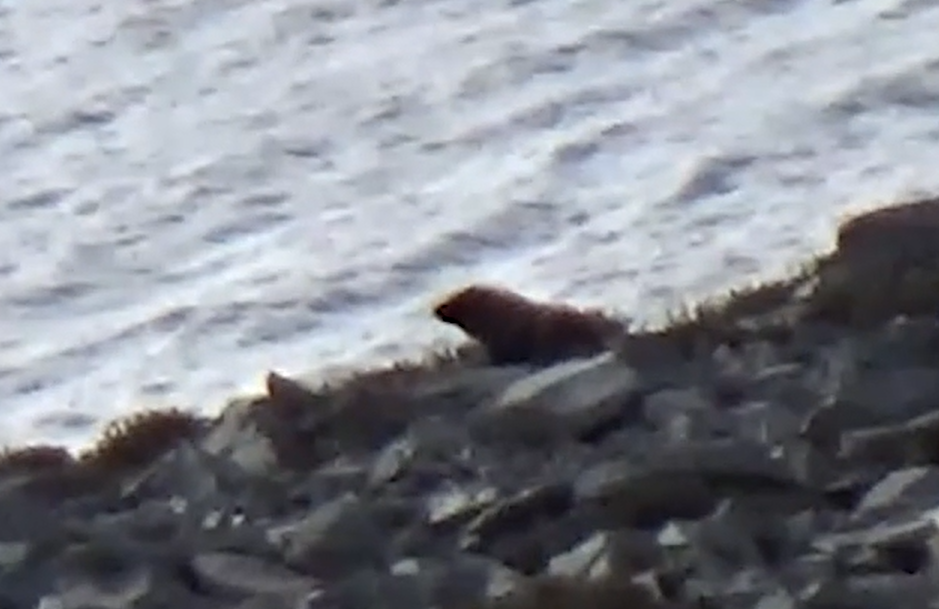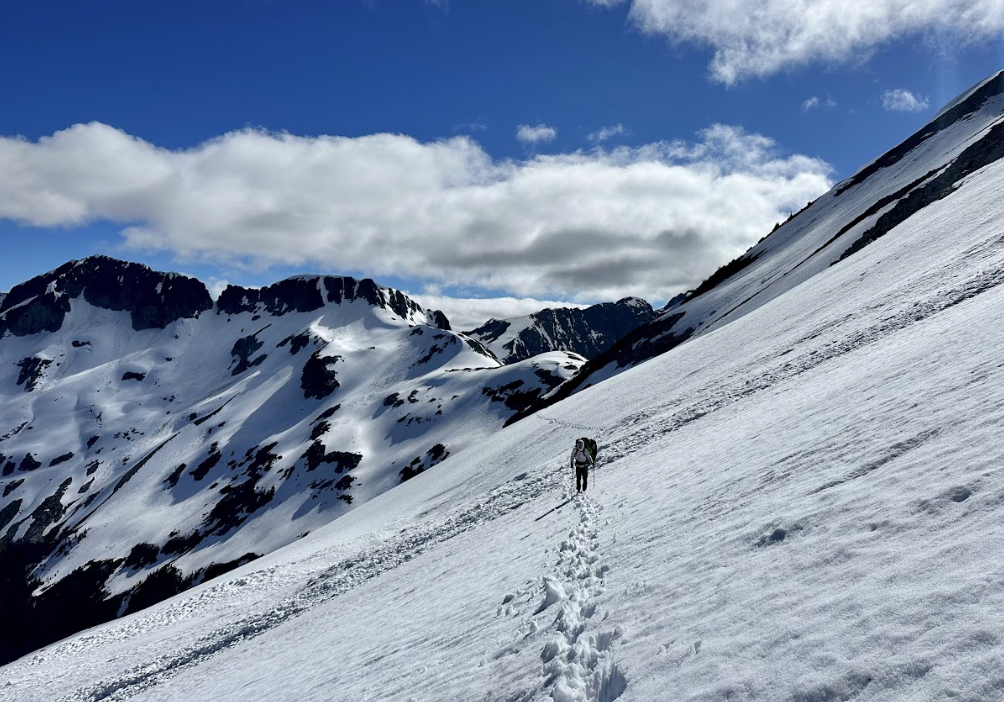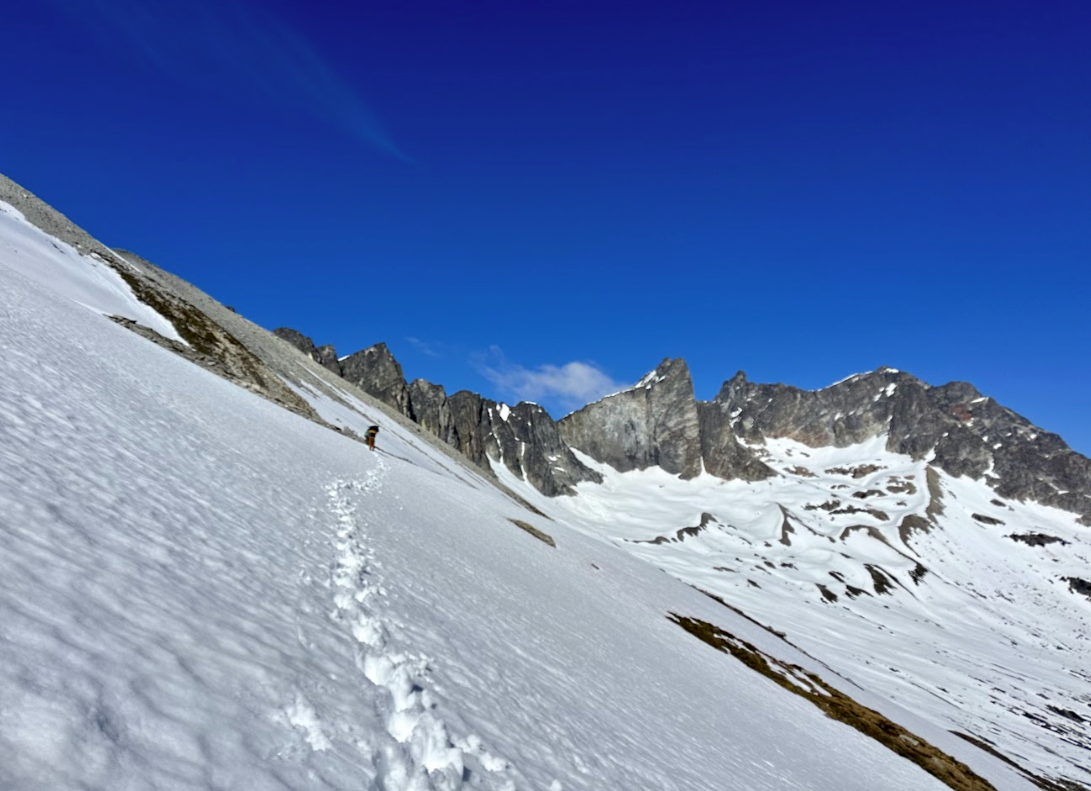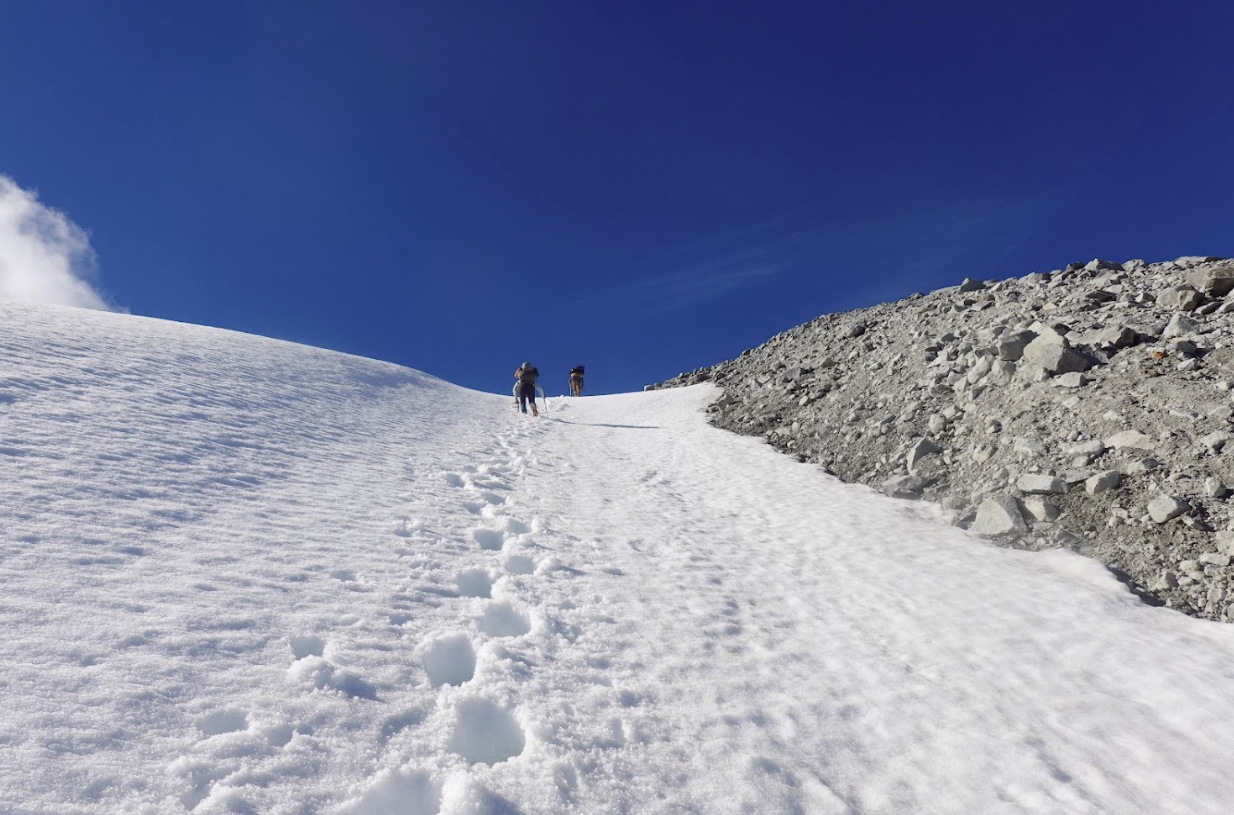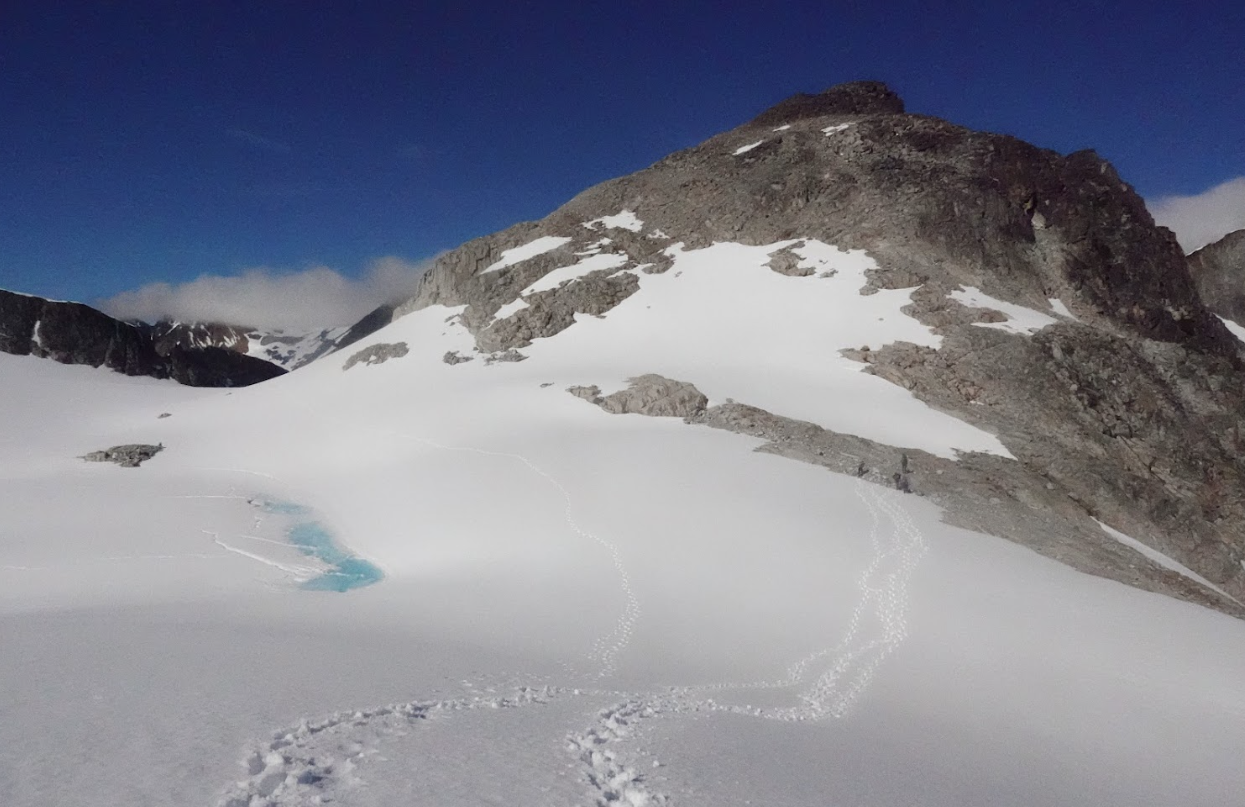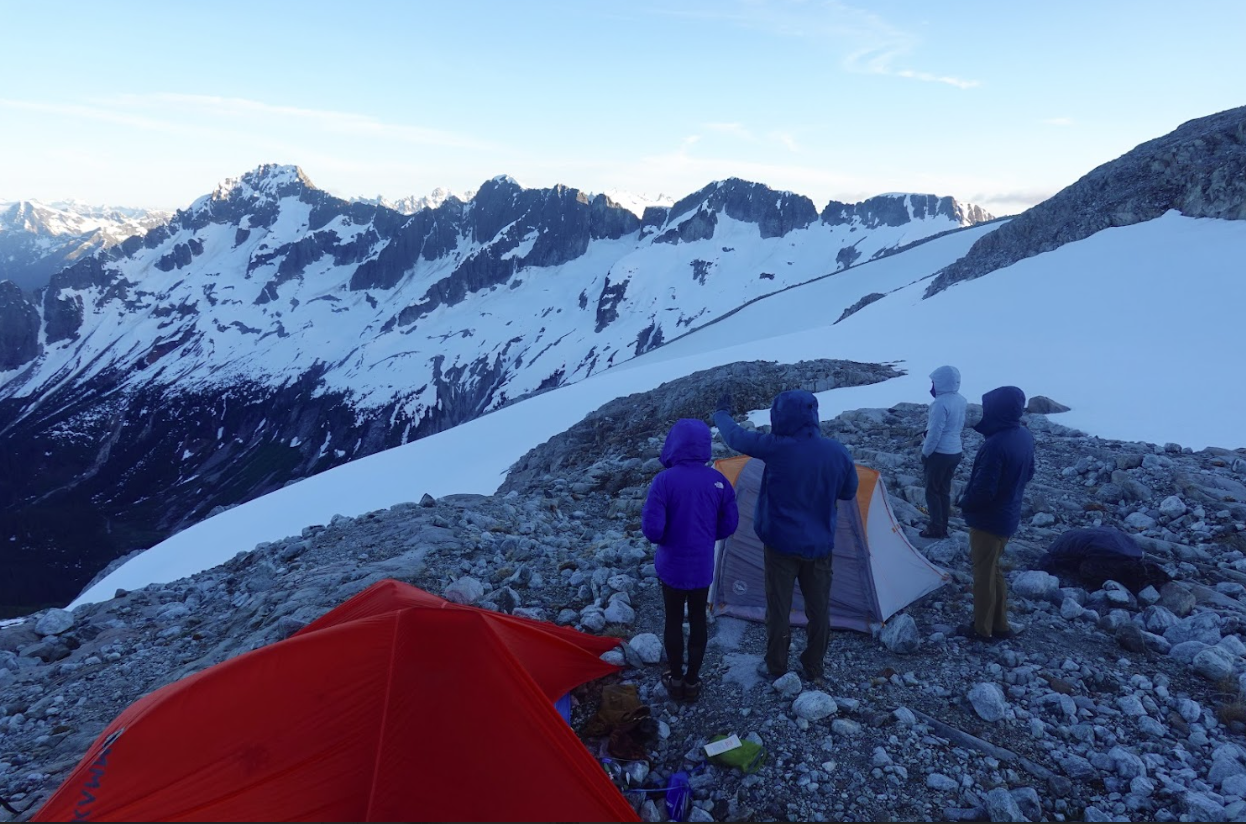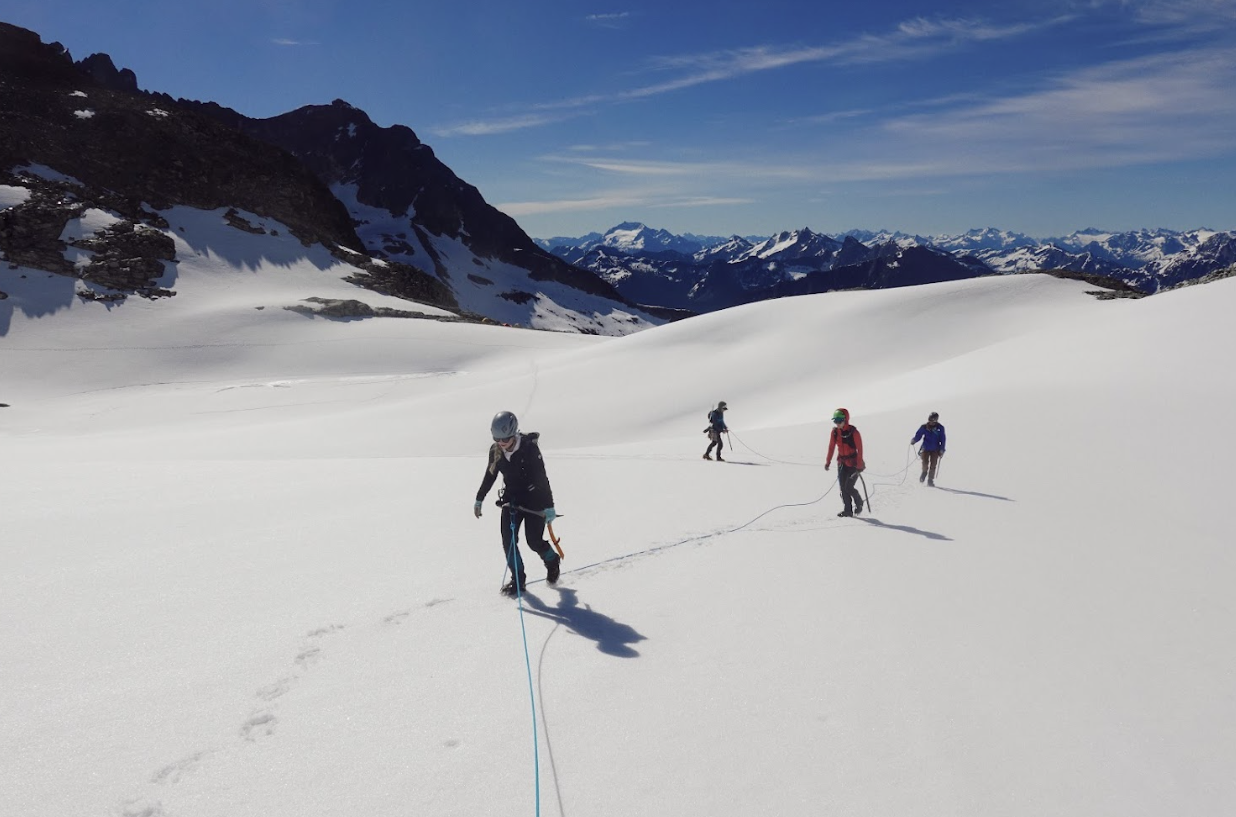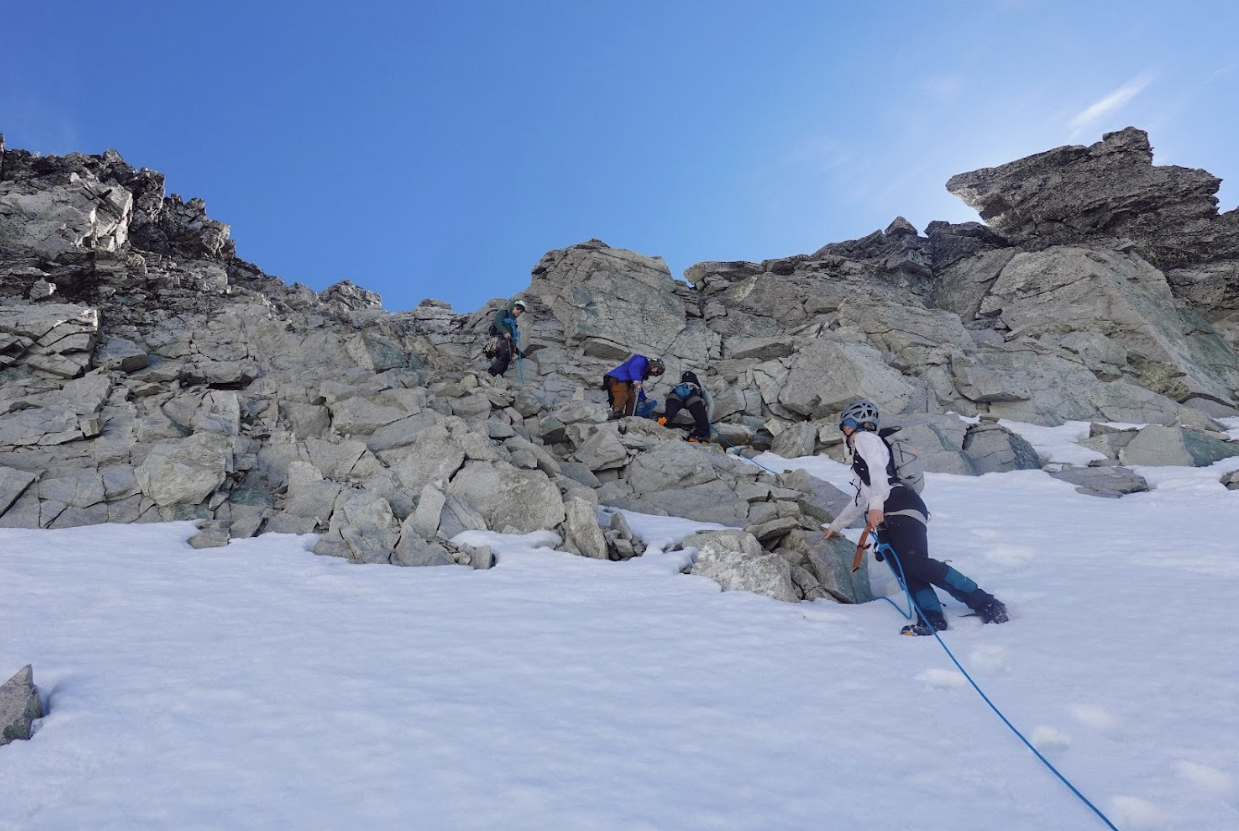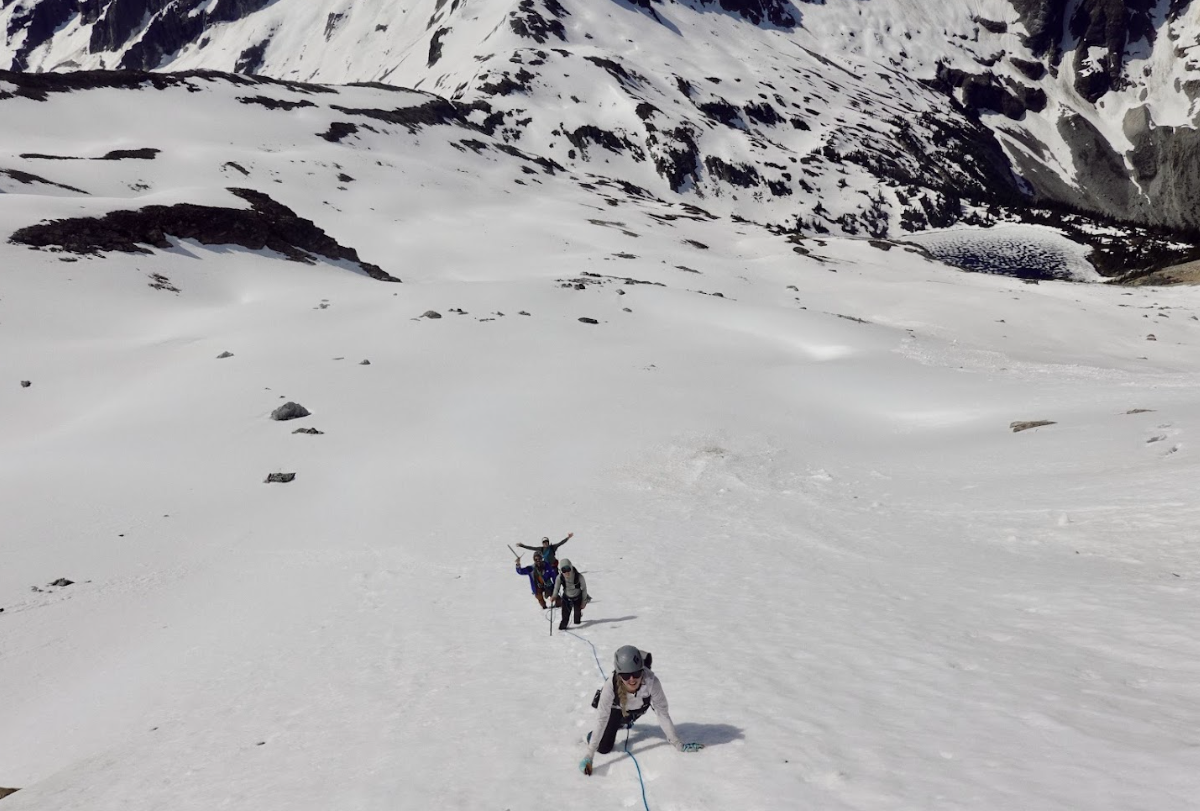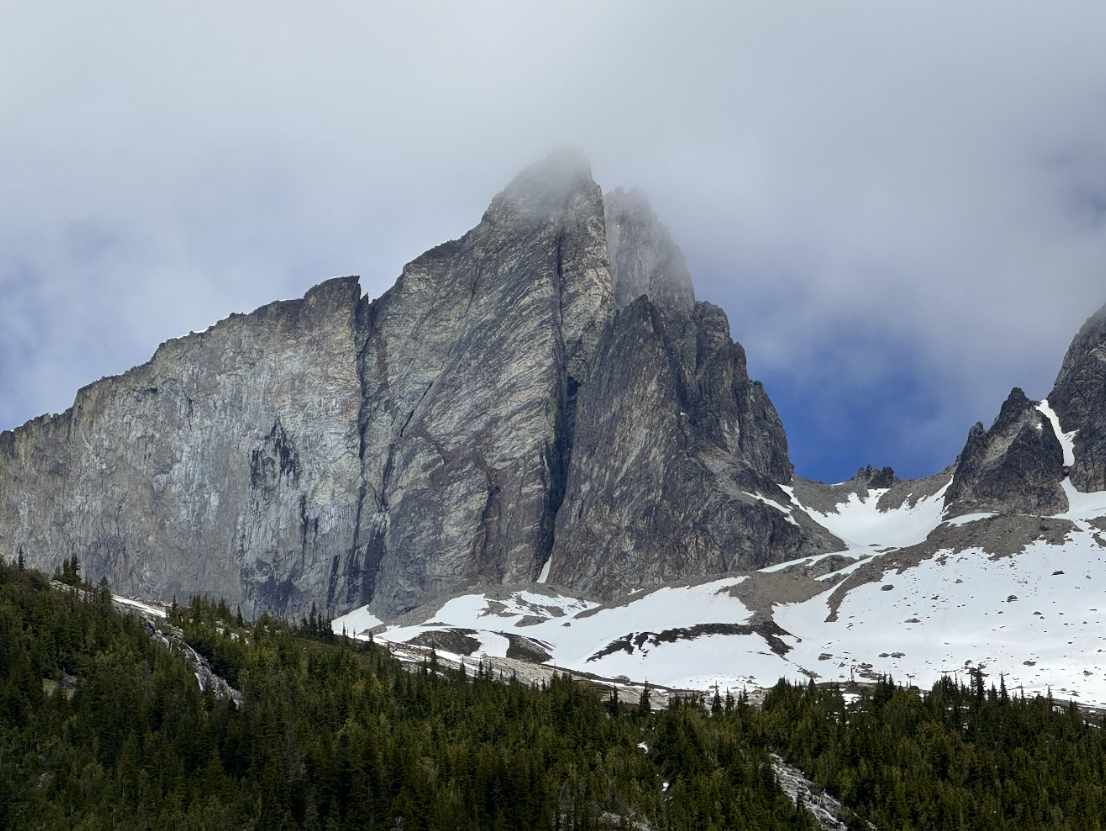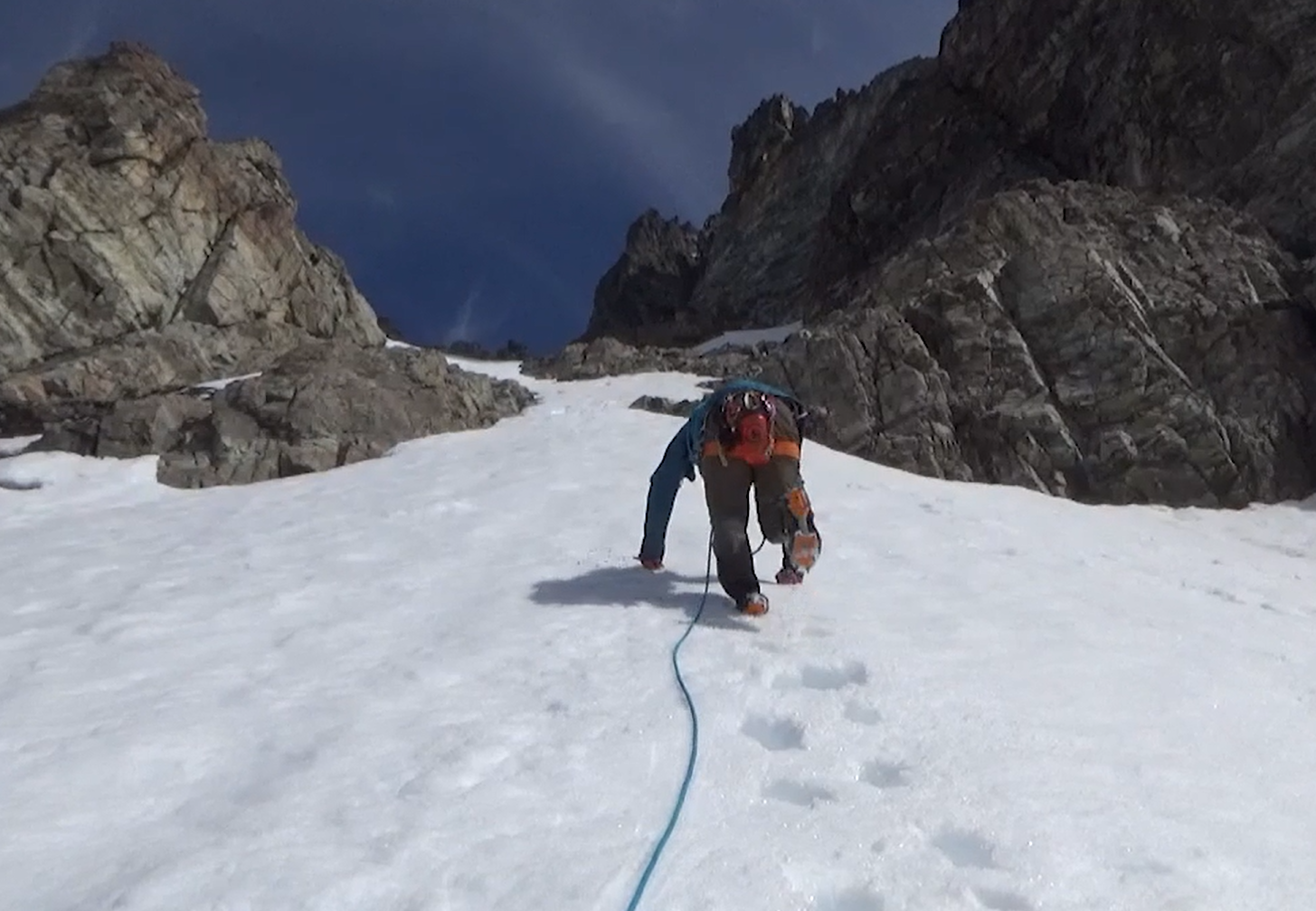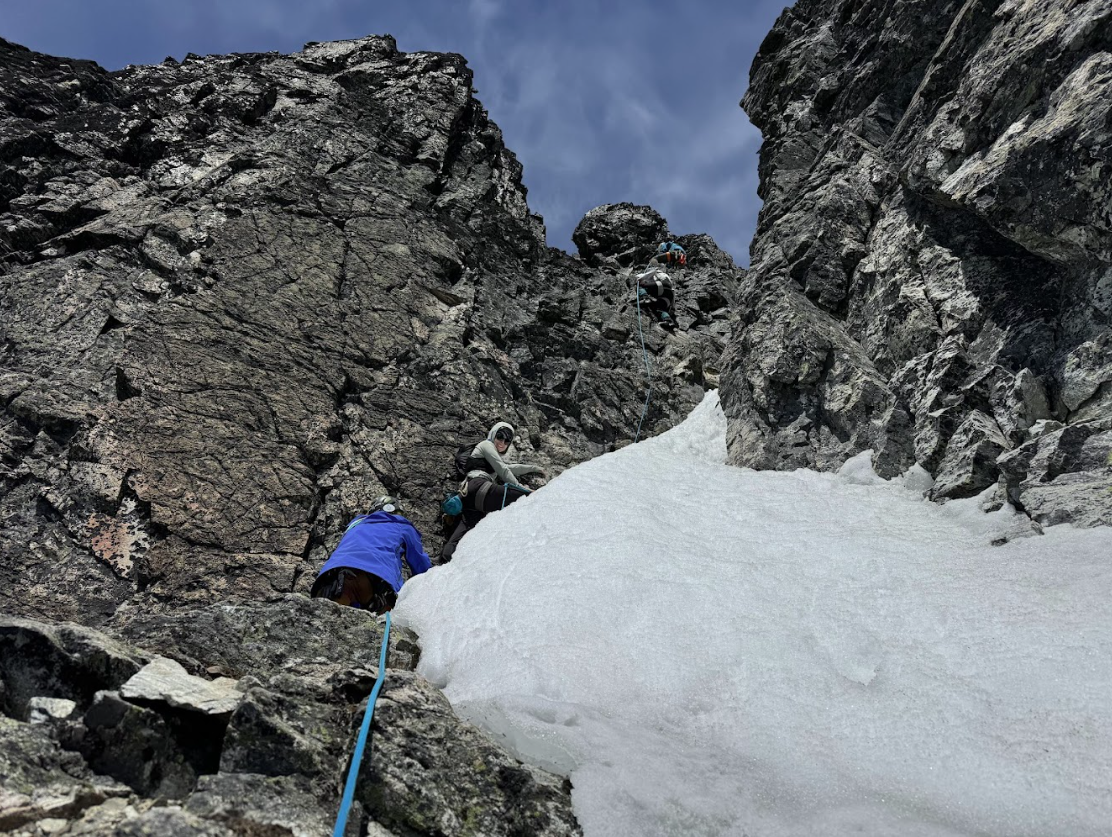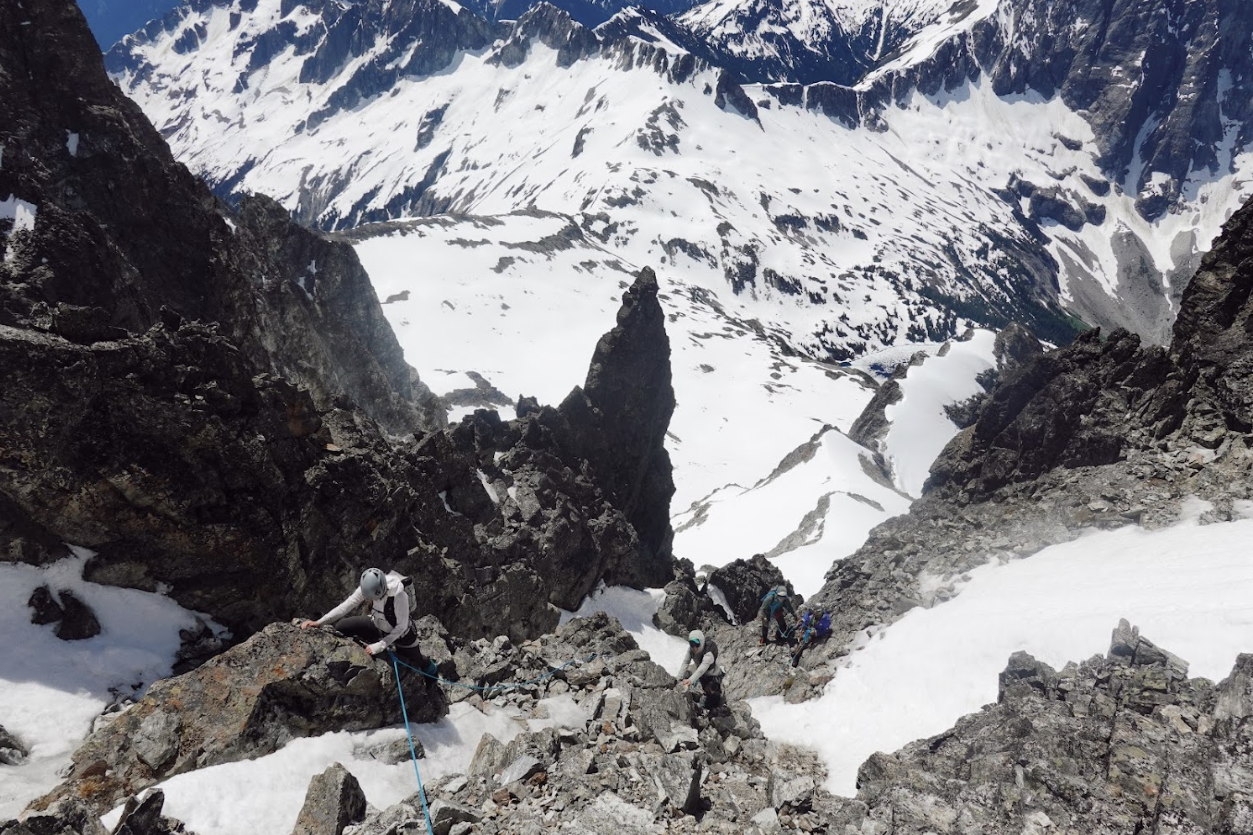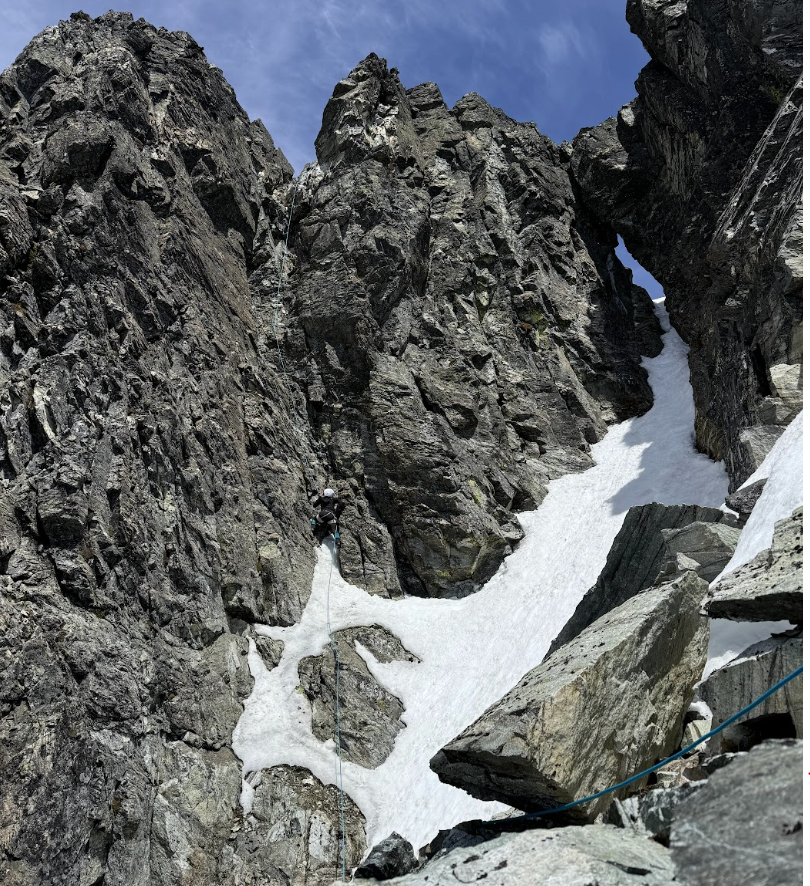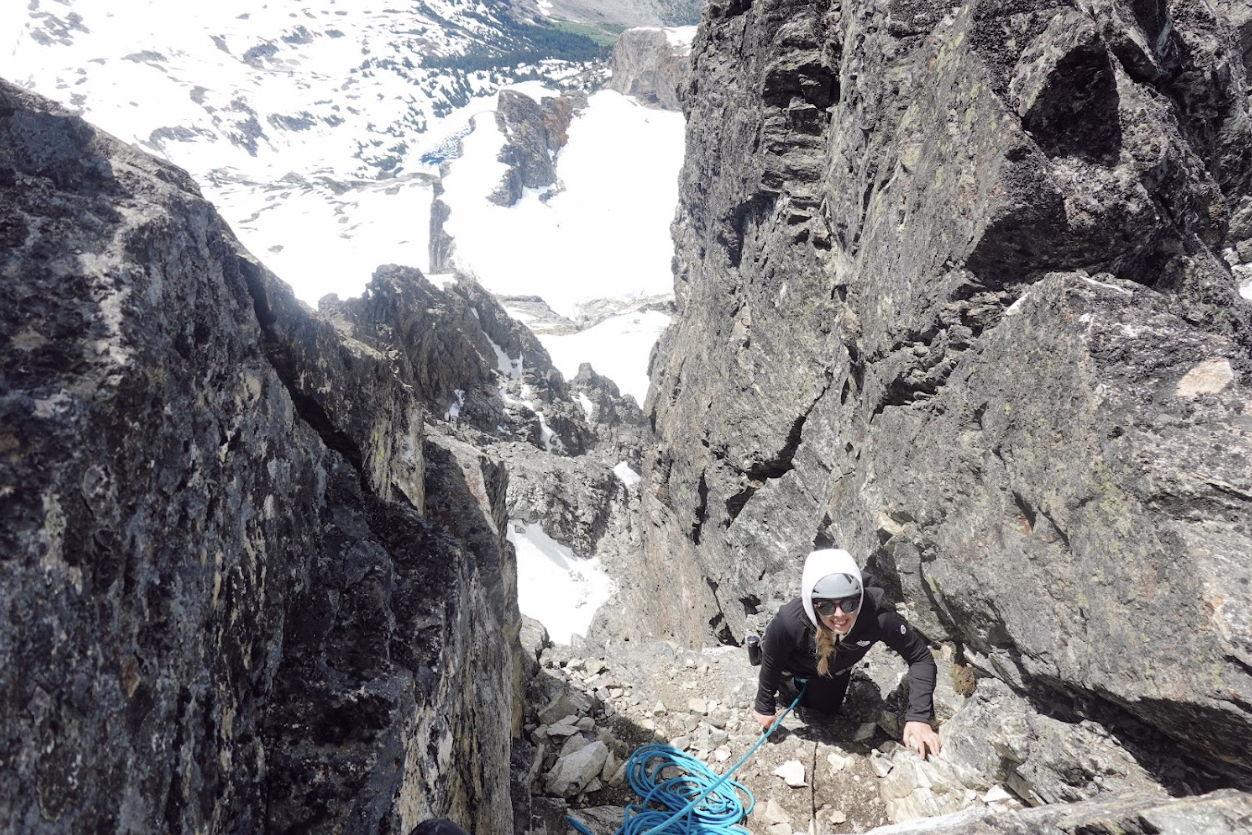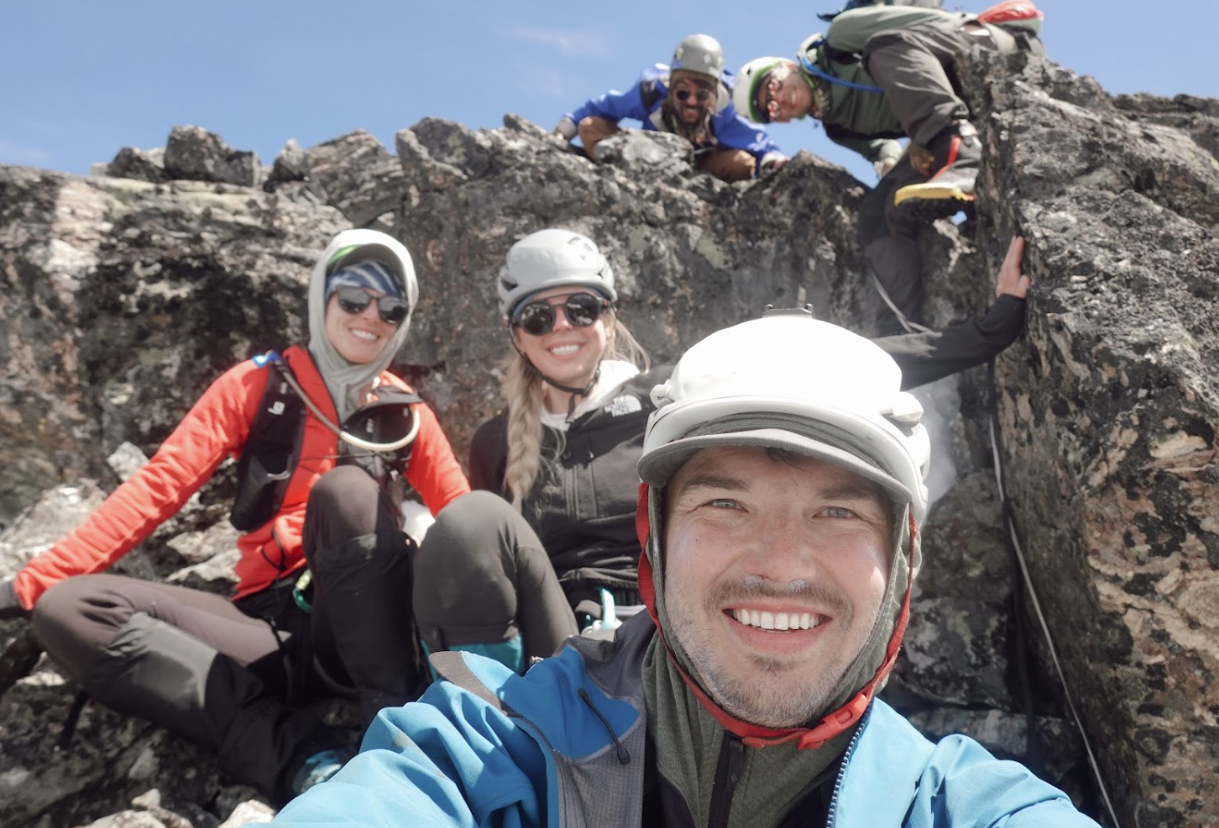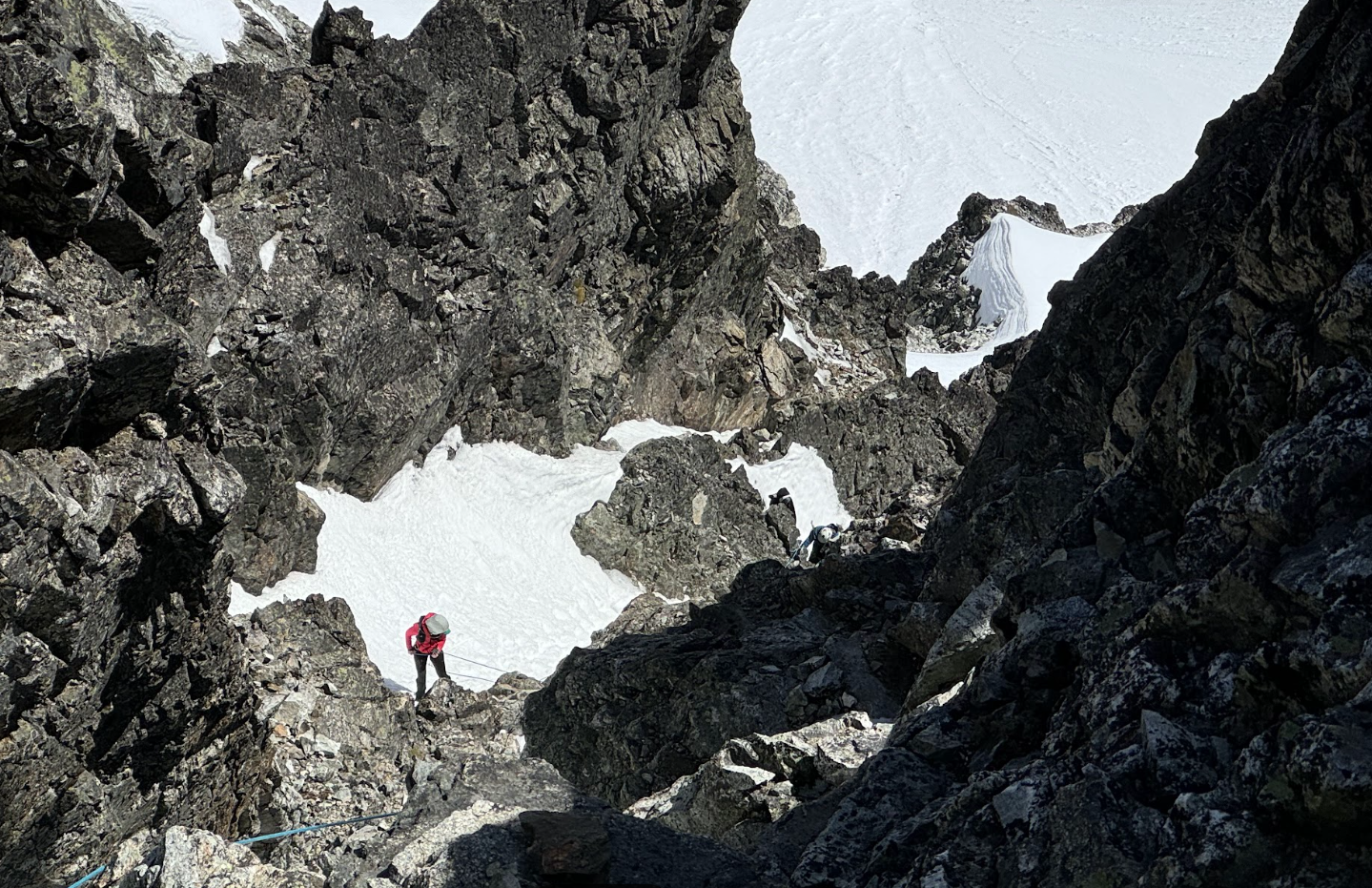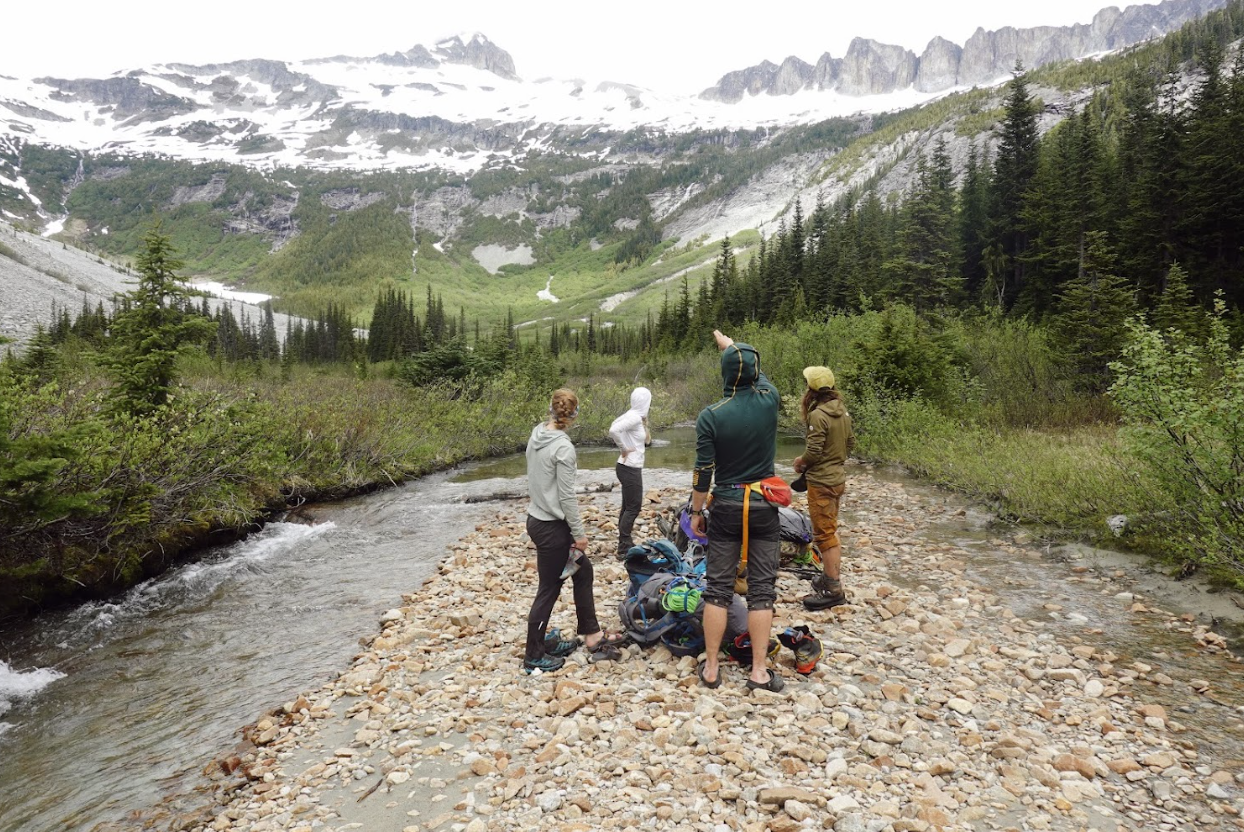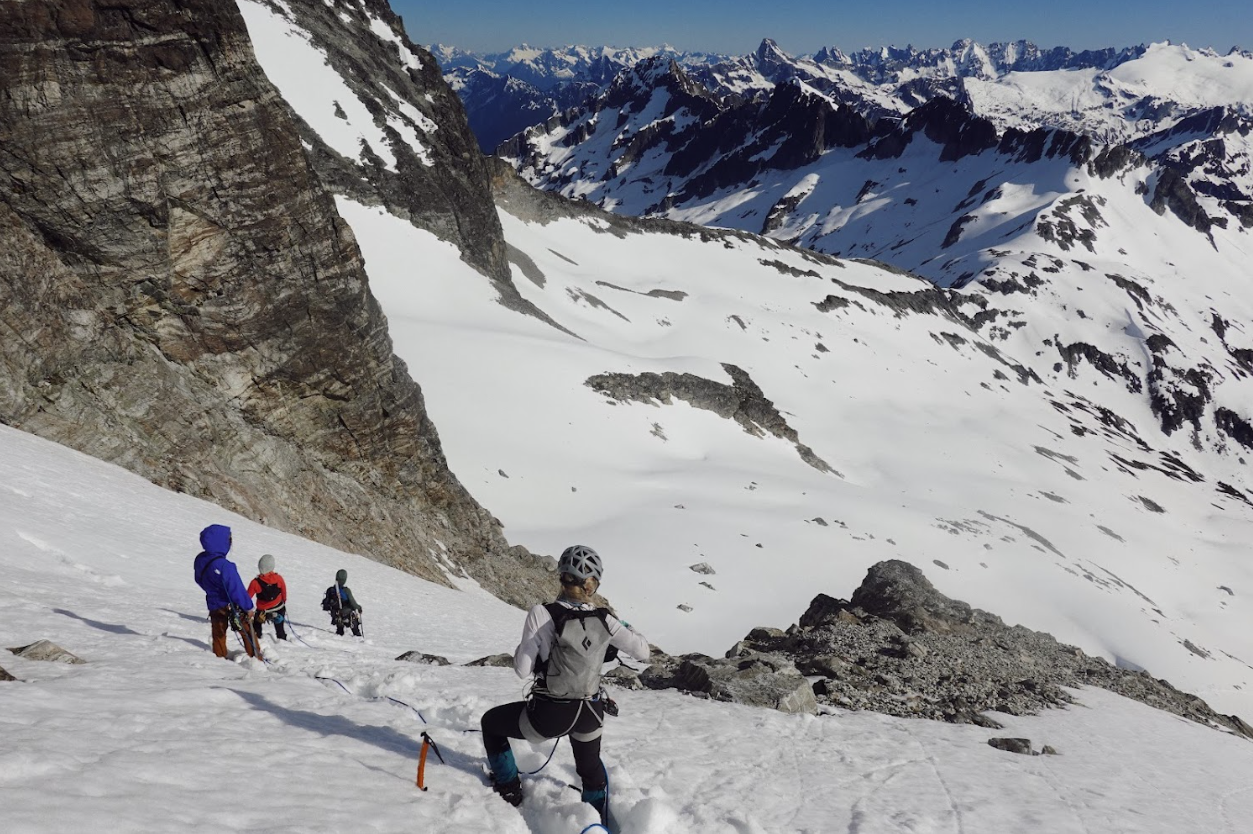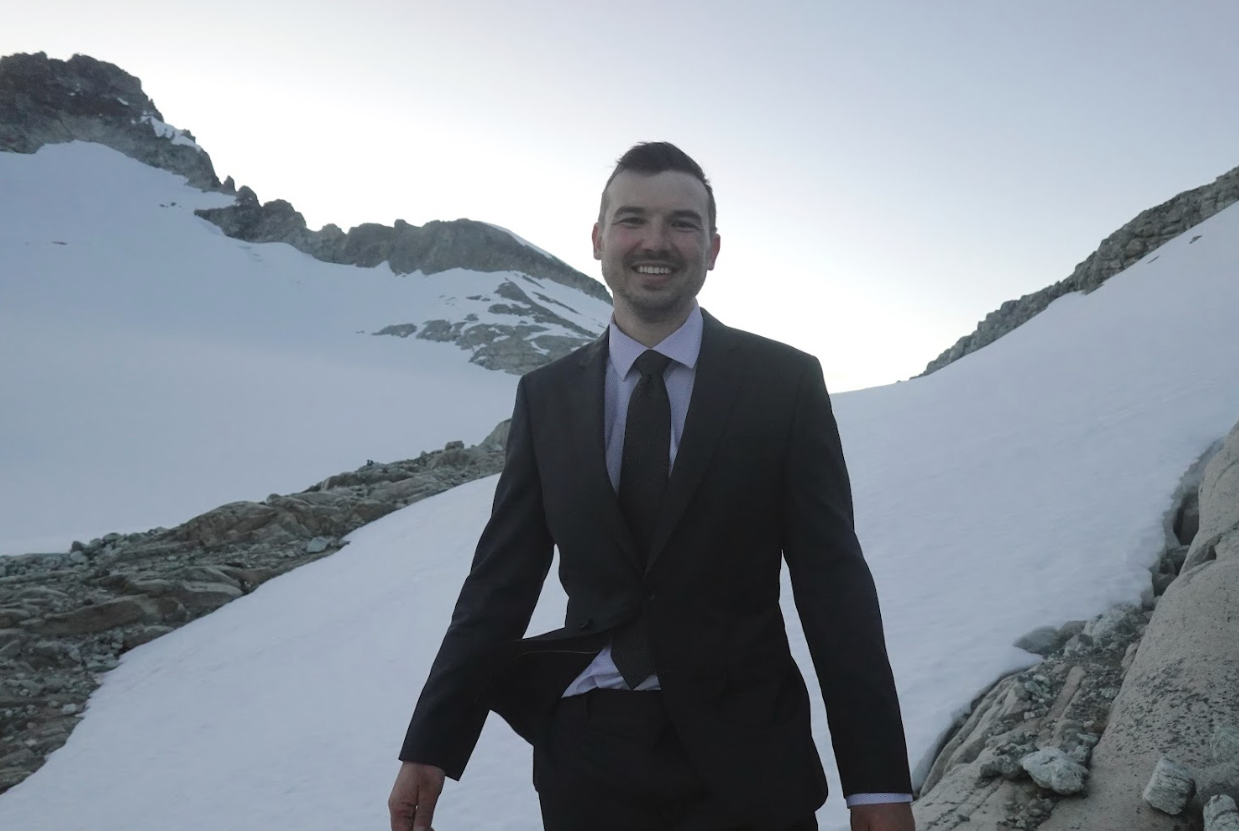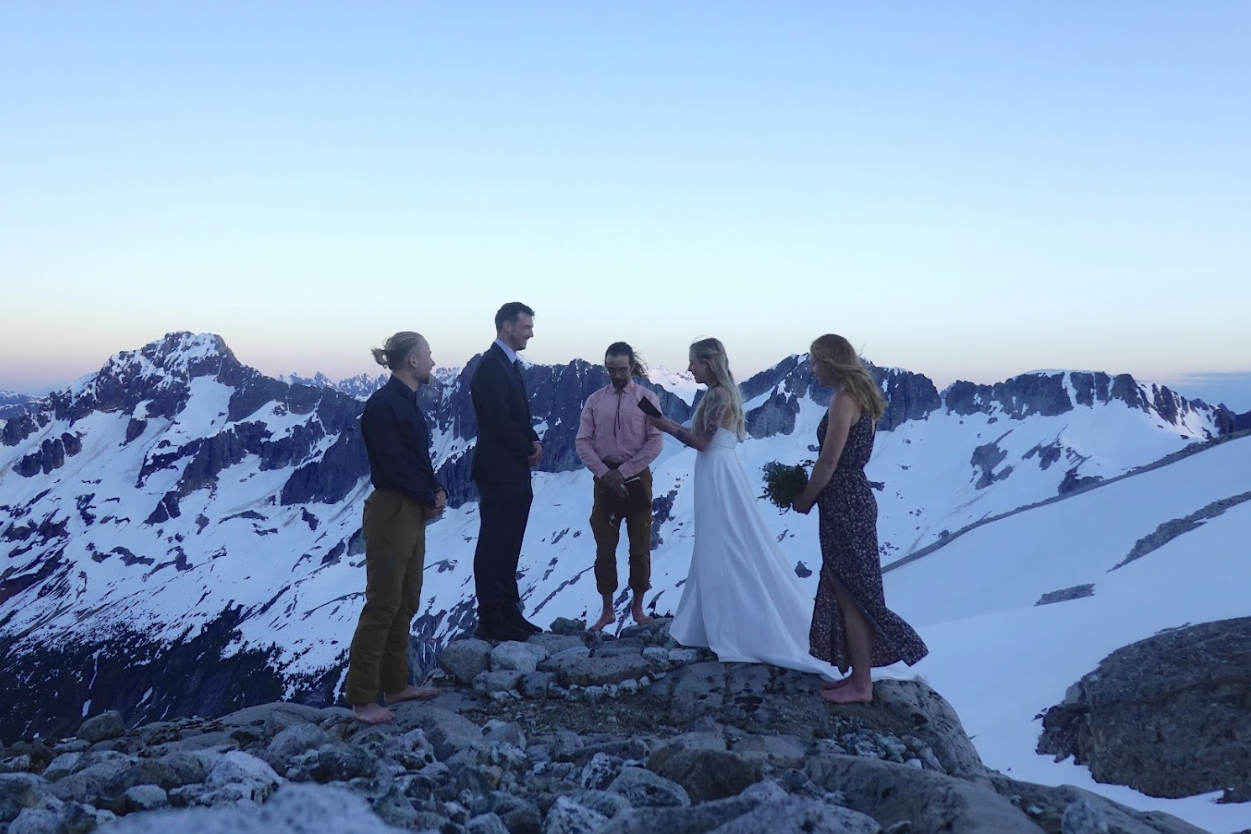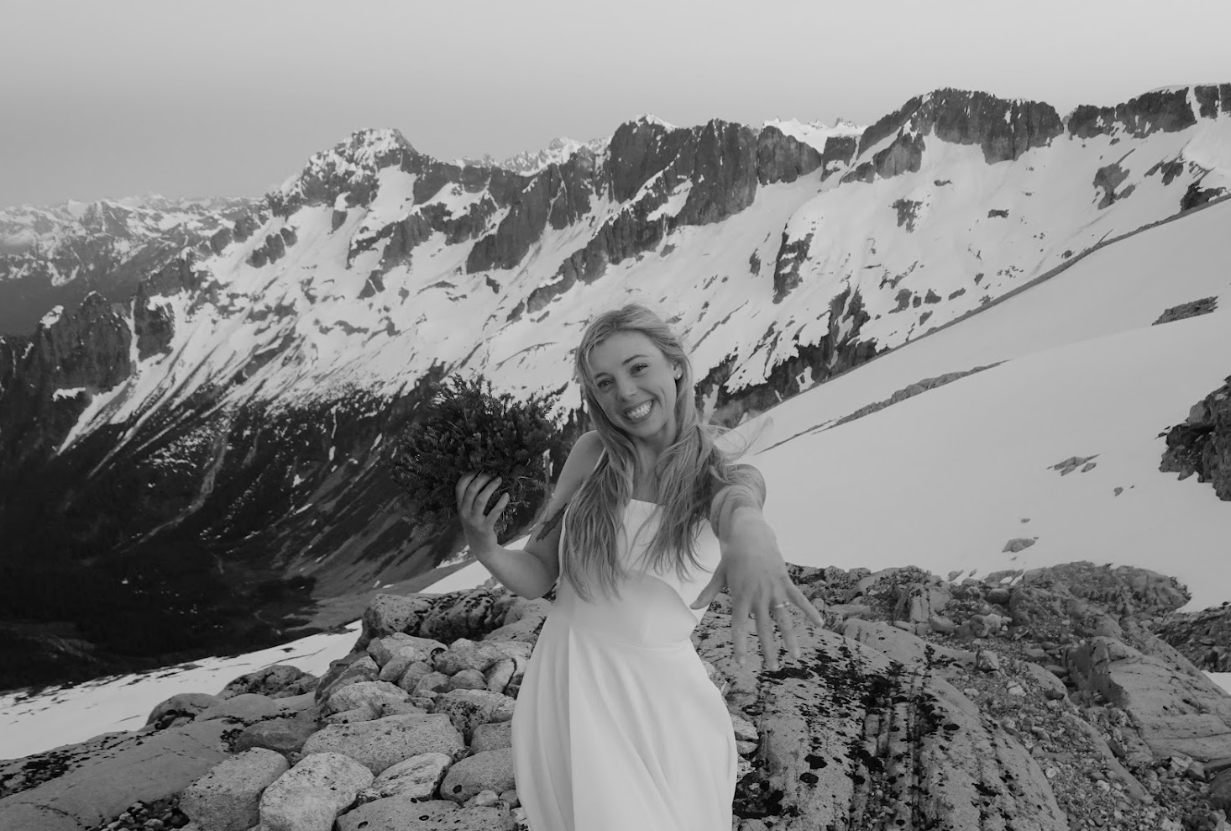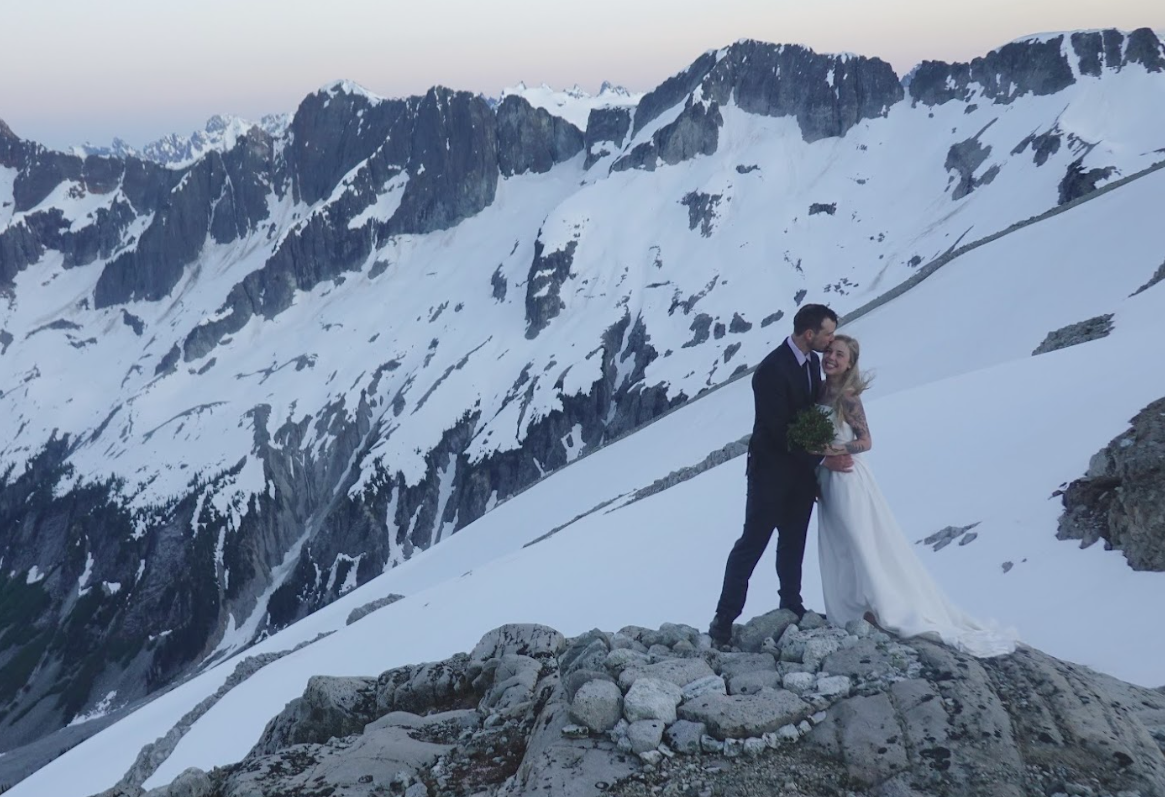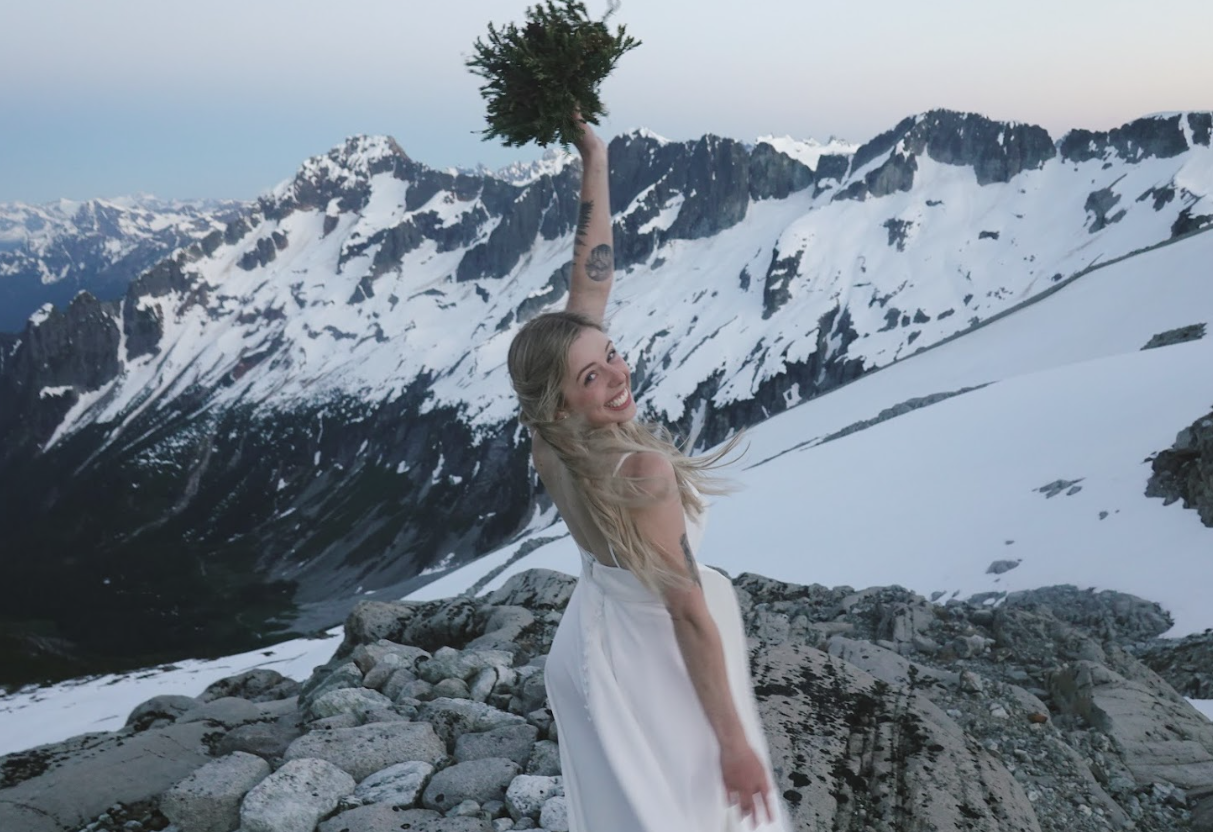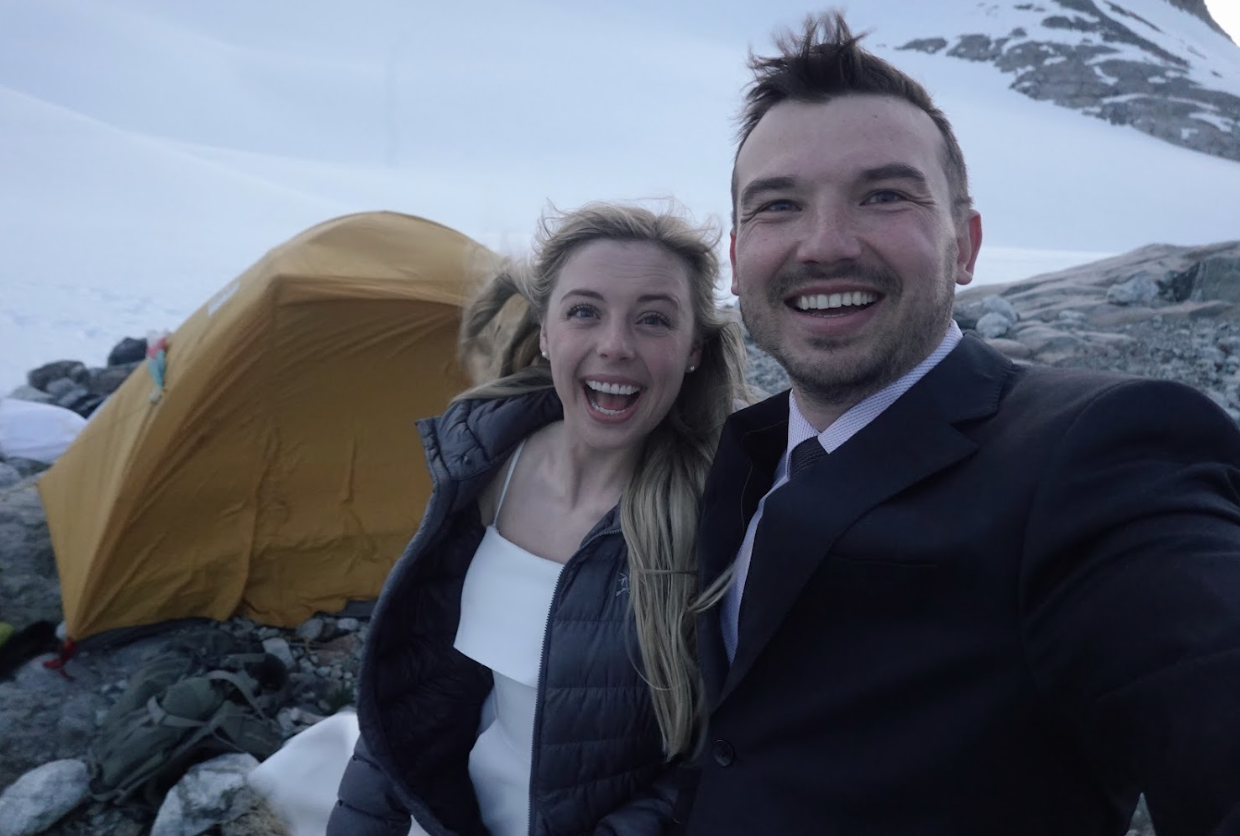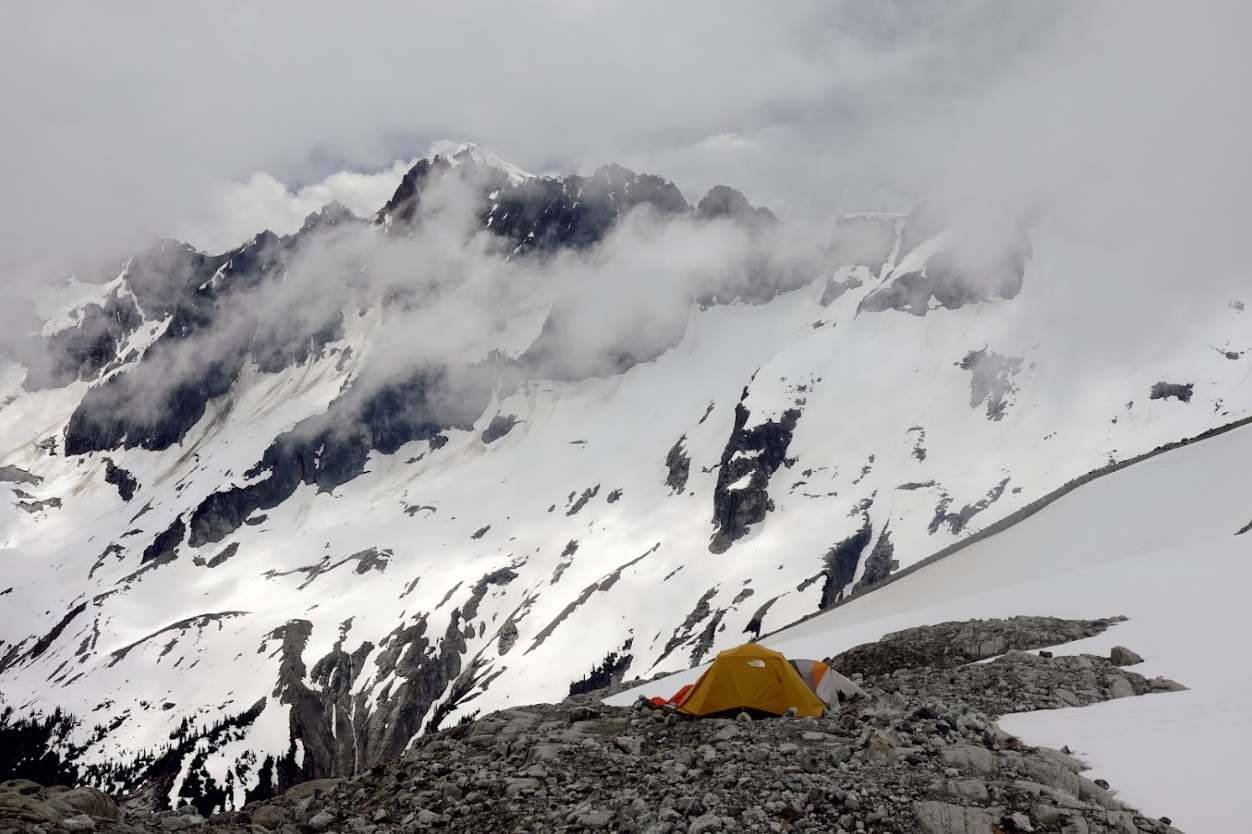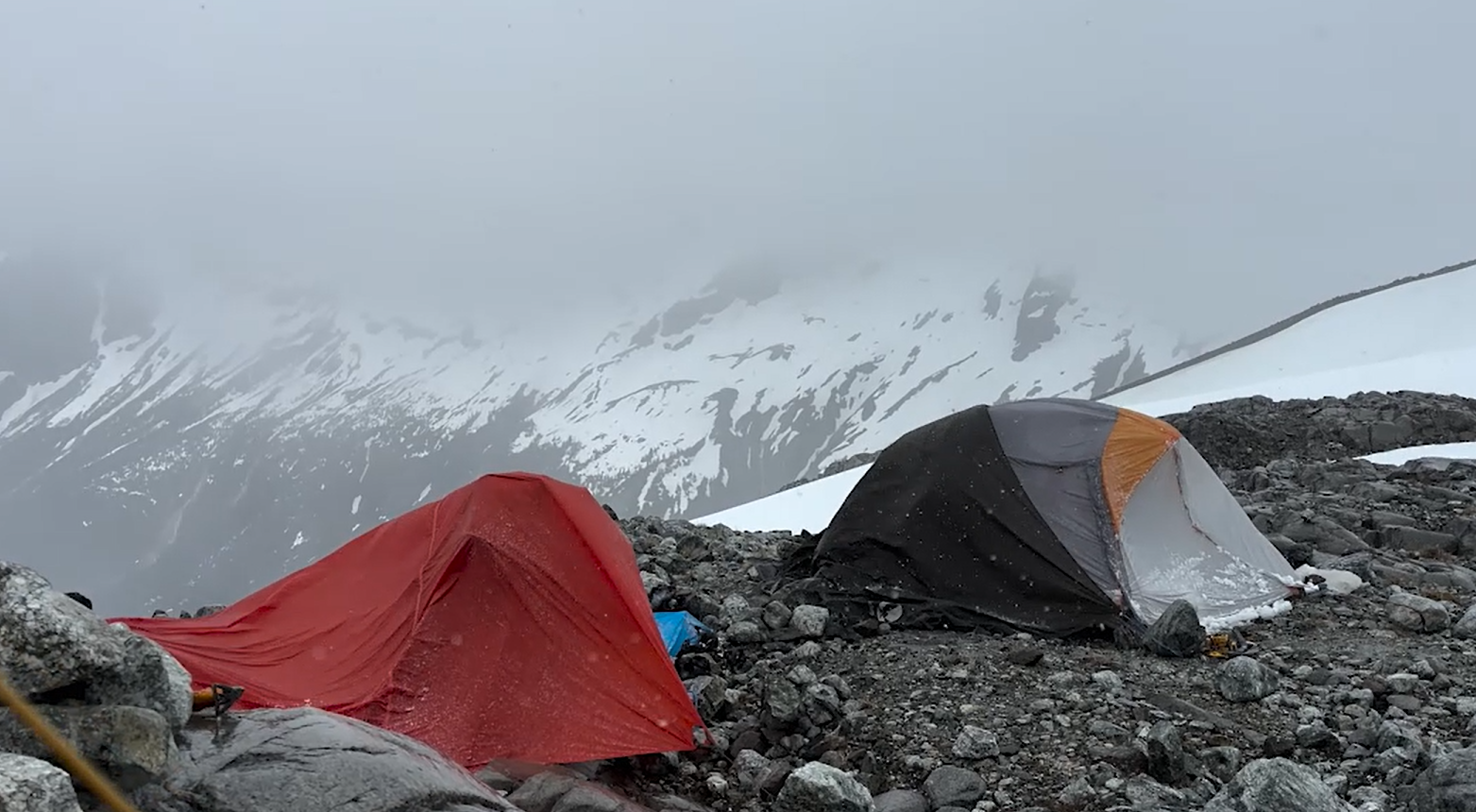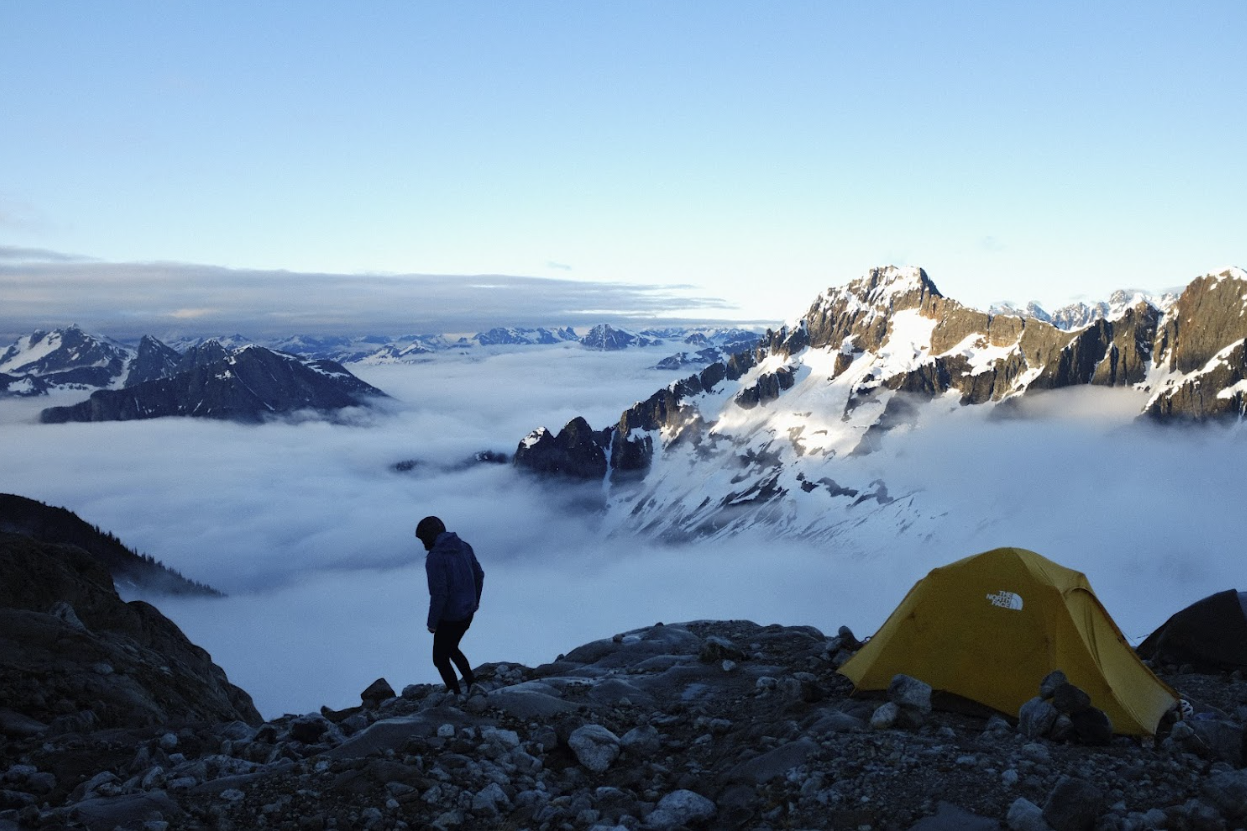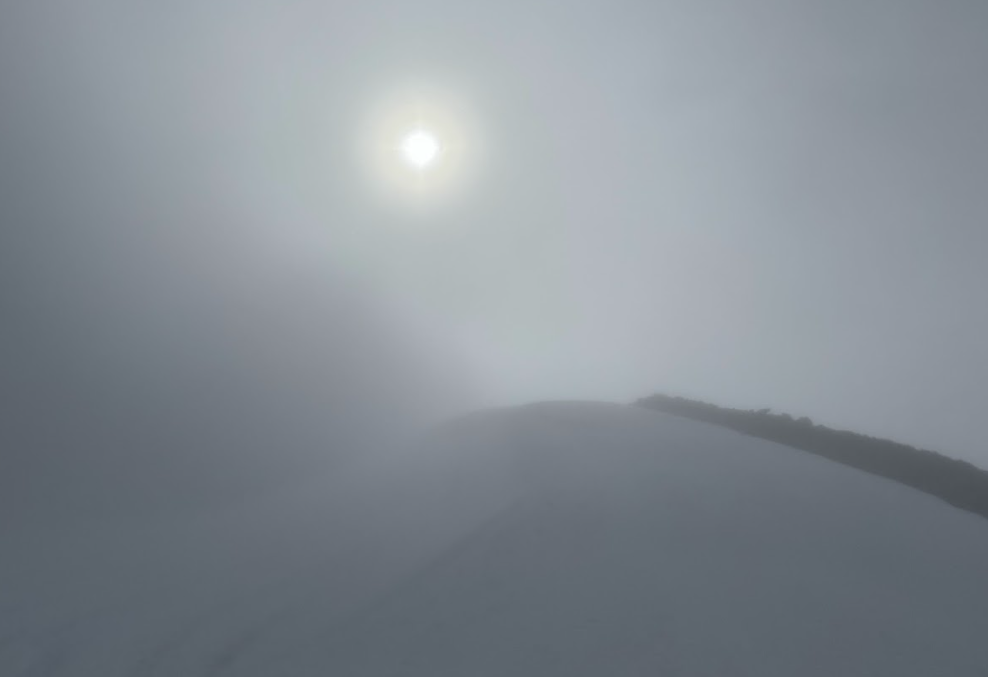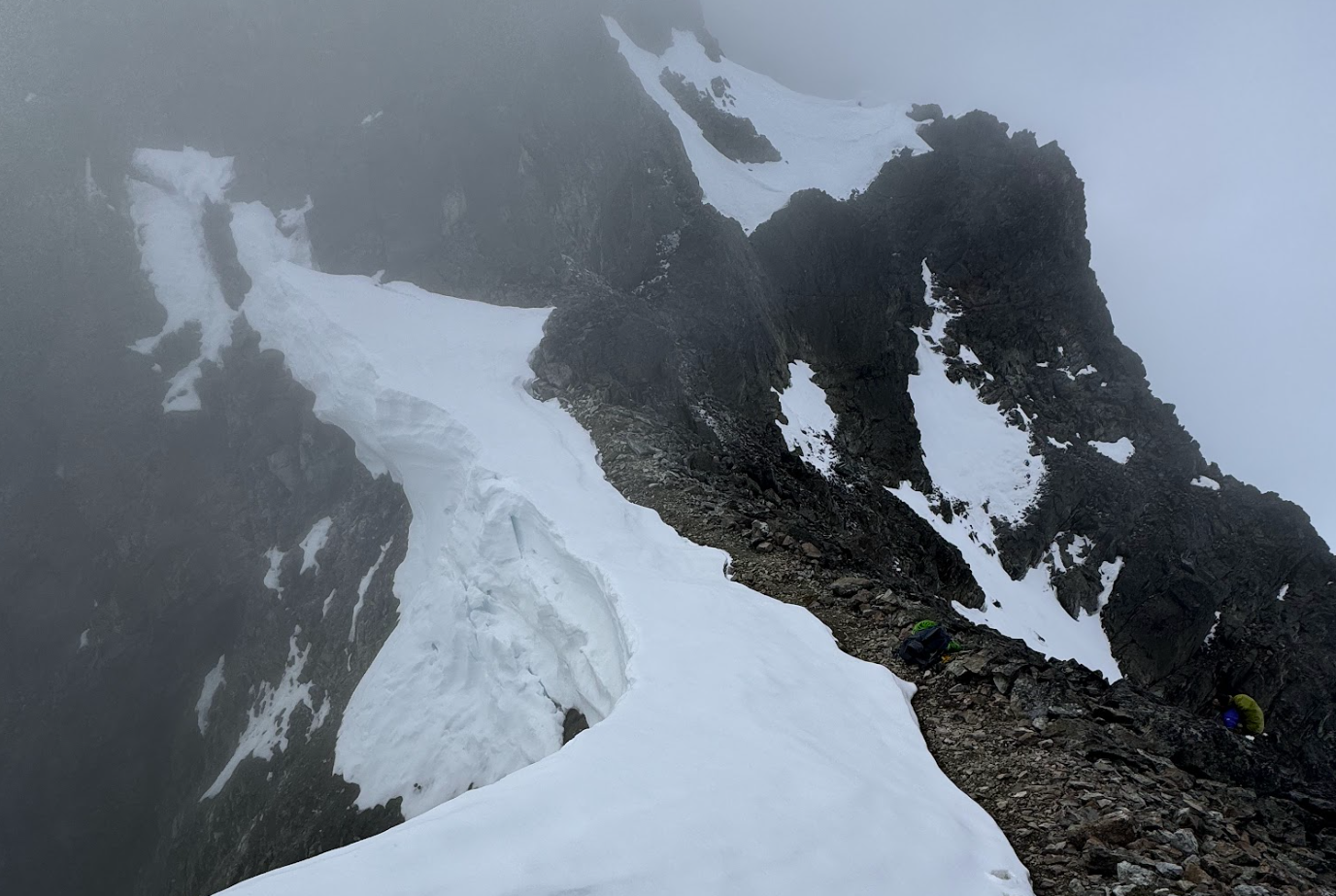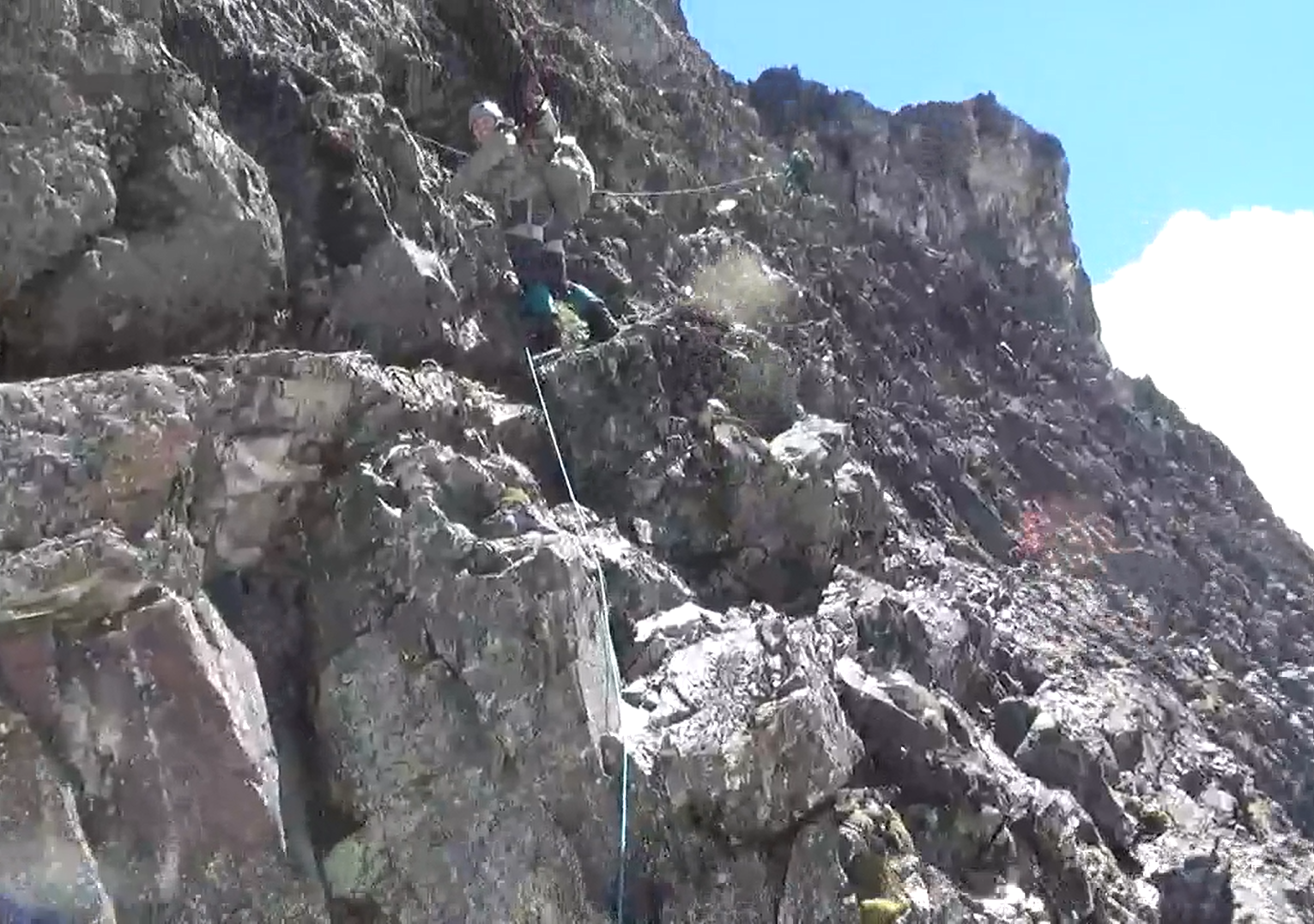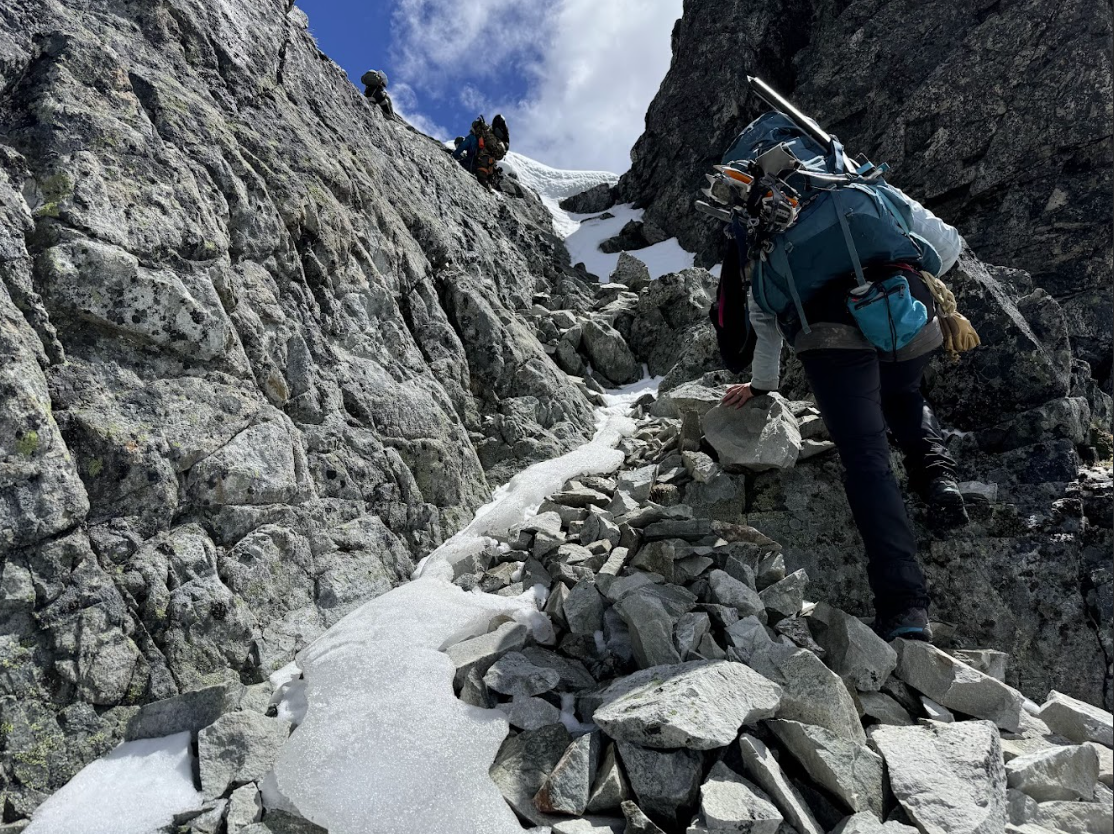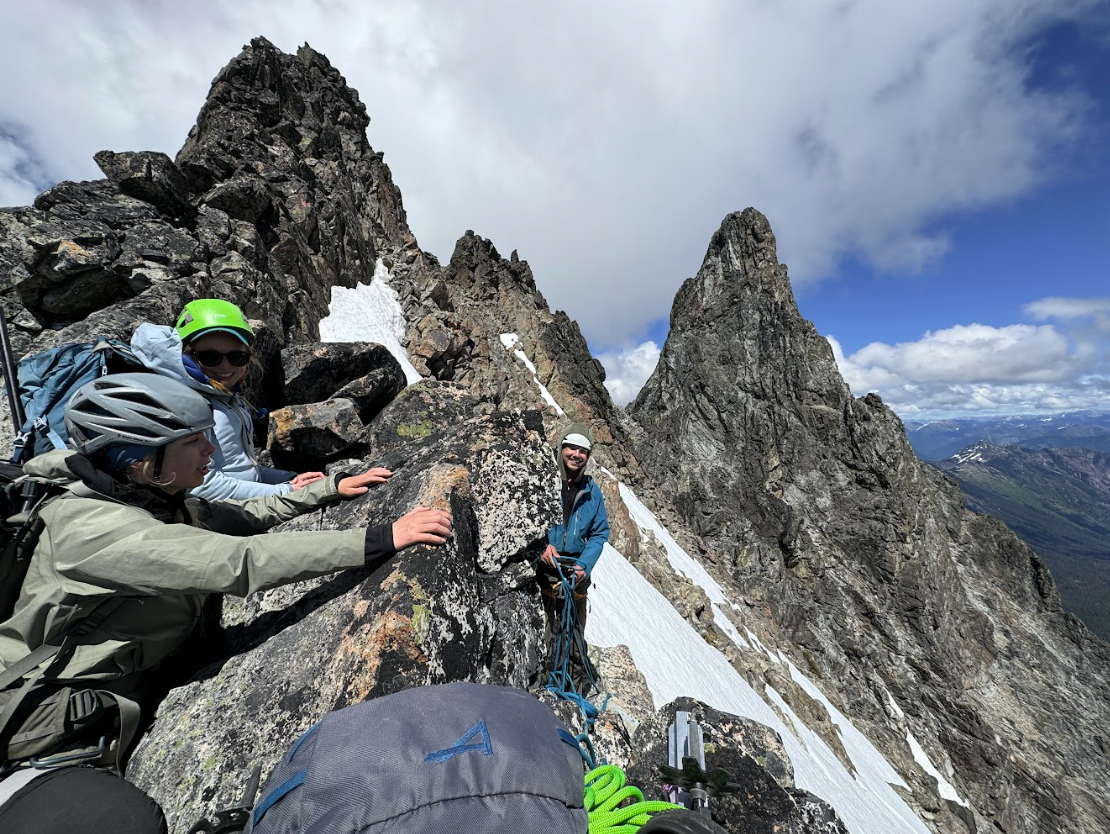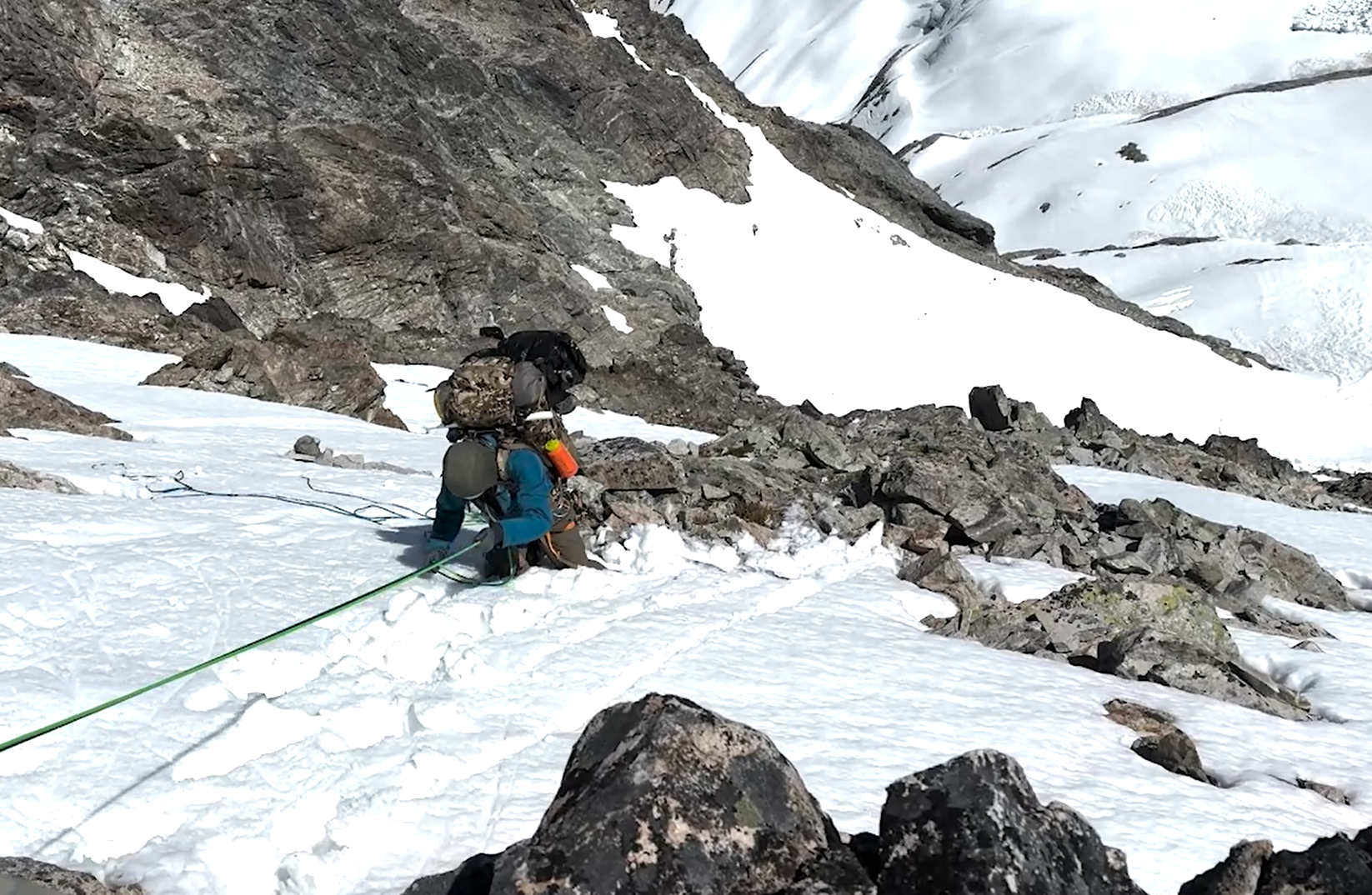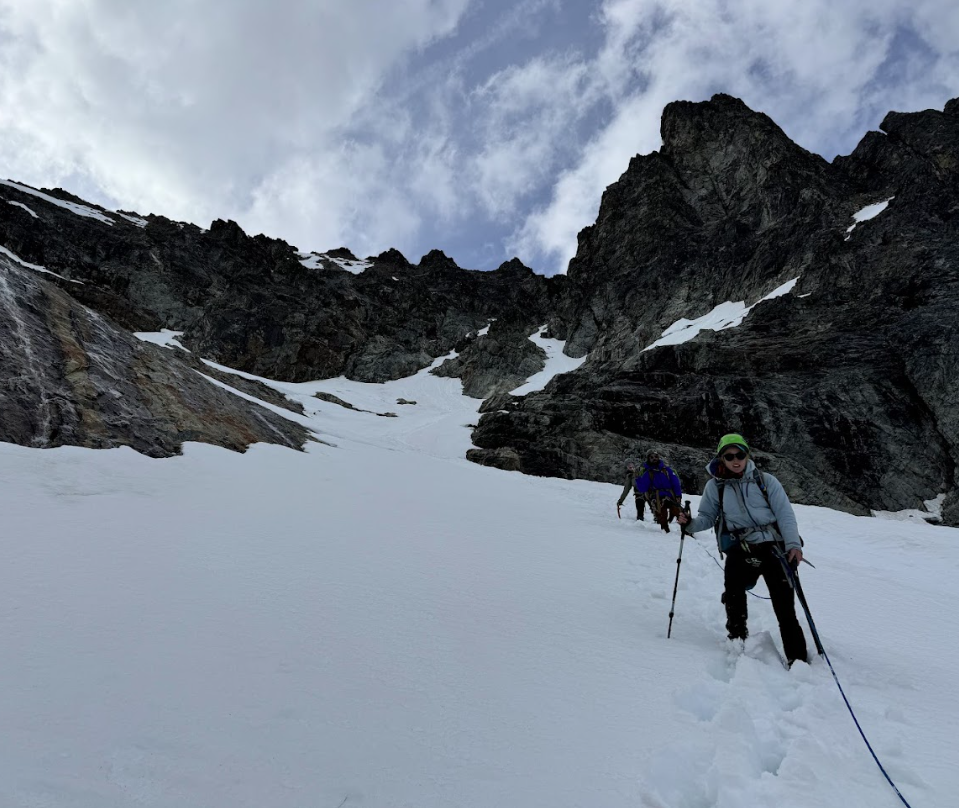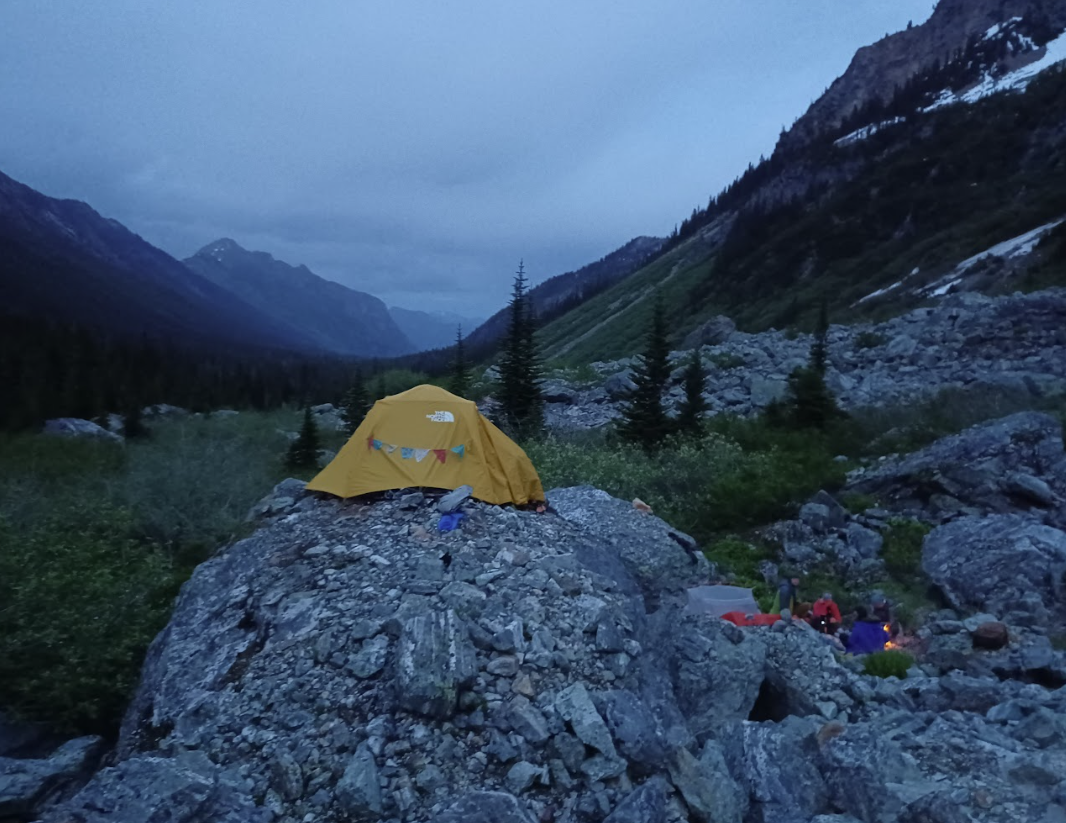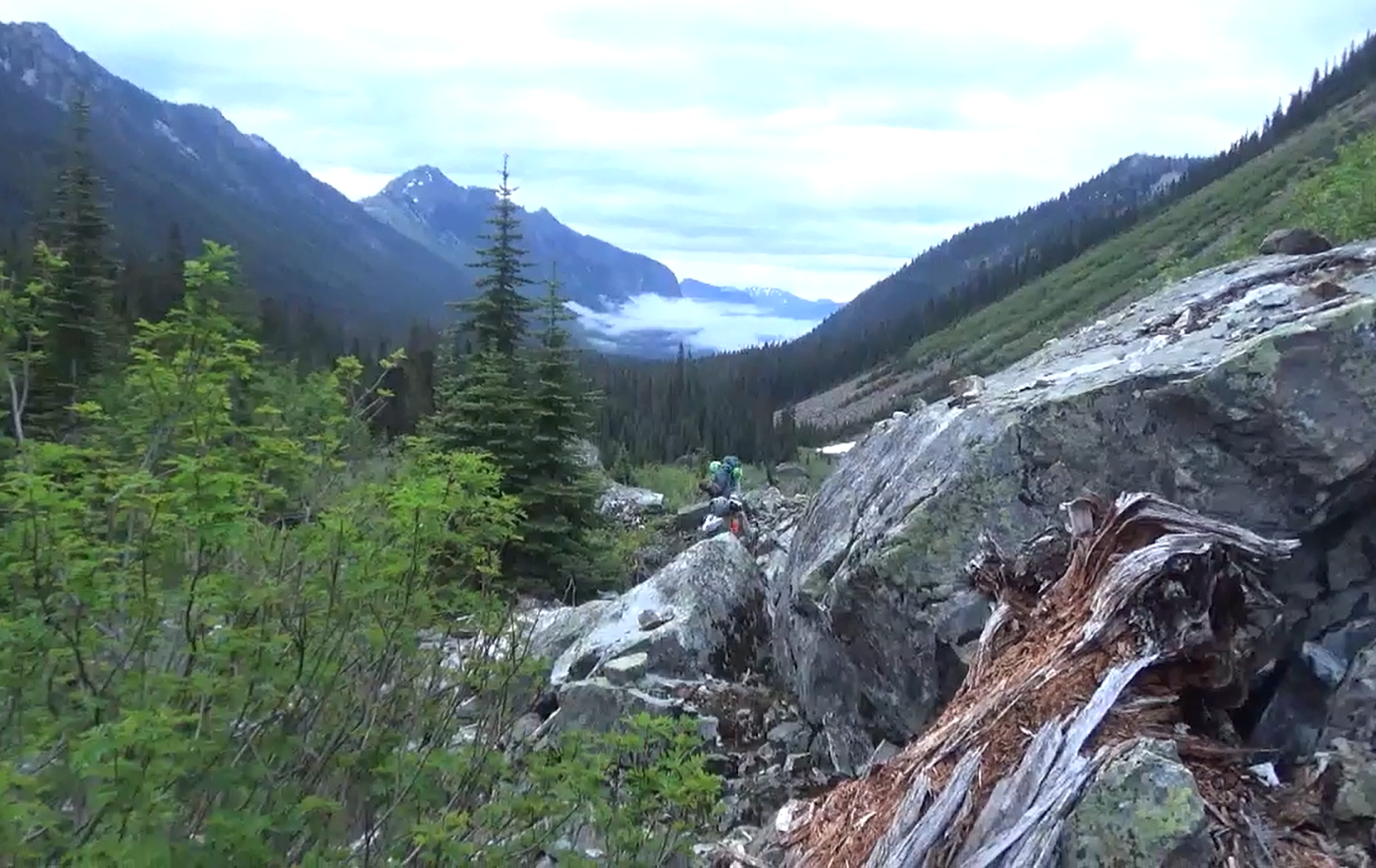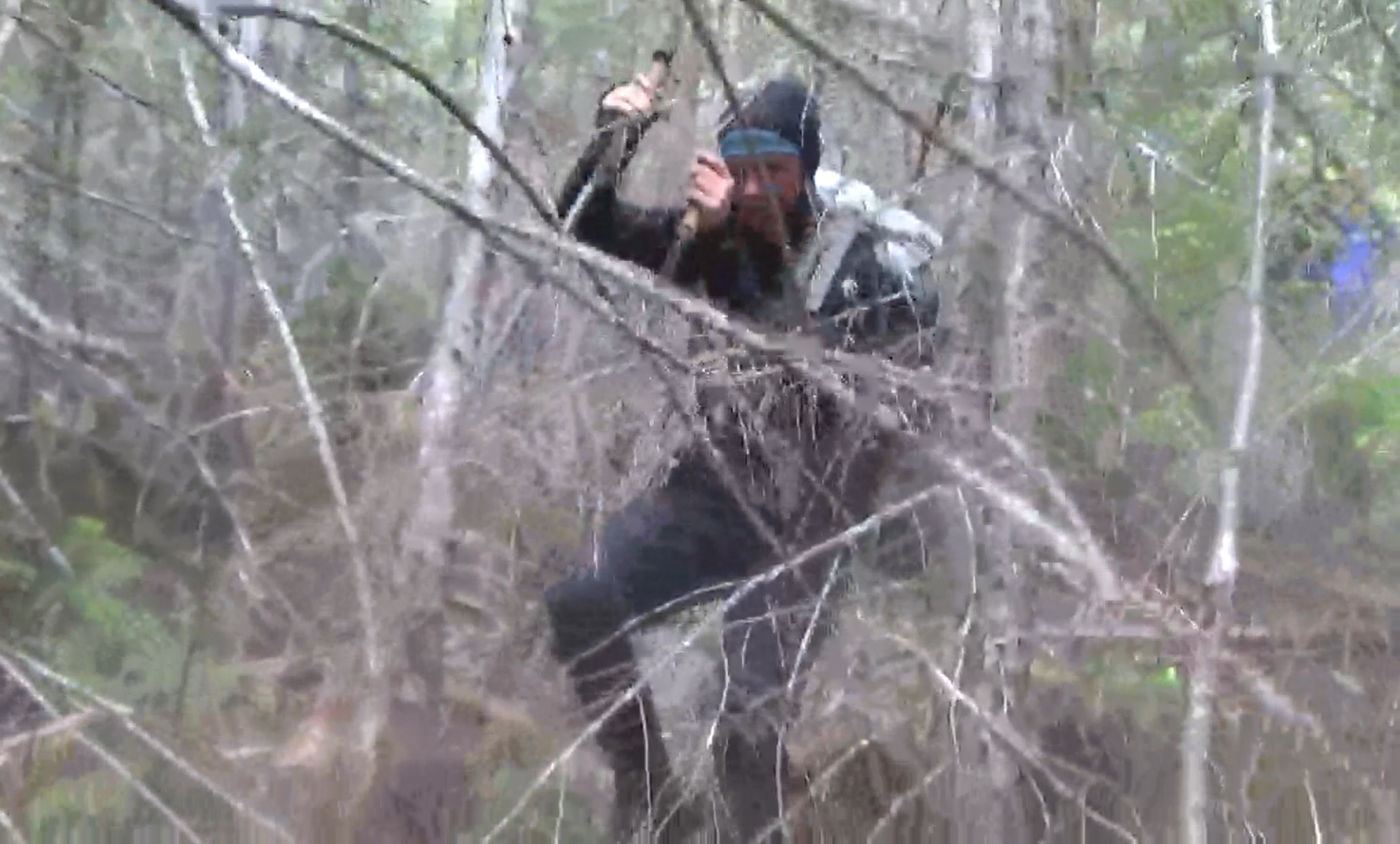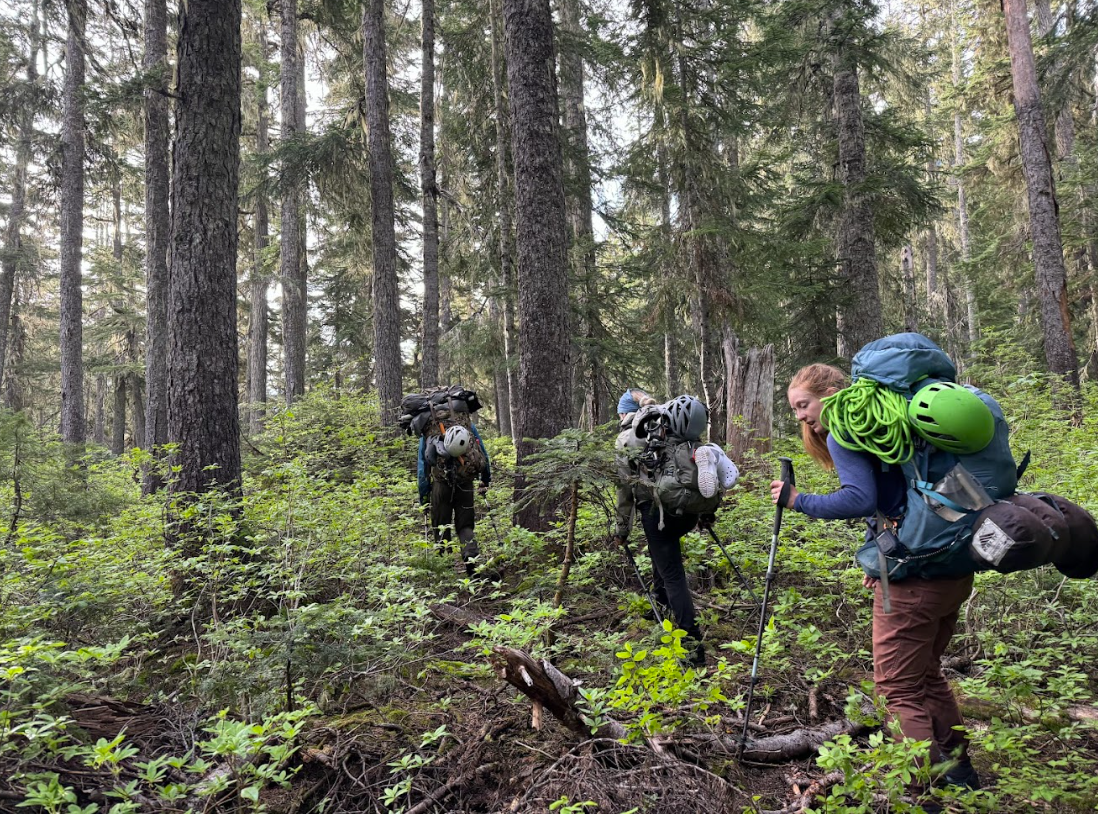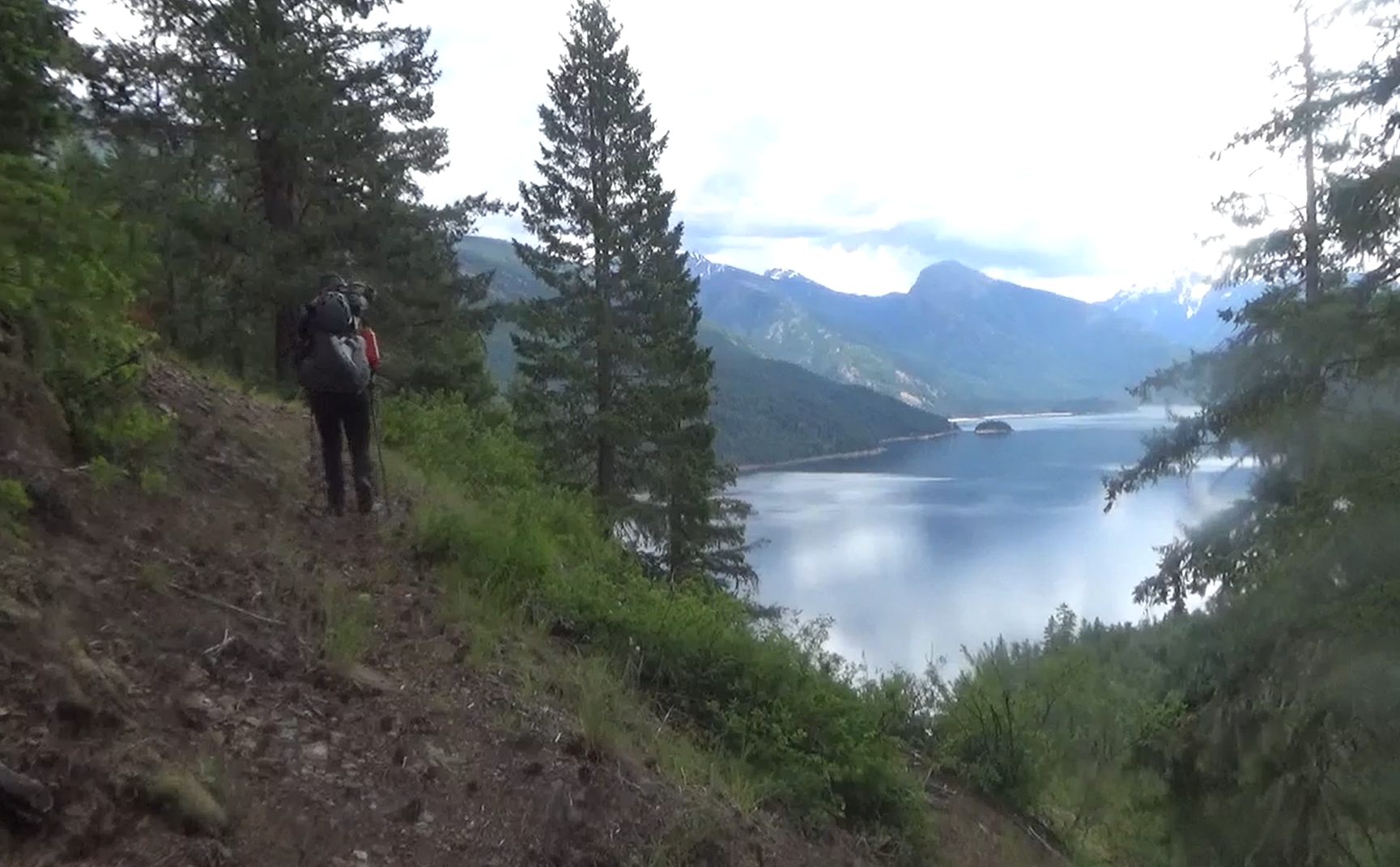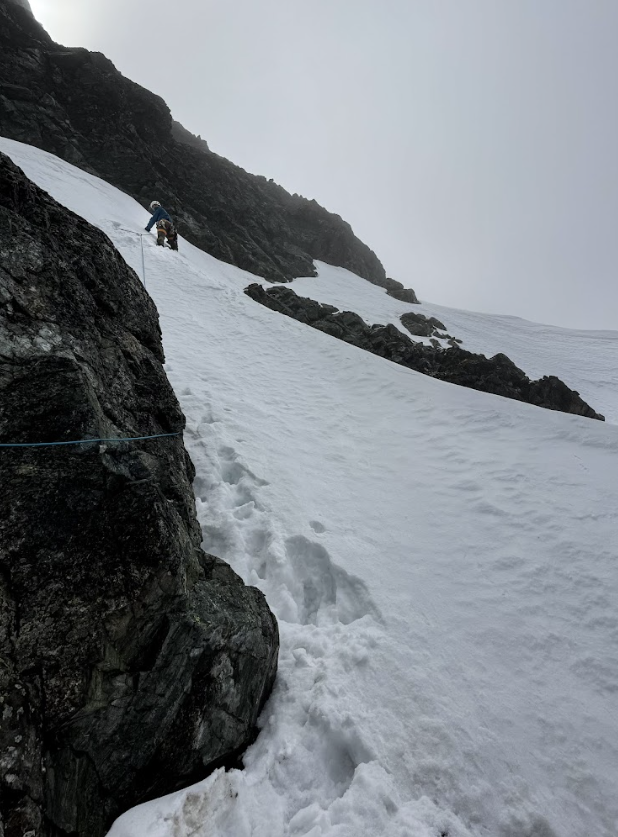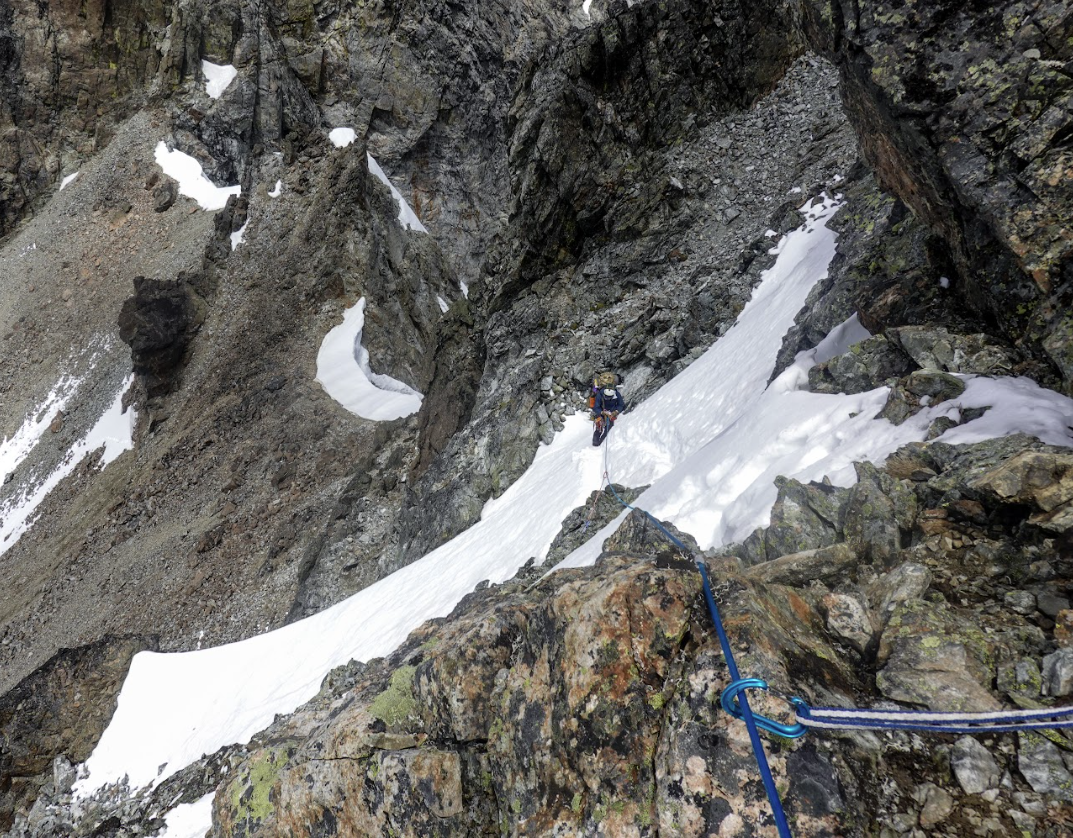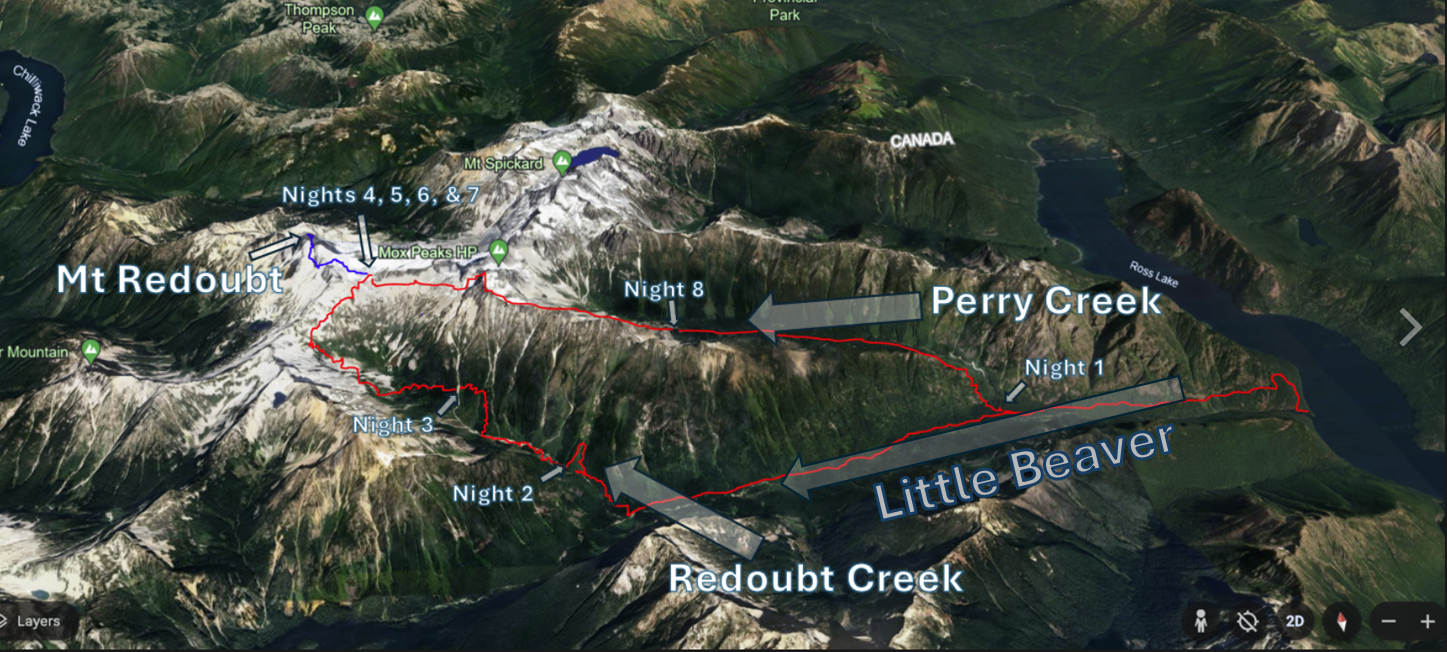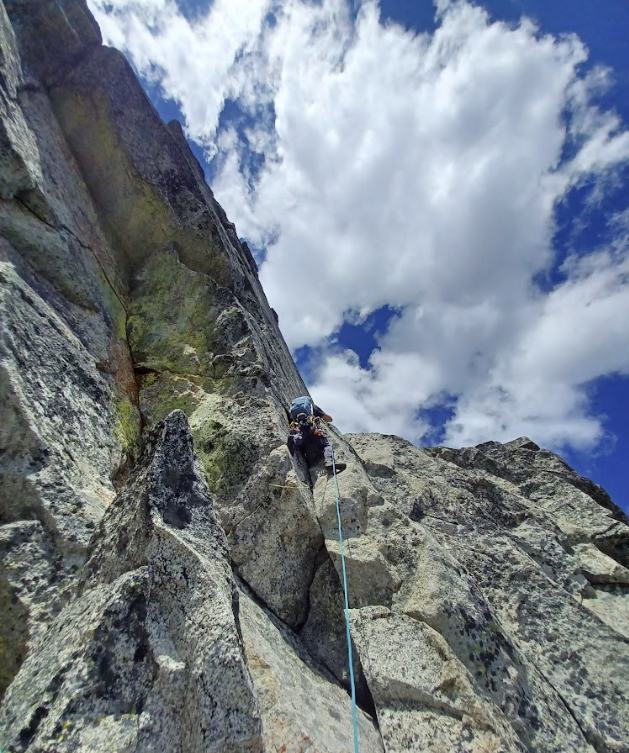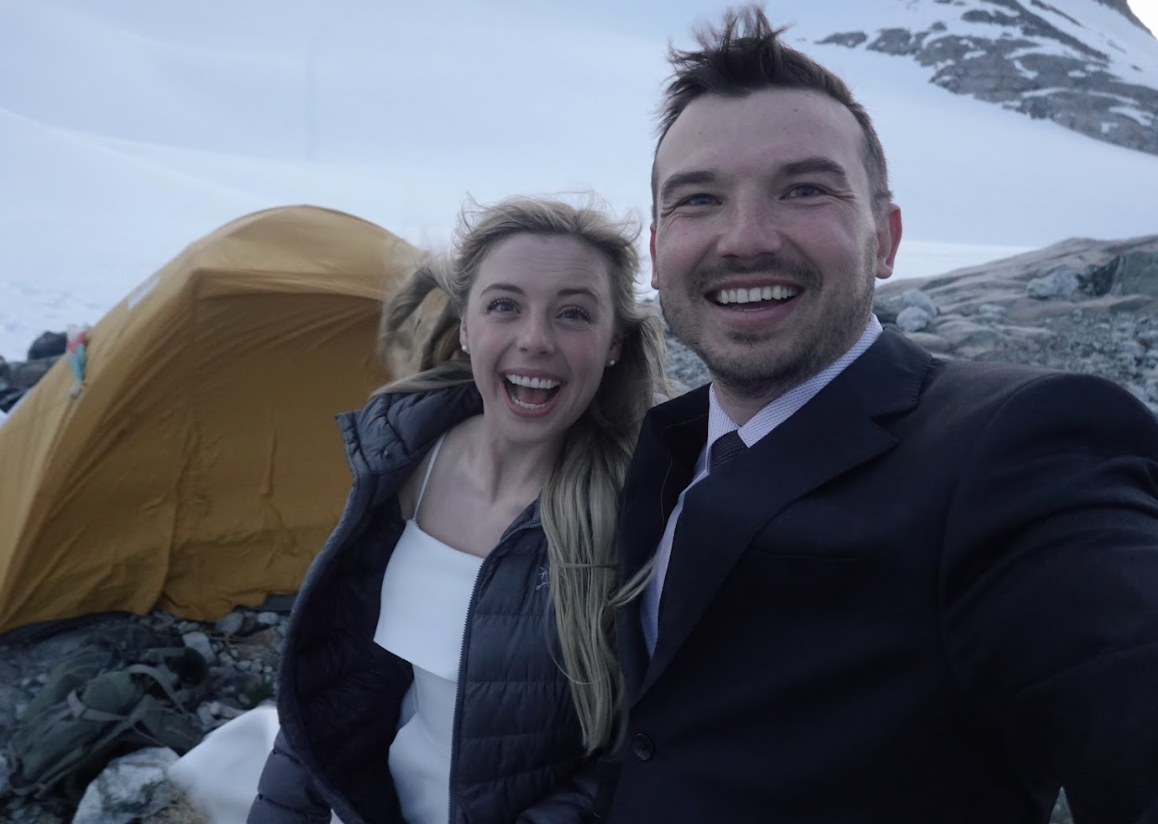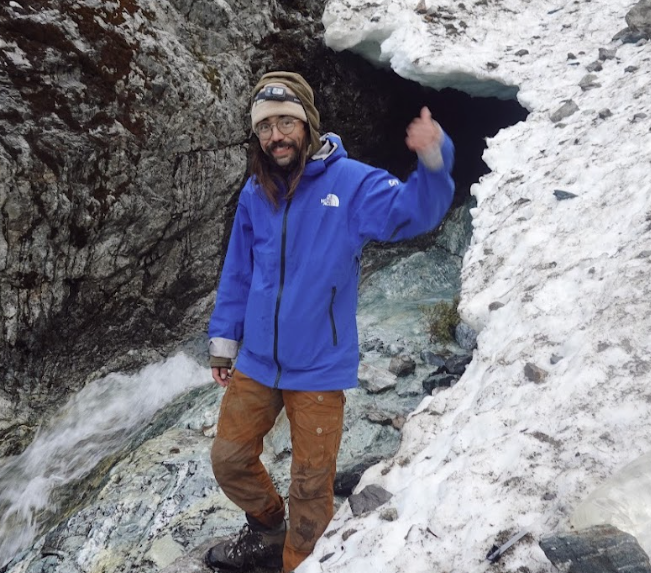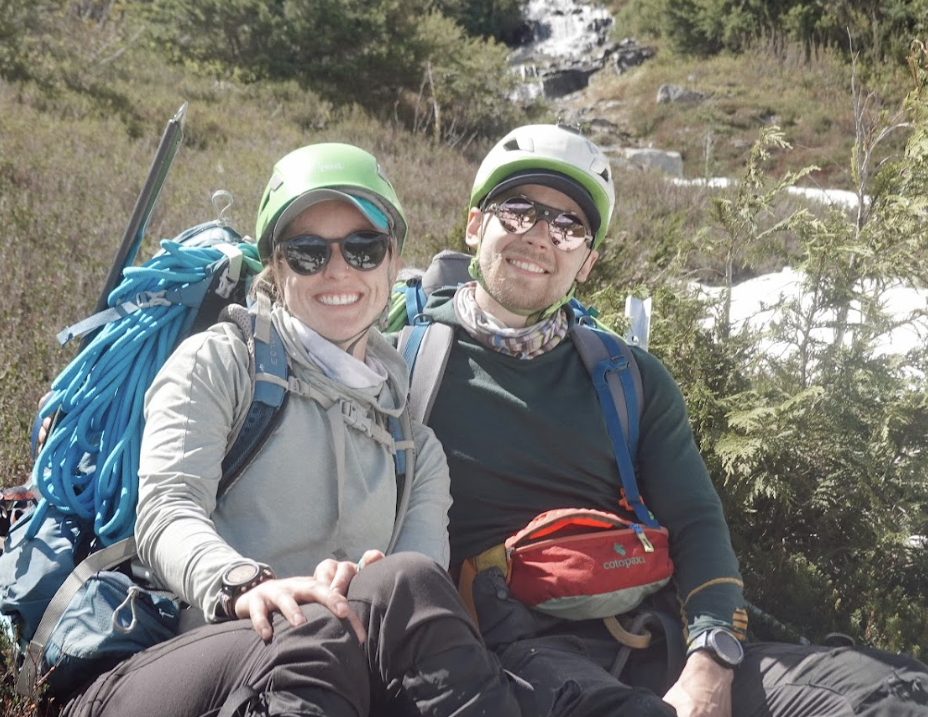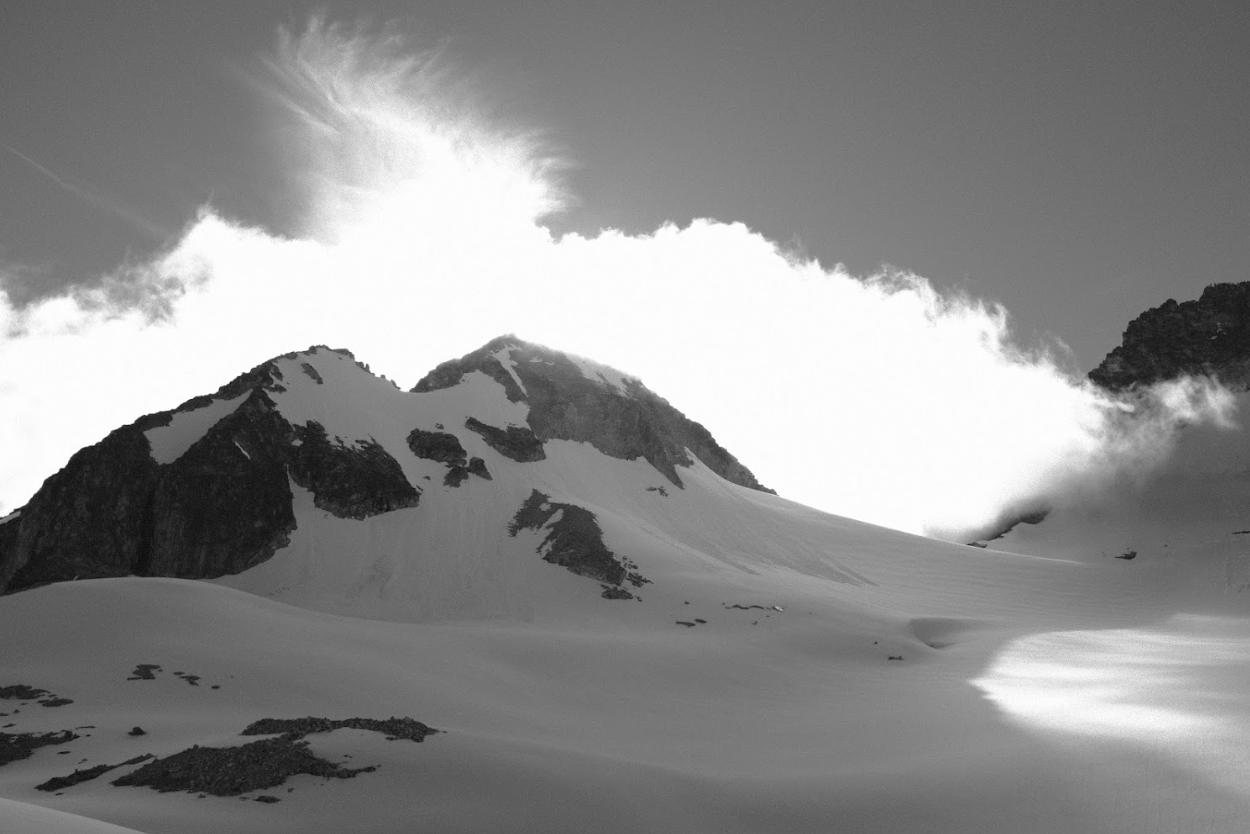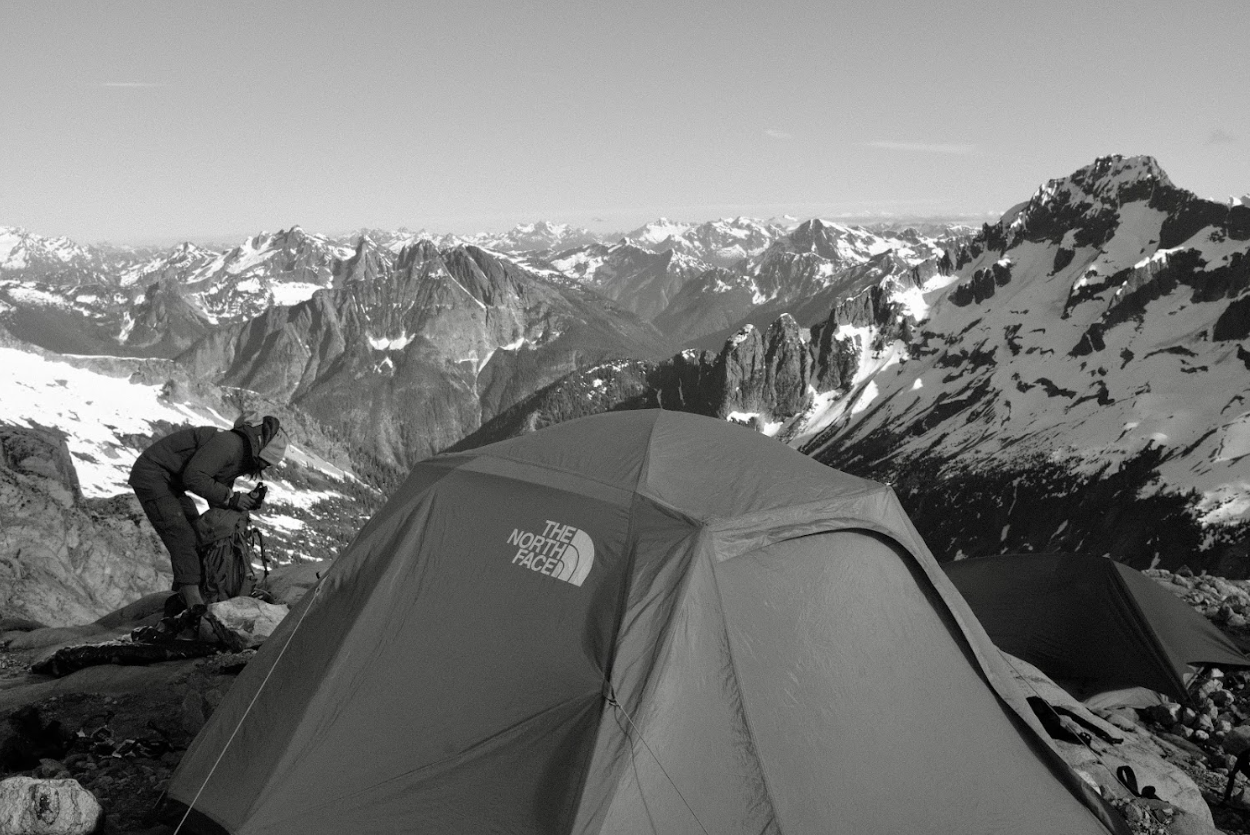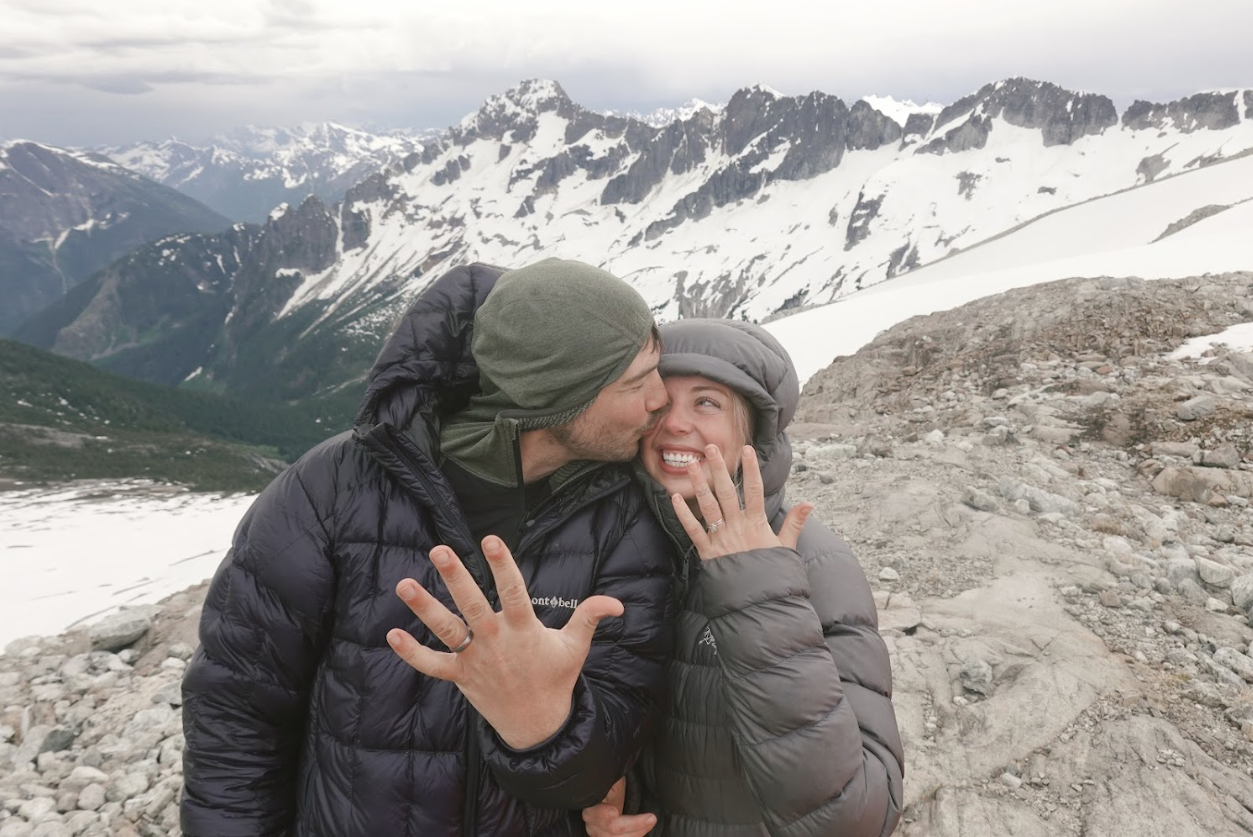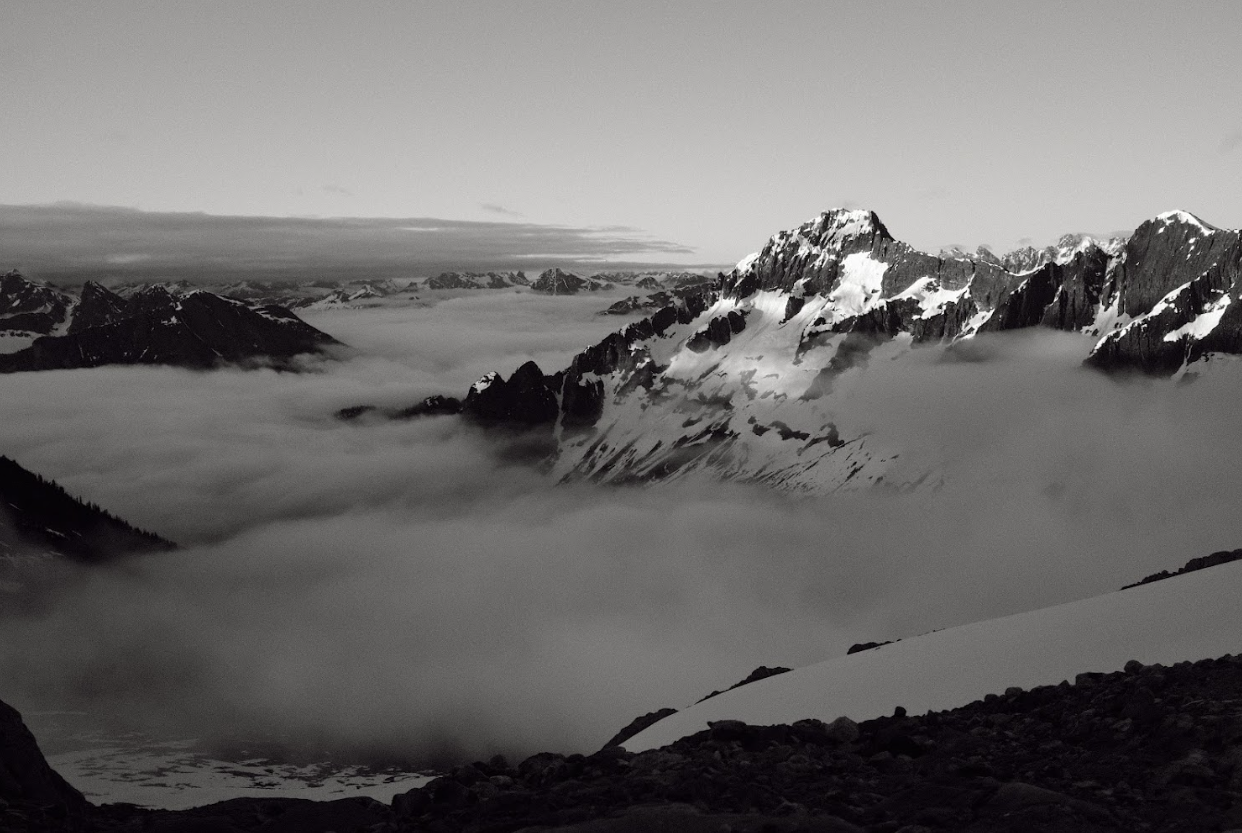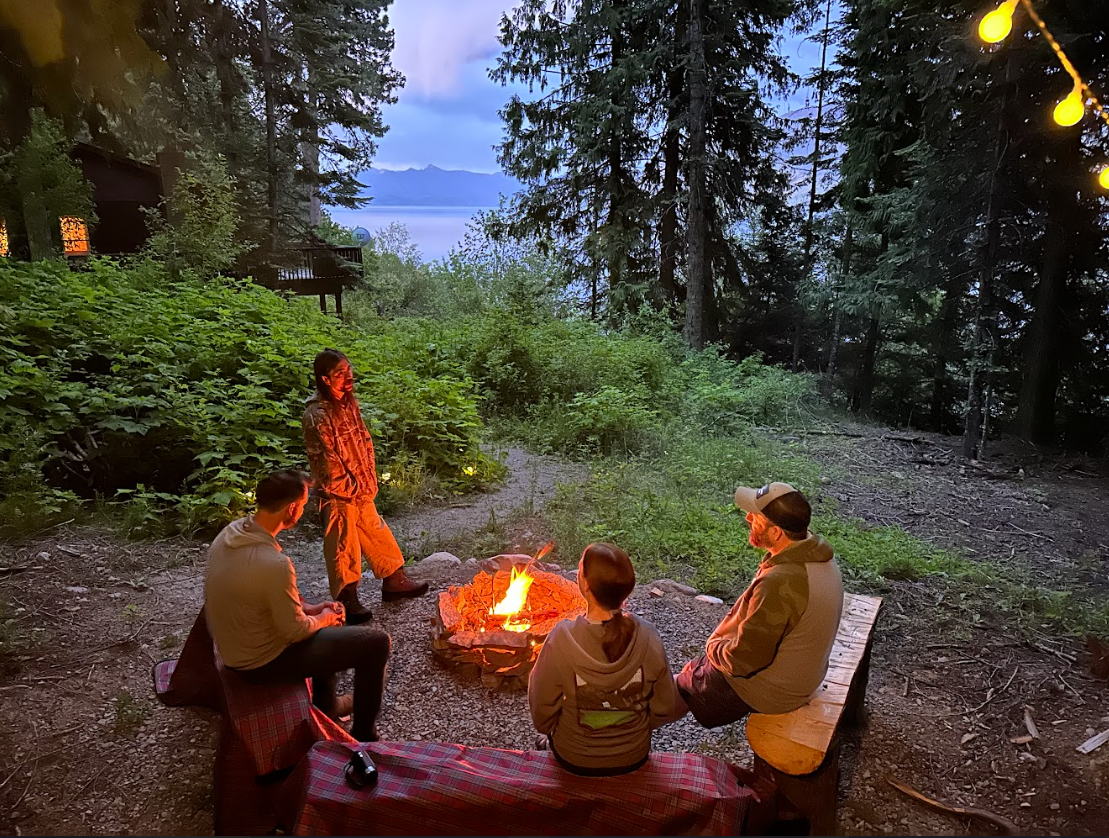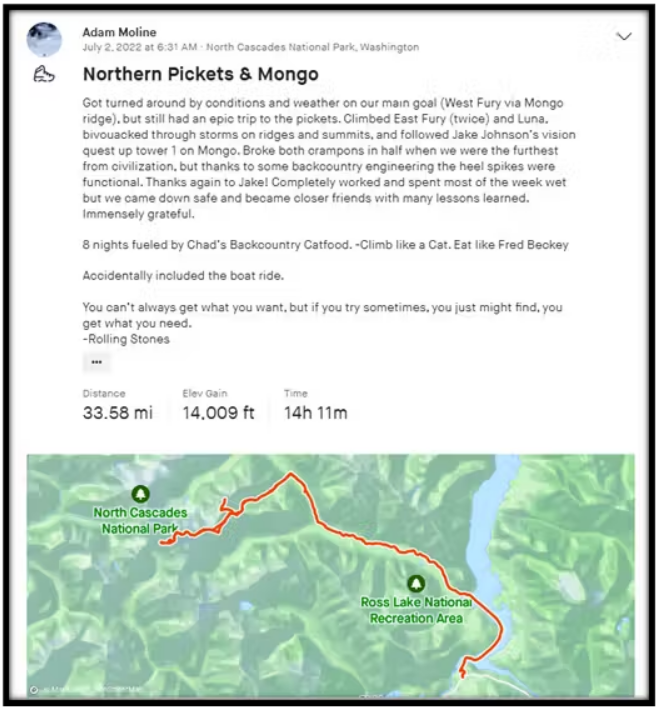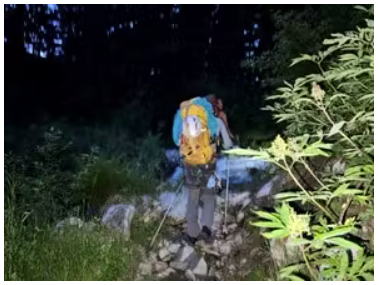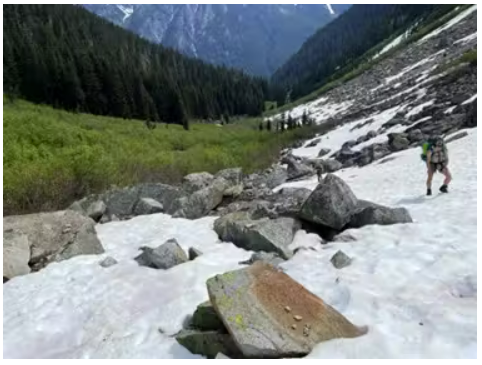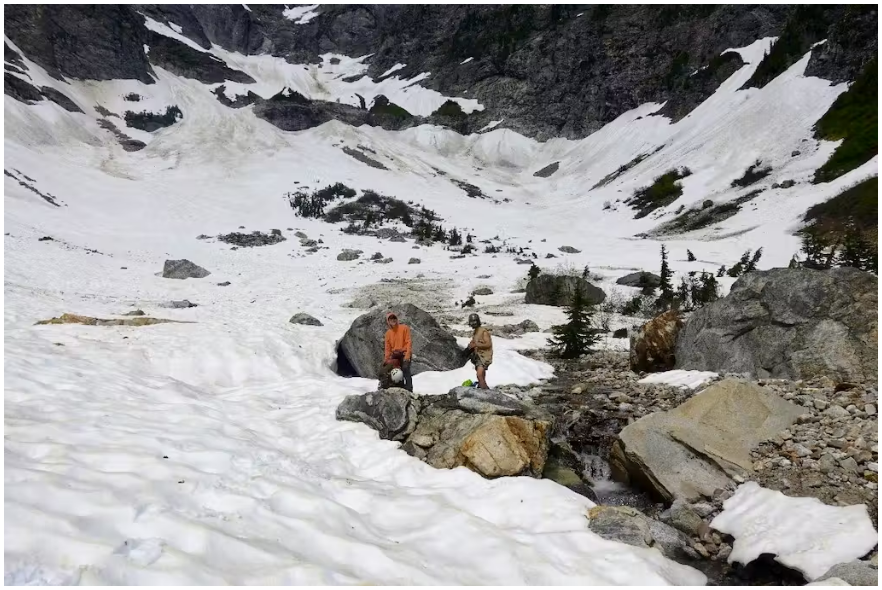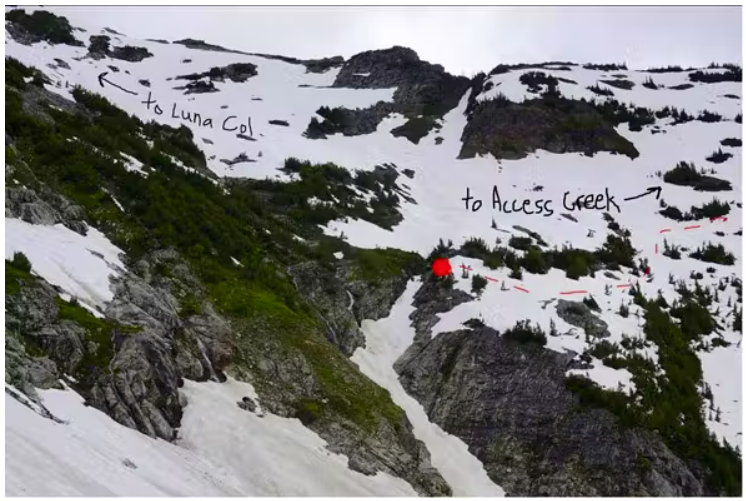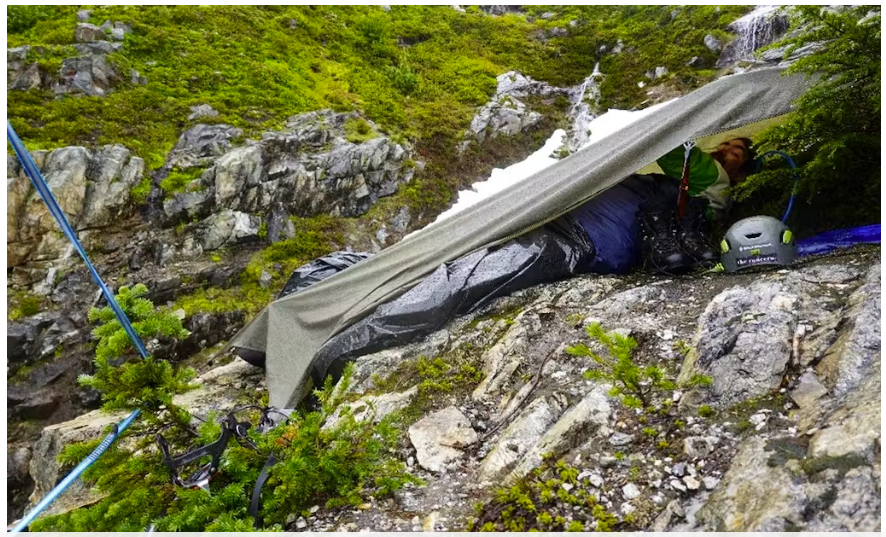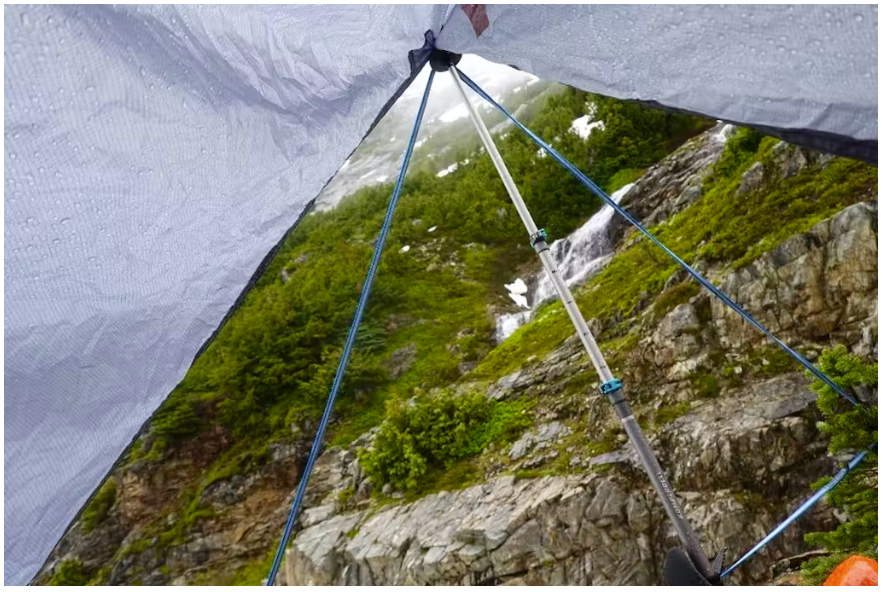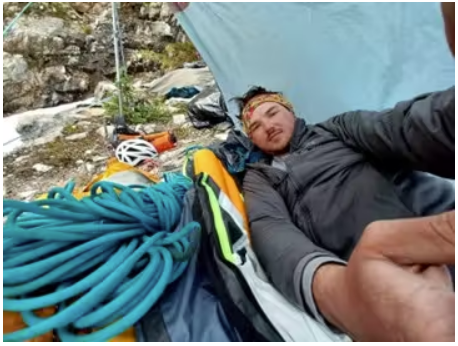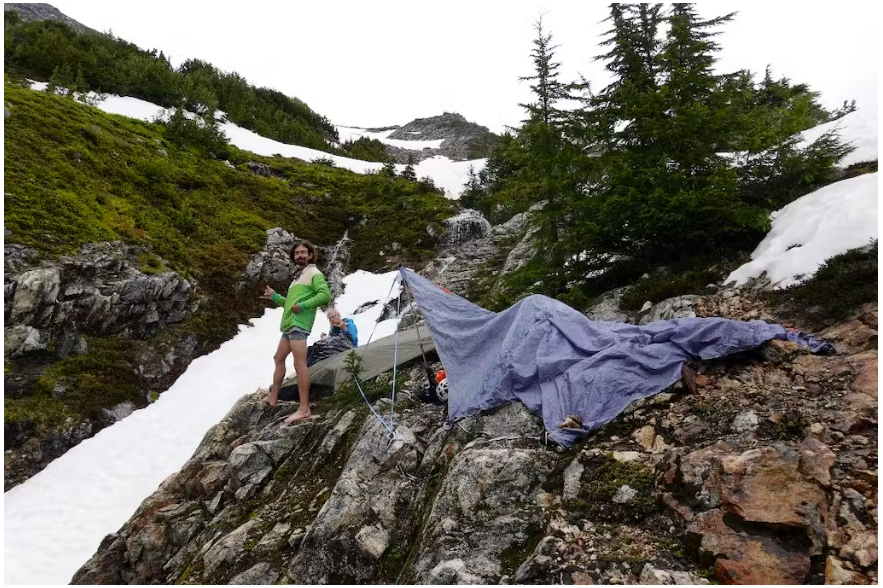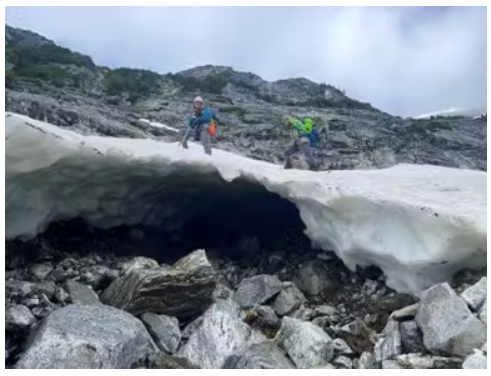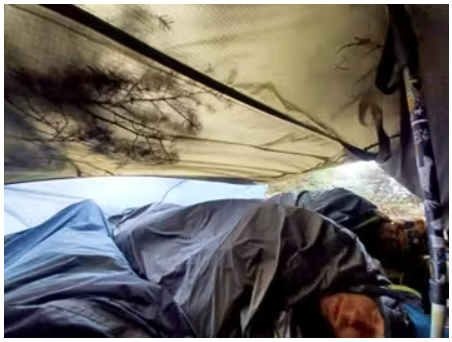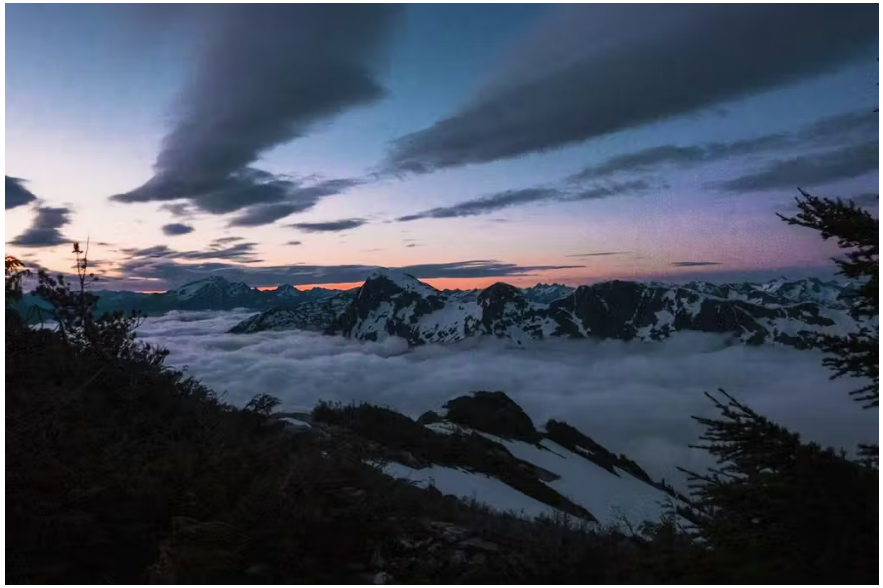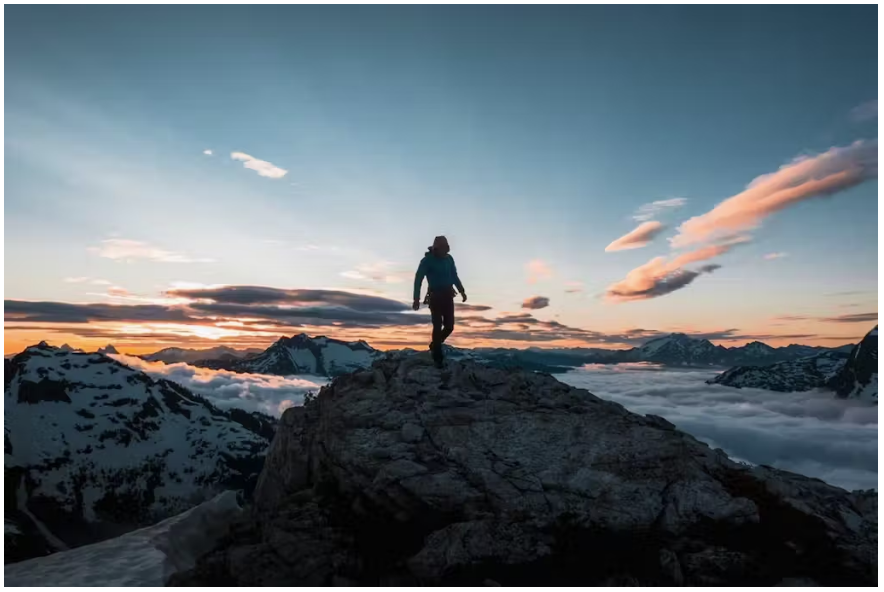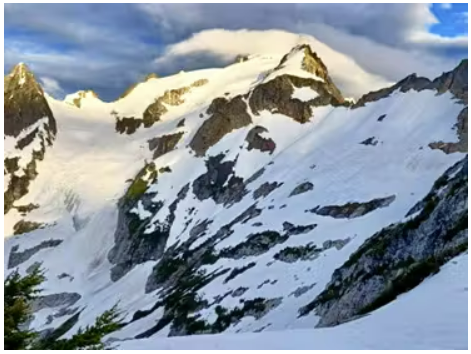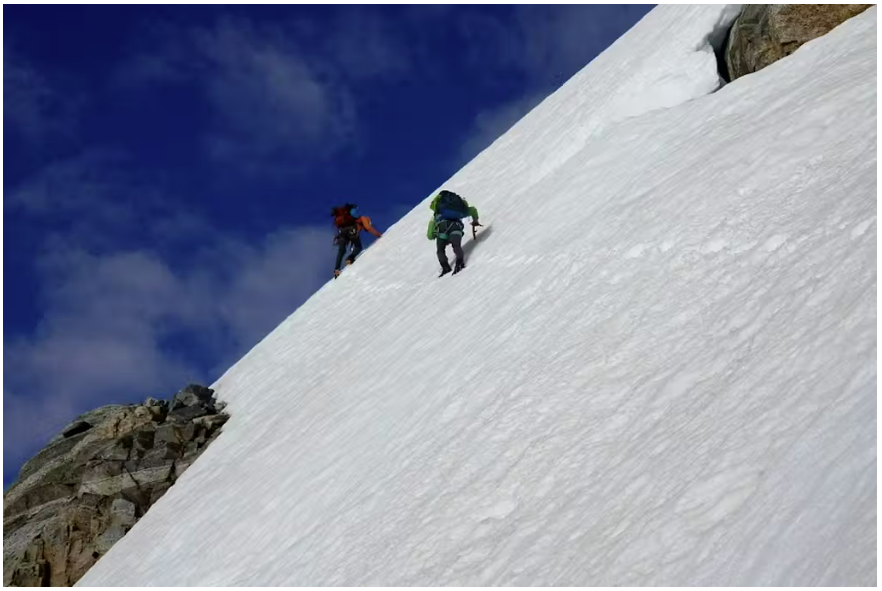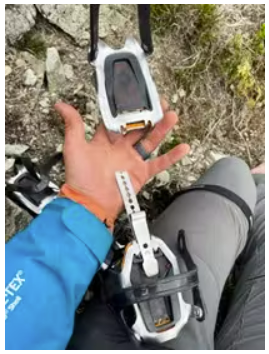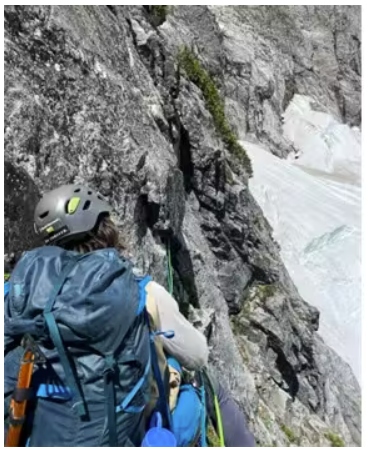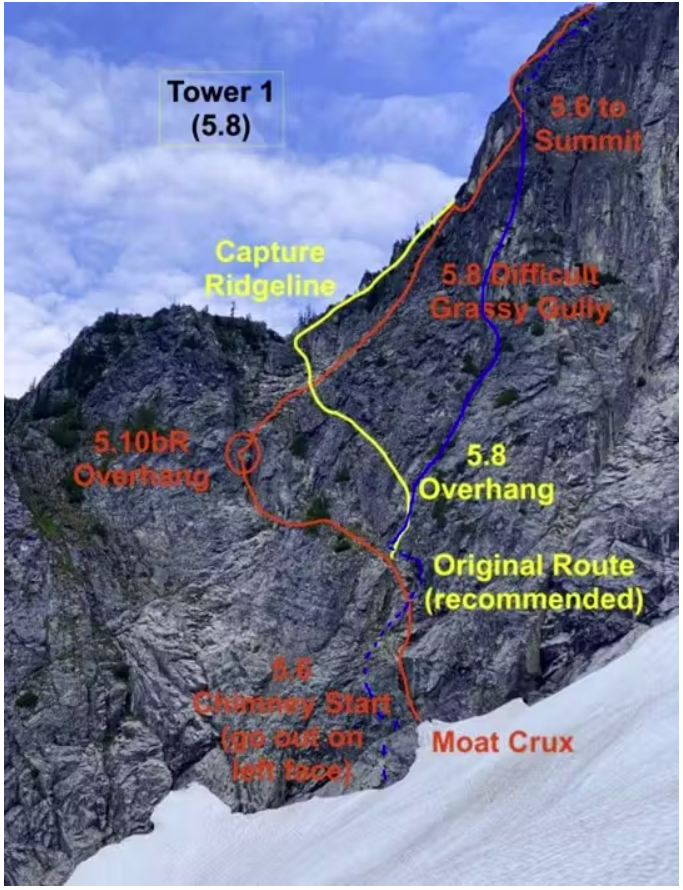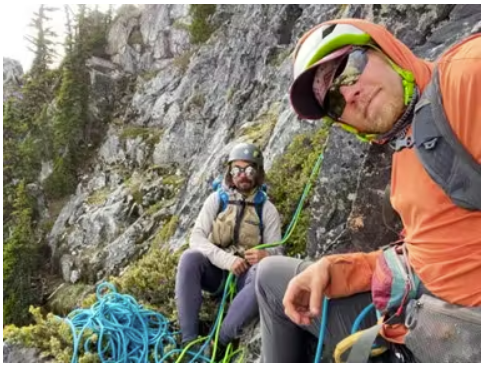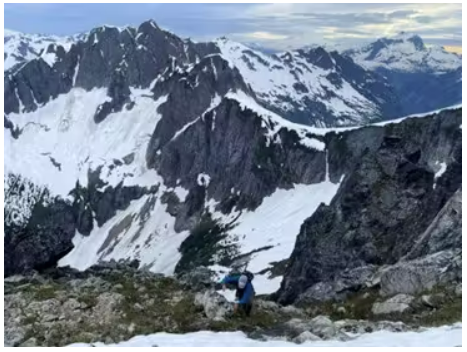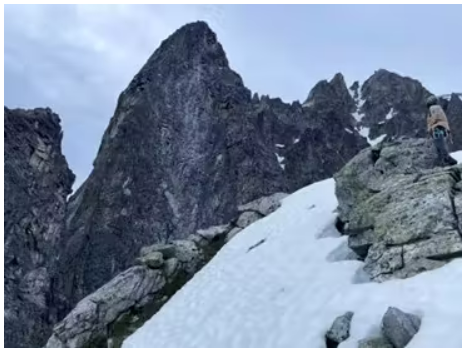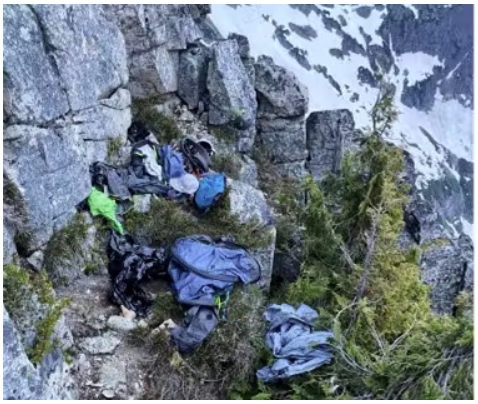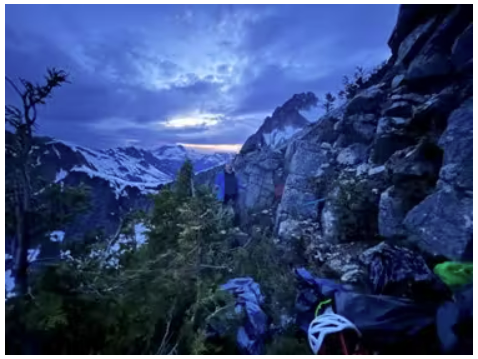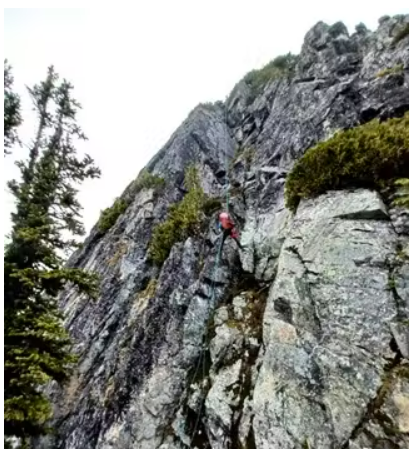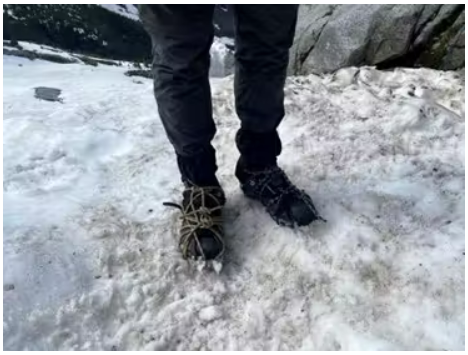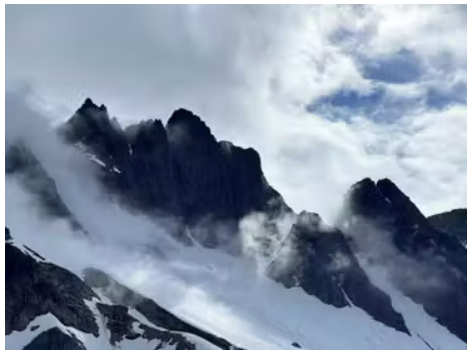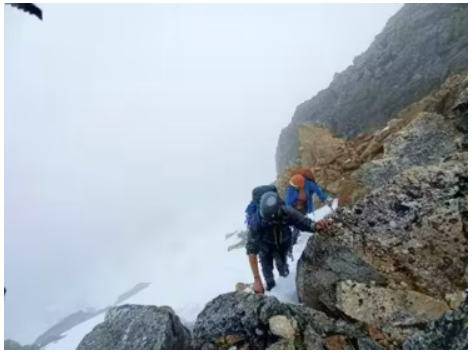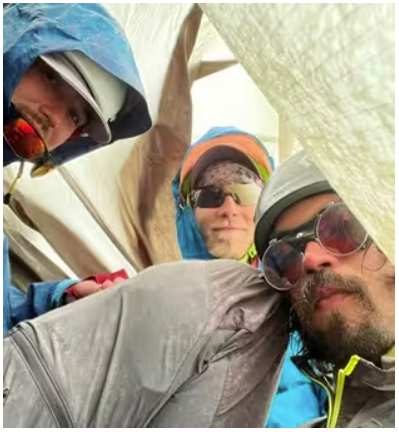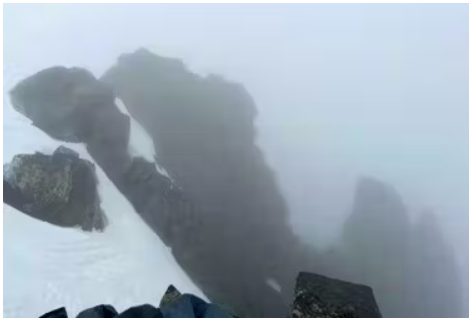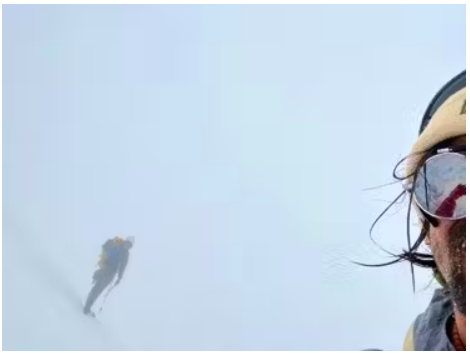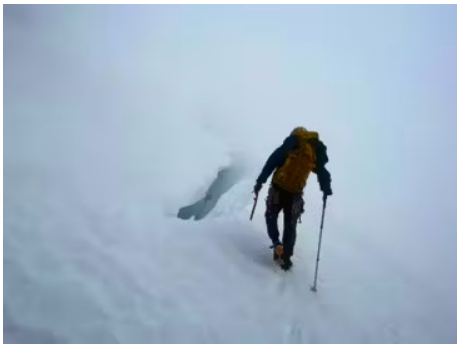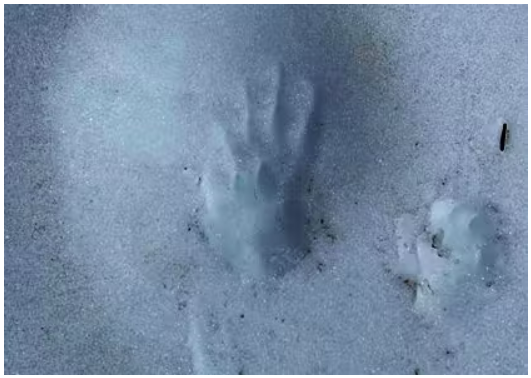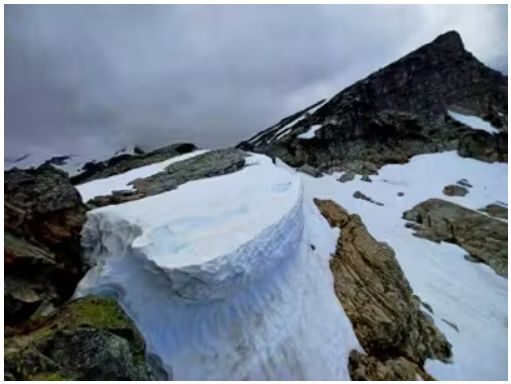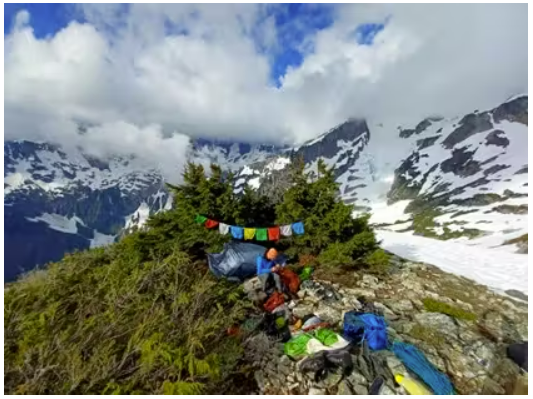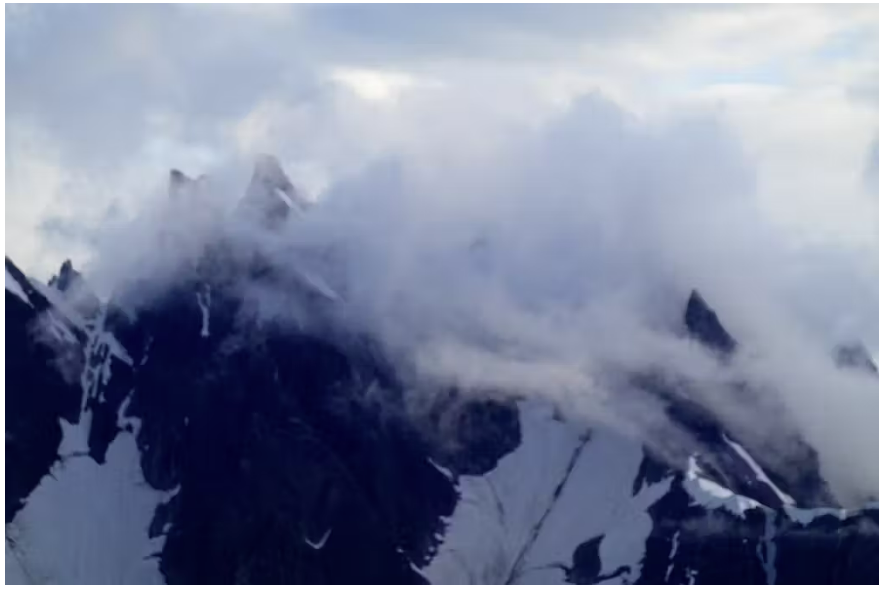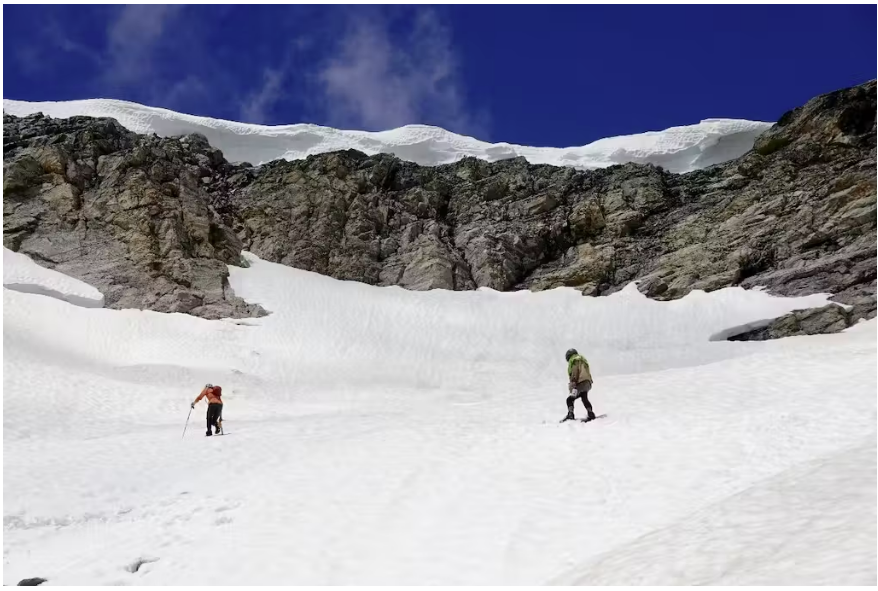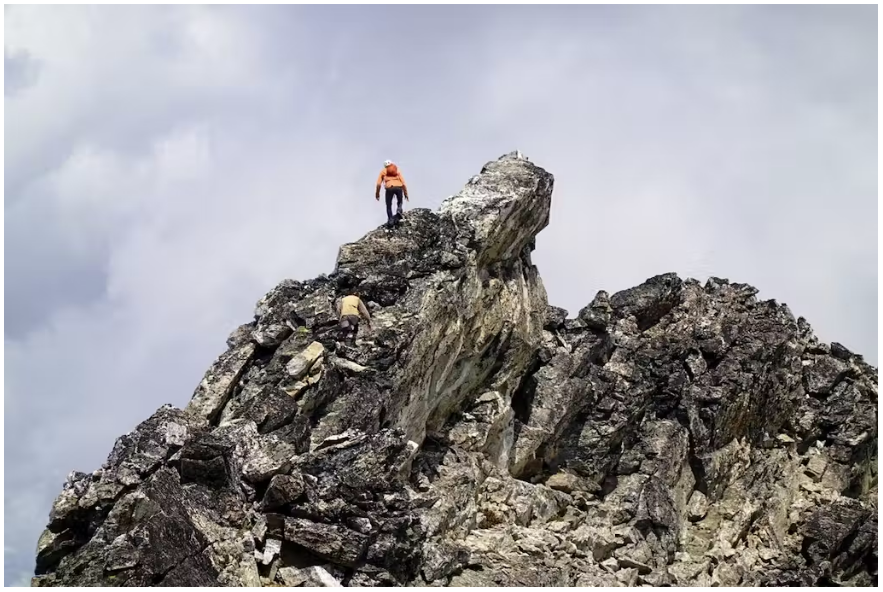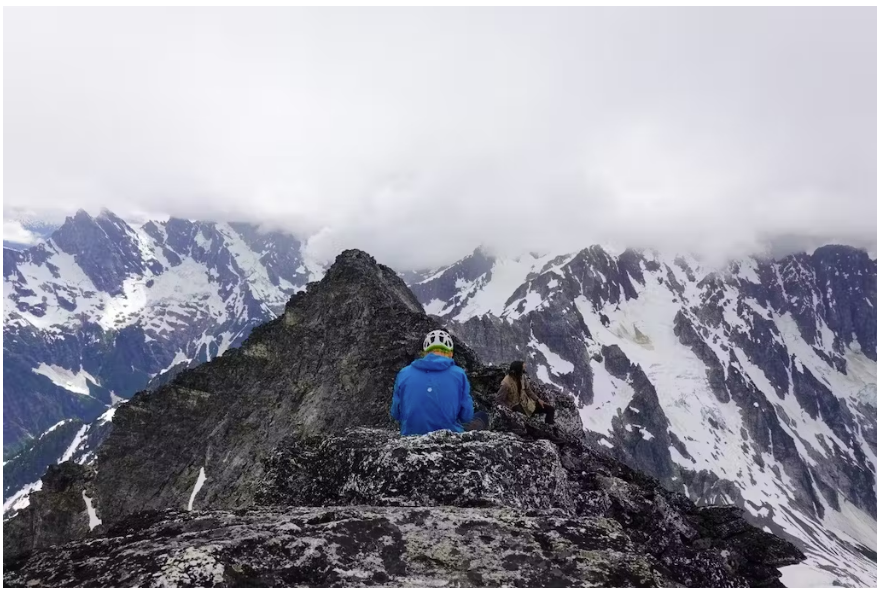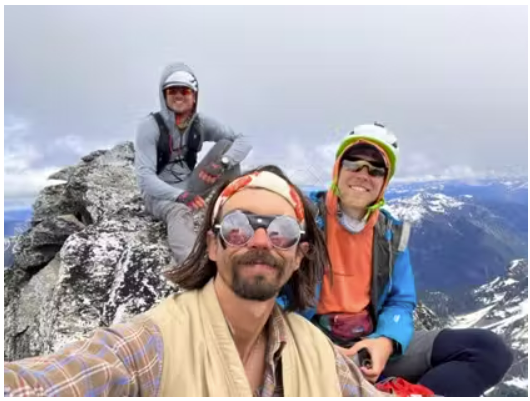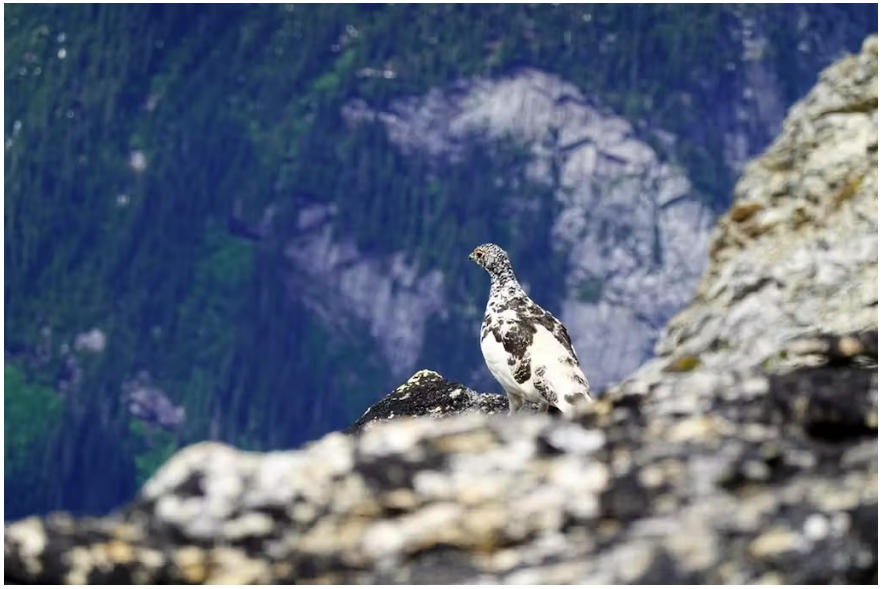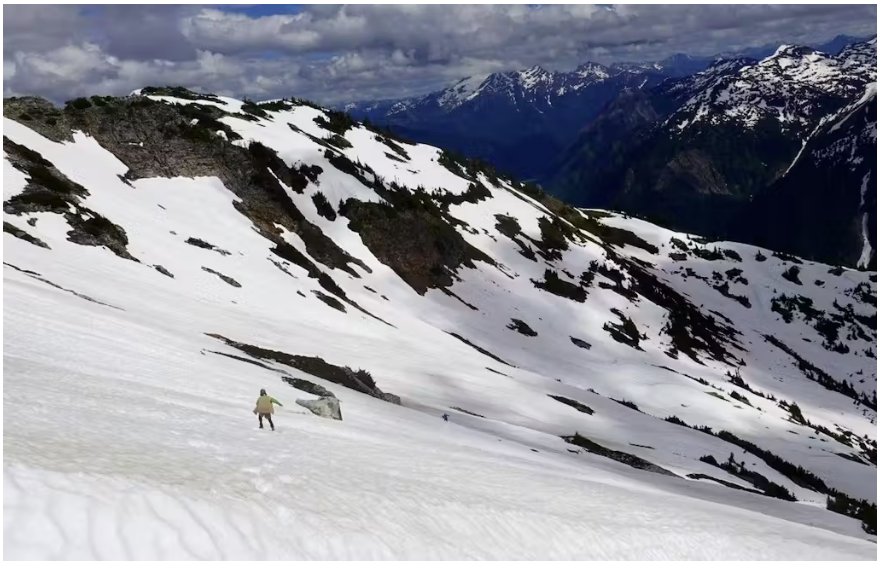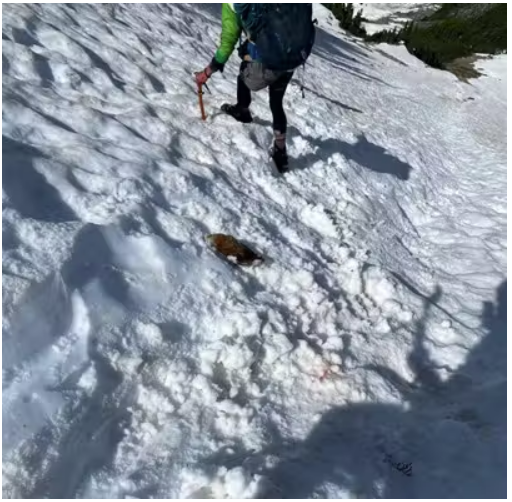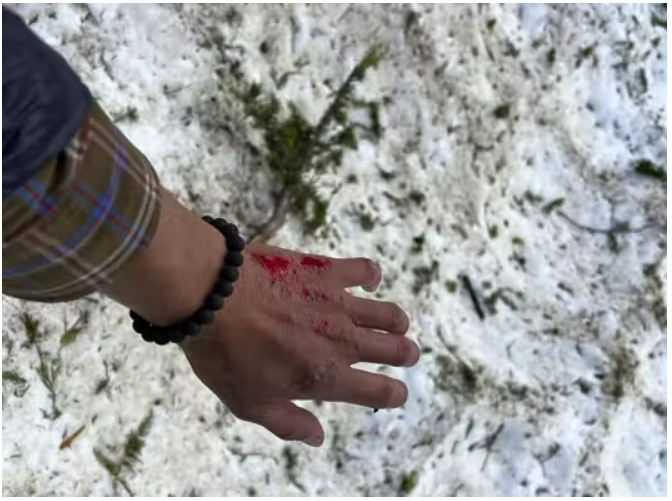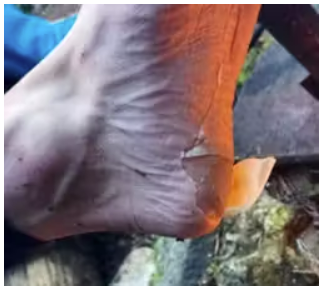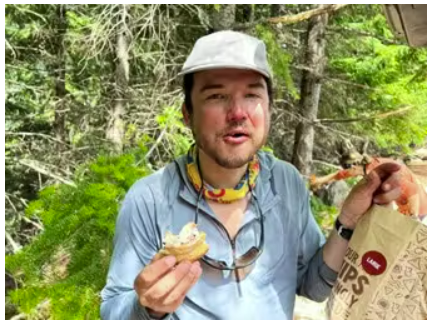-
Posts
12 -
Joined
-
Last visited
-
Days Won
5
Everything posted by Jake Johnson
-
Trip: Chilliwack Range - Redoubt Creek to Mt Redoubt, Alpine Wedding, Perry Creek deproach Trip Date: 06/21/2024 Trip Report: Climbers: Jake and Julia Johnson – Sandpoint, ID Emilio Taiveaho - Saxapahaw, NC (Emilio’s wife Krysten could not join on this trip, but was very much with us in spirit) Adam and Monica Moline – Olympia, WA Summary: 9 Days and 8 nights in the Chilliwack Range with the primary objective of an alpine wedding. Weather kept us off most of our climbing objectives, which was a known risk by going in June. The approach, deproach, and riding out the storm proved to be an excellent adventure by themselves, and we were successful in our primary objective of getting married! I enjoy packing detail into these reports, primarily for my own benefit, while the detail is still fresh in my mind. Thus, it’s a lengthy report. But I also tried to make it photo heavy for readers that prefer to skip to the sections that interest them. Preface: Julia and I have been discussing our ideal wedding venue for a long time. After ruling out traditional options, we decided on an alpine elopement. Our first thought was to make a trip to the Cirque of the Unclimbables, in Canada’s Northwest Territories, but the timing and logistics for that trip weren’t lining up. We decided on the Chilliwack Range, for its beauty and remoteness, and the fact that it didn't require coordinating float planes to get to. The Depot Creek route from Canada was the obvious approach option for hauling in a suit, wedding dress, lots of camping luxuries, and a good bit more food than a normal trip. However, we had some last minute reservations about our wedding involving an illegal border crossing. After chatting with several friendly border patrol officers on the phone, we confirmed that there is no process or permissions to make the Depot Creek approach legal. They essentially told us that, although they would do their best not to catch us, they couldn’t guarantee it. Emilio, Adam, and I had climbed in the Chilliwacks in 2021, and accessed via the Perry Creek approach. However, the thought of doing the Perry Creek bushwack and climbing over the Ridge of Gendarmes with a wedding dress on my back wasn’t inspiring. We reached out to Ross Lake Resort to see if their water taxi would drop us at Silver Creek so that we could approach via that valley, but the lake levels were too low for them to take us there – the furthest they could get us was Little Beaver. I combed over reports for other approach options. Hiking all the way from Hannegan wasn’t appealing; we planned to bring heavy packs to live in alpine luxury for the week. While studying satellite imagery, I noticed that Redoubt Creek, the drainage west of Perry Creek, was relatively short and contained a wide creek bed – over 100 yds wide in places – which would be nice for keeping the dress out of the brush. Since it was a smaller drainage, I reasoned that the creek might be smaller too, and traveling directly up the creek bed could be a viable option. If so, there would only be a short distance to bushwack with the wedding dress before breaking into the wide section of the creek bed and the alpine. I could not find ANYTHING online about using Redoubt Creek as an approach for the Chilliwacks. When I reached out the national park for information about Redoubt Creek as an approach, they didn’t know what I was talking about, and they provided me with information about Depot Creek - I assume they thought I was just confused, and that I meant Depot Creek. The idea of venturing up a remote valley with little information was intriguing for us, and it seemed like it might work ok. After all, it couldn’t be any harder than Perry Creek, could it? Trip Map: (Spoiler - we ended up bailing to Perry Creek for the way out) Wednesday June 19 & Thursday June 20 Emilio had flown into Spokane on Wednesday the 19th and we had done some cragging. Then on Thursday we ran / climbed Harrison Peak in the Selkirks after I got done with work. Julia's parents drove from Illinois to Idaho to house and dog sit for us, so we had a full house Thursday night. Friday June 21 On Friday we packed up and departed Sandpoint mid-morning and met Adam and Monica at Ross Lake Trailhead at 3pm. The boat was late, so we snacked on Monica’s homemade sourdough bread on the dock and did some swimming. When the boat dropped us at Little Beaver, we ate dinner – Monica’s specialty sandwiches: a healthy serving of a variety of meats and cheese on a pretzel bun – then began the hike in. The first mile of Little Beaver the trail immediately gains 1000 ft, and I was still adjusting to the weight and balance of my new pack-body with the wedding dress hanging off the back. The delayed boat and the weight of our packs made it easy to justify a short first day on the trail, and we stopped at Perry Creek Camp for the night after ~4.5 trail miles. Saturday June 22 We all tried to take advantage of the pit toilet at Perry Camp before departing for the day. Julia and I also spent some time repacking the dress – the “cape” method we had tried on day 1 was meant to avoid getting wrinkles and creases in the dress, but it did not seem like it would work for the shwacking. We knocked out the remaining 5 miles of trail walking to Little Beaver’s Junction with Redoubt Creek, stopping for a few quick breaks that included some trailside bouldering. After searching a bit for a good route to start up on, we gave up and Adam led the schwack straight through some moderate alder and devils club on climber's right of the creek. After a few hundred yards, the slope steepened significantly, but the forest floor thinned and we followed some heavily used bear trails straight up the mountainside. The slope cliffed out a bit as Redoubt Creek plummeted through waterfalls to our left. We were able to find some gullies to navigate up these sections with only a few climbing moves. Emilio kept our spirits high by singing Marty Robbins' "You Gotta Climb" - a real mountain jam! Above the cliffy sections we made some great progress, again following steep bear trails straight up the steep mountain valley. The Redoubt Creek valley bottom levels out significantly after this, and the goal here was to get down into the creek bed and use that to rock hop our way up the remainder of the valley. However, based on the roar of the creek, we decided to continue up on the bear trail as far as it would take us. Eventually the old growth and bear trail wanted to force us to the right, straight up the mountainside and perpendicular to the direction we needed to go. We dropped down into a tributary creek bed and crossed it into some thick alder. We hacked our way through alder for 200 yards, angling down towards Redoubt Creek. This was the thickest, most sustained alder I had ever climbed through. I checked the gps map on my phone – we still had 300+ yards of this to go before the next section of old growth forest, and it felt like we had already been in it for an hour. We changed our angle, to head directly downhill through the alder to get to the creek, in hopes that we could find some relief in the creek bed. Once we got to it, there was a sheer 20 ft drop from the alder straight down to the raging river. So much for the creek being small! We briefly discussed options – the alder had somehow been getting thicker, and it felt like our slow progress through this grove was getting slower. We decided to backtrack to the tributary we had crossed before entering the grove. To add to our frustration, it began to rain softly on us. We used the tributary’s creek bed to head straight up the mountainside for a quarter mile until it met with some old growth above the alder grove, as a way to circumvent it. Looking south at Luna Peak's North Face: The old growth was incredibly steep with significant blow down, so we took a line angling around the alder grove, but right back down towards Redoubt Creek. A bit more bushwacking near the valley bottom, and we stumbled out onto a beach that provided a place to camp for the evening. In camp, we studied the map and tried to formulate a plan for the remainder of the valley. The creek was moving a lot more water than we had hoped, so crossing it would be very sketchy without log crossings. If we couldn’t cross the creek, it would force us up into the alder every 100 yards or so because of the way it snaked from side to side within the creek bed. The negative thoughts started to creep in a bit – Maybe this way wouldn’t go. Why did we pack so heavy? If this doesn’t go, would we need to celebrate our wedding down here in the alder? Sunday June 23 The upper valley was filled with fog, and the drizzle was on and off throughout the morning. We took our time to stretch, hydrate, and relax all morning until noon when the forecast showed a lower chance of rain. We needed a bit of a mental break before engaging in another fight with the alder. At noon we backtracked downstream a hundred yards so that we could cross the creek at a log crossing, then quickly regained that ground in the creek bed on that side of the creek. Another hundred yards and we were forced out of the creek bed by the creek, and we were back in the alder. Emilio had been developing a rating scale for “Technical Slide Alder” and this was at least “SA 4”, which is the point at which the alder decides which direction you get to go, and you have no say in the matter. After a few hundred yards, the alder spat us out right at a log crossing that got us to good creek bed on the other side of the creek – a lucky break. It was great walking for a few hundred yards, and we marveled at how wide the creek bed was here, with tall walls on either side leading straight up to dense alder at the top. After that bit of good walking, the creek wound back to our side of the bed and pressed right up against the steep wall on our side. To climb up the bank and around this pinch point looked to be about a 5.9+ climbing move with the packs, and then an “SA 5” bushwack for a long ways. The alternative was to traverse just above the raging creek on the steep and sandy bank. Julia and I backtracked down the creek looking for a log we may have missed, to cross over on; no luck. Emilio led the charge across the bank, kicking collapsing steps in the sand as he went. Adam and Monica followed, and finally - after a bit of deliberation - Julia and I reluctantly followed as well. We made it just a short bit further in the creek bed before the creek wound back and presented a similar challenge again. But this time, we had a better opportunity to escape the creek bed and dive into a short alder shwack, and then climb some steep old growth. We had eaten our fill of alder, and we couldn’t take much more of following the creek. We plotted a new line that would take us higher up the side of the valley in the trees, and then sidehill the remainder of the valley. The trees initially provided some relief from the density of the valley bottom. However, the slope quickly became very steep, to the point where I would frequently need to hold Julia’s feet into the soil in front of me to allow her to step up without slipping back down. Once we had climbed to an elevation that would be clear of most of the alder groves reaching up from the valley, we began side-hilling. This was also slow moving due to the steepness of the terrain, and needing to negotiate a good amount of blow down. The moving required confident footwork, and both hands. Whenever there was a space flat enough to stop and rest without rolling down the mountain, we took advantage of it. Light rain came and went, and the forest thickened – still very steep. As it got dark, we dropped down a steep alder-lined bank into a tributary that was filled with snow, but was also flanked by a sloping heather bench. I had never been so relieved to arrive at so poor of a campsite. Emilio pitched his tent above a small tree to avoid rolling down the hill, Adam and Monica spent some time landscaping with rocks to create a small flat-ish area, while Julia and I chose to use our axes to chop out a spot on the snow flat enough that we wouldn’t take the big ride in the night. We had to fight to keep our spirits up. In total, we had only covered maybe 2 miles as-the-crow-flies the entire day. It was starting to become a possibility, if we didn’t increase our pace, that we would need to turn around without ever getting into the alpine, and our entire trip would be bushwacking. Julia wasn’t open to that possibility – “I’m not going back down this valley”. We talked to the rest of the group, and all happily agreed that we would bail to Perry Creek as the deproach, assuming we could make it up and out of this valley. Monday June 24 We needed this day to be productive, and we were happy to find good weather when we woke up. The forest was kind, with reasonable old growth walking right away in the morning. We picked a line that aimed for the clear meadows at the head of the valley. After a short section of side-hilling, we dropped straight down towards the valley bottom and were greeted by a now-much-smaller Redoubt Creek and a bog. Mt Redoubt standing proud at the head of the Redoubt Creek valley We crossed the creek in sandals, then picked our way through the bog over to some talus on the west side of the valley. In just over an hour, we had covered as much ground as the entire previous day. Looking up at the unclimbed "Crazy Crushed Contours" wall on NW Mox Peak We topped off water before hopping on a snow finger that took us straight up head of the valley. Here, we found an abundance of wolverine tracks, and higher up in the cirque Monica spotted the creature itself, scampering through the talus! Some easy snow walking led us up the remainder of the way to Camp 7200. We had used one of the few good weather days of the trip to get here, but we all felt very accomplished to have completed such a complex and heinous approach. Tuesday June 25 The forecast said clear, and then rain for the remainder of the week, so we needed to make the most of it. We accidentally slept in a bit later than expected, then roped up for the glacier walking on the first section of the route up Redoubt. The walking was great for the first bit, but as sun baked the snow I began to fall through and it became a slog. We crossed the rock rib without issue and worked around to the south side of the mountain. Here the snow steepens, and it also deepened. I did my best to stay on top of the snow by getting my toe in solidly enough, then dropping my knee to distribute my weight across the surface of the snow. This technique was basically just crawling up the mountain, and our pace was as slow as you’d expect. As we neared the rock at the top of the snow, the snow got softer and deeper - over waist deep - and I was forced to change techniques again. I would use my axe and my knees to tunnel out the 2 feet of snow in front of me, then use my feet and crampons to compress this chopped snow into a step. Then repeat. The rest of the team practiced patience while I slowly engineered the route up the last 15 meters onto the rock. I was excited to get the crampons off my feet and scramble rock. We probably should have kept the crampons on and climbed the snow in the gully up to the summit block, but the rock did provided a reasonable route up, by traversing above the snow in the gully. We remained roped up as we had been on the snow, and we gave each other body belays through any short stiff sections. At the top of the gully, we found a good amount of snow below the final rock pitch. We decided to pitch it out one person at a time – another time-suck. The guys gave me the lead again, a wedding present for me. I crossed the snow by kicking steps with my trail running shoes, then traversed into the rock chimney leading to the summit. I placed a cam and pulled the slightly overhanging summit move. It felt stiffer than I expected, probably due to the wet trail runners. I slung a block to belay and brought everyone else up the pitch. Summit Success! There were a lot of moments over the previous days when I thought there was little chance of tagging any summits on this trip, so it felt good to stand on at least one. However, it was WAY later in the day than we had anticipated, and we still needed to get down, get beautiful, and get married. We made several rappels to get down. If we had anticipated the amount of snow on the route, we would have brought multiple ropes to speed this process up. Once we were back on the snow, we plunged heels into the deep slush snow and made great time following our tracks back to camp. It was evening when we got back to camp, and there was some anxiety and emotions regarding what we should do with our wedding ceremony. We felt like there was a reasonable chance of a small break in the weather over the next 2 days for us to do the ceremony, but that wasn’t a guarantee. We decided to get ready quickly and make it happen before dark. We boiled water in the jetboil and added it to the water filter reservoir to provide Julia with a hot shower. Adam adjusted some rocks to make a flat spot for the ceremony above camp, and Monica made a small bouquet from heather and a hair tie. I put on my suit, which Emilio had carried in his pack the whole way up, and I was pleased to find it in great condition. I set up some cameras and got myself and the guys in position. Then I closed my eyes and waited for my bride. Emilio kicked off the ceremony with some opening remarks. I opened my eyes and laid eyes on my alpine queen. She looked beautiful. We read our vows to each other and exchanged rings. It was perfect. The wind picked up towards the end of our ceremony and provided some dramatic effect for the few photos we were able to take before it got too dark. We celebrated with the best freeze dried and dehydrated meals we had brought with us, as well as freeze dried pudding for dessert! The wind continued to increase, and we turned in for the night. Wednesday June 26 & Thursday June 27 There was not any rain in the night, just steady wind blowing the storm closer. We scrambled around on the rocks around camp in the morning hours, and watched the mountains to the south disappear as the storm engulfed them. We knew there was little chance of tagging any summits over the next 2 days, but we made note of the boulders we wanted to work around camp, and other activities we might want to do during any upcoming breaks in the weather. We scampered into tents as it began to rain – it wouldn’t stop once for the next 40 hours. We had all reinforced the south sides of our tents, as that was the direction the storm blew in from. But at some point during Wednesday night the wind changed directions and completely flattened our tents, blowing strong from the north. We did our best to keep our things dry, but Adam and Monica ended up with a small indoor swimming pool. Every now and then I could hear some singing over the sound the rain and wind, coming from Emilio's tent: "♪ Rider's on the Storm ♪.... ♪ Rider's on the Storm ♪" On Thursday the rain changed to snow, which was a welcome relief from the wet of the rain. Friday June 28 Our boat out from Little Beaver was at 4pm on Saturday, so we hadn’t left much extra time to hike out. Friday morning started with a beautiful cloud inversion and some sunshine. By the time we started hiking towards Col of the Wild, the clouds had risen to our level and we were back inside the ping pong ball. On this hike, my right crampon broke – probably the consequence of using them too much with my trail runners. (I like using the strap style crampons with my trail runners on trips where there is any chance of hard multipitch climbing - which we had planned for, but were unable to do on this trip. I feel pretty confident in most snow conditions with this setup, and you can't beat clipping light weight trail runners to your harness while climbing in rock shoes. However, we've found that the bar on the Black Diamond Contact crampon is only good for 1 or 2 big trips before breaking when working them hard on such a flexible shoe.) I reasoned that the snow would be soft enough for the remainder of the trip that not having both crampons shouldn’t matter all too much. We kicked through moderately deep snow up to Col of the Wild; not anything like what we had encountered on Redoubt. From the col, we were able to see the first section of the Ridge of Gendarmes through the fog. What is 3rd and 4th class in the summer was covered in some deep and steep looking snow, with cornices guarding some sections at the top. We picked a line that climbed straight up the snow, then traversed right to the low point in the first ridge. Adam had carried a picket in his pack this entire trip without any expectation of needing it, but we were happy to have it for this section. Emilio made his case for taking the lead on this pitch – he had two crampons compared to my one, he pointed out. I was greedy, and formulated some weak argument for why I should get it anyways. Emilio conceded and offered to belay. This was the steepest, iciest, and most dramatic mixed lead I had ever done, and I savored the unexpected adrenaline surge. The stability and varied depth of the snow required careful and delicate movement. What an awesome, unexpected challenge on our "hike out"! I took my time tunneling upwards through the deep snow and kicking good steps for the rest to follow with their packs. After about 10 meters I placed the picket and traversed rightward. Again, I spent a good amount of time tunneling out the snow and packing down a solid shelf for the others to follow on. I worked into some sections with exposed rock and chipped away ice to get to some handholds and solid gear placements. Eventually I was able to work upwards to a belay at the notch in the ridge. We ate up a lot of the morning getting everyone and their packs up this pitch, but Emilio began working the next pitch once he was up. This next pitch contains the only 5th class move on the ridge in summer conditions, and it is pretty straight forward. But we roped up for it because of the heavy packs and some snow on the ledges. Emilio led and Adam and Monica followed, simuling on the end of the first rope. Adam towed up a second rope that Julia and I then simuled up the end of. After this pitch, Julia and I remained roped together simuling on a short rope for a bit of added confidence as Julia led us the remainder of the way up to the top of the ridge. We encountered a few low 5th class moves to avoid snow and ice where the route would normally be. The other side of the Ridge of Gendarmes leading down to Perry Creek is less steep, but contained more snow, so we made 2 rappels to get down to the glacier. Prepping to rappel at the Ridge of Gendarmes. SE Mox in the back right of the frame. Once down on the glacier, we roped together and made quick progress down to the head of Perry Creek. It was getting dark in the valley bottom, but we pushed for another 30 minutes on the talus to shorten our hike out the next day. Without any good flat spots for camping nearby, and without feeling like pushing any further, we made do by adjusting some rocks in the talus. Saturday June 29 We were up with the sun and hopping down the talus of upper Perry Creek early in the morning. We cut into the old growth and made good time despite less than perfect route finding. Julia and Monica joked at our previous fear of Perry Creek – this was nothing compared to Redoubt Creek. However, the bugs were thick and the Perry Creek descent saves the best for last - Thick dead pines and steep terrain on the final drop down into Little Beaver. We did find a faint climbers trail that was definitely not there in 2021, but we found it only as we were coming out of the thickest part of the schwack, so it didn't benefit us much. I had kept my hard shell jacket on to protect me during the plunge down the thick stuff, so I was overheating when we landed on the Little Beaver trail. We topped off our water and enjoyed a well-earned rest. The 4.5 miles of trail back to Ross Lake felt like they took forever, but perspective is a beautiful thing, and we did not take for granted how easy covering the ground was, compared to the week we had. We had an hour to spare before the boat picked us up, so we swam and basked in the sun at Ross Lake. The boat ride back to Ross Dam is always satisfying after a week in the mountains. We hiked up the trail to the cars in our sandals, loaded into the cars, and drove to Marblemount where we proceeded to order an absurd amount of food. We enjoyed the next 2 nights at an AirBnb that Julia and I had reserved for the group. There, we continued to make and consume an outrageous amount of food. Final Thoughts I need to express my gratitude to the team that made this adventure what it was. First and foremost, my new wife, Julia. I would have agreed to any wedding venue she wanted – for her to choose this place says a lot about who she is. I’m incredibly lucky. This was Monica’s first real trip into the Cascades backcountry, despite many years of climbing in Washington. She crushed it, and I’m sure it won’t be long until she’s back for more. Adam and Emilio have been my primary climbing partners for a long time, and they came through for me at my wedding, carrying heavy packs (70+ lbs) and keeping the stoke high throughout. They only took 1 full day of rest after this trip before heading back to Ross Lake, and hiking into the Pickets. That should say plenty about how hardcore they are. As I write this, they’re getting on Mongo Ridge with a great weather forecast to get some redemption from our attempt in poor weather in 2022. Update - they sent! Up next, Jules and I are heading to Alaska to do some honeymoon climbing (again – her idea, I’m lucky), but also some fishing and relaxing. Gear Notes: Standard Wedding Rack Approach Notes: SA5 Schwacking
-
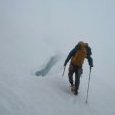
[TR] North Pickets - Mongo Ridge (Tower 1) 07/01/2022
Jake Johnson replied to Jake Johnson's topic in North Cascades
@JeffreyW Thanks for letting me know about the photos - not sure what happened there. I added them back in! -

[TR] Sharpen the Saw: Sawtooth Ridge Traverse
Jake Johnson replied to emilio taiveaho pelaez's topic in Olympic Peninsula
Woohooo! I'm inspired -

[TR] North Pickets - Mongo Ridge (Tower 1) 07/01/2022
Jake Johnson replied to Jake Johnson's topic in North Cascades
We didn't realize we had left a cam but upon further examination of the rack, one does appear to be missing! Must have been left behind accidentally somehow - glad they could clean up our litter and make use of it! -

[TR] North Pickets - Mongo Ridge (Tower 1) 07/01/2022
Jake Johnson replied to Jake Johnson's topic in North Cascades
Indeed it is the same Emilio! -
Trip: North Pickets - Mongo Ridge (Tower 1) Trip Date: 07/01/2022 Trip Report: A Rainy Week in the Northern Pickets + A Night on Mongo Ridge Climbers: Jake Johnson – Fort Collins, CO (writer of this TR) Emilio Taiveaho - Saxapahaw, NC Adam Moline – Olympia, WA (A new resident to Washington, so hit him up if in need of a SOLID partner in the mountains) Summary: July 1st – 9th, 2022 in the Northern Picket Range of North Cascades National Park. A week of managing early season snow conditions and weather. Lofty goals were adjusted, and we fought the good fight - accomplishing as much mountain moving as we feasibly could and learning all the lessons the mountain would teach. It’s easier to write a report about triumphs in the mountains and, perhaps, its more interesting to read of successes as well. For this reason, I considered not writing and sharing this report. However, I do feel that the lessons learned and experiences had are worth sharing. Also, given that it was the toughest trip I’ve ever been on, I needed an outlet to express my gratitude for my climbing partners (best friends) that got me through it. Planning our trip had its challenges – 3 different calendars to coordinate, two of us needing to fly in from out of state, requesting of PTO, etc.. These challenges culminated in the need to get the dates for this trip on the calendar early. Unfortunately, this plan lacked flexibility as we learned that we’d be dealing with a lot of rain and snow during our week together. Our objective was to climb the entirety of Mongo Ridge, and while we did not complete that goal, we did accomplish what we were ultimately there to do: to suffer well in the mountains when required, and to thrive in and enjoy the mountains when allowed. Itinerary (not the planned itinerary, but the reality of our week): Day 1 – Evening hike up Big Beaver Valley Day 2 – Hike to and Camp at “Cliffside Camp” below Luna Col Day 3 – Ride out storms, no movement Day 4 – Advance to “Ridge Camp” below the ridge between Luna and Fury Day 5 – Climb East Fury and Tower 1 of Mongo Ridge, bivy on Tower 1 Day 6 – Retreat from ridge and bivy on East Fury Day 7 – Return to “Ridge Camp” Day 8 – Summit Luna Peak and descend to Access Creek Day 9 – Hike Out A screenshot of Adam’s Strava map. He didn’t start his watch until day 2. Introduction: Adam, Emilio, and I first climbed the West Peak of Mount Fury in July of 2020. It was then that we first saw and studied Mongo Ridge, the southwest ridgeline of West Fury. At the time, the only ascent was Wayne Wallace’s legendary solo climb of the ridge: Then, in July of 2021, Jeff and Priti Wright climbed a variation of the route (traversing below the ridgeline after the main towers and bypassing the “Rooster Comb” and “Pole of Remoteness” features): The beta provided in these combined reports gave us the confidence needed to make Mongo Ridge the primary objective of our 2022 climbing season. Day 1: I was fortunate to be able to coordinate with my job to visit a customer site near Seattle on Friday. When I wrapped up with work, Adam and Emilio picked me up and we were off to Ross Dam Trailhead. Emilio had flown out a few weeks earlier, and the two had kept busy getting ready for the trip by climbing some sub-peaks near Rainier, traversing a portion of Sawtooth Ridge in Olympic, as well as running Mt. Olympus in a 14 hr push with Adam’s wife, Monica. They had dealt with early season conditions and weather in each of these endeavors, so we had good indication of what to expect in the Pickets. Our hike up Big Beaver was beautiful, but uneventful. We were happy to take advantage of the clear weather while we had it and eat up some of the approach miles. Lots of deadfall in the last miles of our trail walking slowed progress significantly. We stopped for the night, shared a small meal, and settled in for a comfortable night’s sleep. Hiking into the night on the Big Beaver Trail Day 2: A straightforward crossing of the Big Beaver River and solid route-finding made for steady progress up Access Creek. We surprisingly encountered far less bushwhacking in Access Creek, compared to negotiating the blowdowns covering the Big Beaver Trail the prior evening. I slipped off a slick log while crossing over Access Creek and took a dip up to my thighs. I moped about my wet feet, which is funny to me now – as they wouldn’t really be dry at any point for the next 7 days. Breaking out of the trees in upper Access Creek Switching into crampons for the climb up and out of the valley We worked quickly to move up the snow gully to escape the Access Creek valley before the sun hit the slope too much; slopes that were getting baked in the morning sun were releasing a good amount of snow and rock. Topping out this gully has always felt like a portal to me; entering into the surreal dimension that is the Picket Range. We got our first looks at what we would be working with for the week: vast amounts of snow with 30ft cornices and lots of weather shrouding the high peaks of the range. We didn’t waste much time planning our next moves, as a good amount of weather was forecasted. Luna Col appeared to be completely snow covered, likely making the camping there less than ideal. We dropped down a few hundred feet to the flowing water that drained from the col. Here we found some ground that wasn’t exactly flat but had most of the other qualities needed for surviving and waiting out a storm. It was a sloping ledge on a cliff above an avalanche shoot; we dubbed it “Cliffside Camp”. Our Cliffside Camp beneath Luna Col As a group we had 2 lightweight tarps and we each had Outdoor Research bivys. Emilio and Adam shared a tarp that they strung over their bivys. I wrapped myself in the other like a taco, trying to tuck my gear under its protection as well. The rain came and went, and then came again. We were able to make some food in the breaks in the weather before settling in for the night. Adam and Emilio’s angled sleeping setup at Cliffside Camp The view out of my crude trekking pole / tarp setup at Cliffside Camp The storm that night was the most intense of the week. Wind, rain, thunder, and of course the thunder of rockfall. My tarp got whipped about by the wind, and all my gear got pretty wet. Adam and Emilio each awoke in the night to find they had slid several feet downhill from their original positions. Day 3: I realized it had become lighter outside, but the change from night was minimal from the depths of my tarp covered bivy. “How you guys doing?” I yelled from my cocoon. “Pretty wet but also plenty dry in places, too” responded Emilio. Always an optimist.. Trying to stay comfortable through a long day of being horizontal Again, we seized opportunities were the weather let up to stand and stretch and refortify our setups. Nearly all hours of the day, however, were spend horizontally. Our objective felt far away, and it certainly wasn’t lost on us that we needed to be closer to be able to take advantage of a weather window if we were presented with one. Every now and then the whiteout would clear enough for us to see the ridge at the far side of the snowfield we were camped above, and we plotted our line to make it there, but beyond that we had no idea of what we would be navigating. We practiced patience as best as we could and told ourselves that all this rest would be beneficial to us in the coming days. A stretch break in the day More rain and wind came through the night, although not as intense as our first night here. Day 4: Somewhere around midmorning the weather let up to a point where I was inspired to crawl out and investigate our surroundings. It was frustrating to see blue skies in multiple directions, and even get some direct sunlight, but never really get visibility in the direction we needed to travel. Eventually we caught a break and gained a visual of the ridge we were headed towards. We quickly packed up our wet gear and set off. It felt amazing to move our bodies and cover some ground. Crossing a cool snow bridge shortly after leaving Cliffside Camp Easy snow walking and some classic, loose Cascade ridge scrambling and we arrived on the ridge at a spot that should have provided a view of our route the remainder of the way up to East Fury. When we rounded the corner, we were unfortunately met with more whiteout conditions. Additional incentive to advance no further was provided as the mountain sent some more rain our way. Luckily, this camp - dubbed “ridge camp” – was much more comfortable. We were able to crawl under some thick brush to spread the tarps and set our bivys which helped tremendously in protecting us from the wind and rain. We used breaks in the weather to gather water, then cooked some food back under the protection of the tarp. Overall spirits were high; we all had some base layers that were dry enough to stay warm through the night, and sleeping bags weren’t soaked. We also knew weather would be an issue these days and felt we had some buffer in the week to allow for it. We slept solidly, knowing that tomorrow had been forecasted to be the clearest day of the week. A comfortable tarp shelter at Ridge Camp Day 5: We woke up to a 4:30am alarm, and quickly confirmed that the weather was as predicted. YES! Clear early morning skies, with an ocean of clouds below us in the valleys. I’ll never get over how beautiful the peaks of the North Cascades look rising above the clouds. Ocean of Clouds as seen from Ridge Camp on morning of Day 5 I caught Adam in modeling mode after he set up a timelapse on his phone We understood that a lot was riding on this day in terms of setting ourselves up for success. We packed up all our gear and made quick progress navigating the snowfields and glaciers up to East Mount Fury. This was our first chance to get a look at the peak and our route up it; a lot of snow. I worried for Emilio, who had opted to do the trip wearing micro-spikes on his boots, rather than crampons, but he moved smoothly. We avoided what we felt was most of the hazards by traversing westward to gain the ridgeline to the south of the peak, then scrambling a mixture of rock and icy slope north to the summit. Headed up Easy Fury. Still in a cloud, but the clearest view of it we had yet! A steeper section of snow heading up to East Fury On the summit we stashed any gear that we felt we could do without. Adam used his InReach to get an updated weather forecast for the second half of our week – not great news: at least some rain each day. Because of this, we stashed less than originally planned, bringing along the tarps and heavier jackets. I was able to stuff my bivy, a light sleeping bag, camelback, and a bunch of snacks in my 15L daypack. Adam and Emilio carried their larger packs with similar setups inside. We descended off the summit to the west, and then plunged down the gully to the southwest that leads towards the base of Mongo Ridge. We each had capacity for 4L of water, and finding a suitable place to fill up proved to be a challenge - and a time suck. Eventually we crossed the last bit of snowfield to the base of the route. Here, a real mental crux presented itself: one of Adam’s crampons broke clean in half. He also noticed a crack forming in the other. We were about as far from the car as we would get, and given the amount of snow travel, this was a huge blow. Adam’s broken crampon. He also noticed his other crampon was cracking in the same spot A flood of negative thoughts crept into my headspace: How would this affect our ability to make the return trip? Should we just call it now and turn back?… Adam interrupted my spiraling thoughts – “I’d rather climb the route in rock shoes than climb back up the snow with one crampon”. That was it, no more discussion. I do think that for each of us, there was an unspoken understanding: things would need to go perfectly on the climb if we were going to be able to pull it all off. We negotiated the moat without much issue, then scrambled up 4th class to the left of the 5.6 chimney taken by the Wrights and Wallace. When we arrived at what we believed was the 5.8 overhang taken by Wallace, we roped up and I led up over the short section of overhanging features to easier ground. Wallace had cut left here and gained ridgeline – mostly 4th class to the top of Tower 1. I saw that line, but had absolutely nothing to build an anchor and bring the guys up to me at that spot. The rock was polished smooth with virtually no cracks or blocks. I told myself I’d climb a bit higher until I could build a real anchor, and then we’d find another way to traverse left. Unfortunately, I had to stretch the 70m ropes until I could sling a solid block and bring the guys up safely. I weaved significantly to keep the climbing on that pitch at 5.8-5.9. The guys more or less climbed straight up the line and reported harder moves. Emilio belaying me up our first roped pitch I was worked. I felt I had protected the pitch well, despite a serious lack of options, but there were a lot of heady moves that physically and mentally drained me. The rope drag bringing the guys up was some of the worst I’ve ever experienced, so belaying added to my fatigue. There wasn’t much talking at the top of that first pitch. We were all aware we were off route and climbing far harder than we needed to on this first tower. We briefly discussed coiling the ropes and attempting the traverse left to get to the ridgeline – we unanimously agreed we weren’t in the right headspace or position on the mountain for that. I sent upwards, trying to work left, but was forced up a series of grassy chimneys over the course of several pitches. Forcing a roped leftward traverse would have meant insane rope drag. In total we climbed 5 pitches ranging from 5.6-5.9 until we met the ridgeline nearly at the top of the tower. Wallace’s original line (recommended) in Yellow. The Wright’s line in Red. Our line (not recommended) in Blue. Adam and Emilio belaying me up one of the last pitches to meet the ridgeline A short conversation atop the tower confirmed what we were all thinking: Attempting the entire ridge wasn’t going to be a responsible move if we wanted to make it home on schedule. Our timeline had been behind from the beginning, more weather was ahead in the forecast, we didn’t know what Adam’s broken crampon would mean for our hike out, and one of our radios had turned on in a pack earlier in the week and was now quickly losing its charge - making communication challenging. We felt confident in our ability to retreat from where we were at but going further would require us to be perfect in our climbing efficiency and route finding for the rest of the ridge, get lucky with the weather, and – even then – potentially need to hike out from East Fury in one massive push in order to get out in time. With no great bivy options at the base of the climb, we agreed to spend the night on Tower 1, then descend the tower and climb to East Fury in the morning. Scrambling the last bit to the summit of Tower 1 Emilio at the summit of Tower 1. Tower 2 to the far left, looking up at the impressive Tower 3 It was bittersweet. The climbing had ultimately been super fun, and I felt that I had protected the guys well with bomber anchors on each pitch (a worry of mine going into the climb). I had also by this point completely overcome any imposter syndrome that I felt before starting the climb, and felt very competent and ready for the harder climbing that lay ahead on the ridge. It just wasn’t meant to be, for this week. If you ask Emilio, sleeping on the ridge was the best sleeping of his life - in every way. For me, it wasn’t all that comfortable, but it was a pretty darn cool place to get some shut eye. Adam found a little nook at the base of some shrubs to crawl into, while Emilio and I shared a small ledge. We settled in, to the lullaby of the local Townsend’s Solitaire. The ledge Emilio and I shared for the night Adam above his sleeping nook Day 6: I had no indications that I ever did truly fall asleep, but somehow morning did come much sooner than expected. We had dealt with some rain in the night, but luckily nothing too severe. When we got up, we had some visibility so we quickly packed up and started scrambling down the ridge. It was frustrating to realize how much time we had wasted by not getting on the ridgeline immediately. Rain came and went throughout the morning as we easily downclimbed most of the route, utilizing a few rappels where wet rock presented a concern. Adam on a rainy rappel off Tower 1 Once we were back on the glacier, we made slow steady progress back up to East Fury – some moments in freezing rain, then 30 seconds later in direct sun and unbearable heat. The closer we got to the summit of East Fury, the more it became consistent rain, until we were in a complete whiteout on the summit. Adam’s attempt at holding his broken crampon in place, and bracing his cracking one Cloudy towers as seen on the ascent back up East Fury Adam and Emilio entering into a true whiteout near the summit Here we faced a tough decision. It was only about noon, so we had plenty of time to descend back to our Ridge Camp. However, we were all a bit worked – cold and shivering and running on little sleep. Additionally, the whiteout conditions presented a real challenge for navigating the Fury Glacier. Our other option was to bivy on the summit of East Fury. We had done this before, in 2020, but it hadn’t been such wintery conditions then. We also were hesitant to try to get a camp setup in the rain and risk getting our dry(ish) clothes and sleeping bags wet. We ultimately decided the best thing to do at that moment was to be patient and see if we could catch a break in either the rain or the whiteout before making a move. Huddling for warmth under the tarp near the summit After 4 hrs of shivering, huddled together under the tarp, we caught a break in the rain that allowed us to switch into some dry clothes and crawl into bivys. Just in time too – as hard rain began to come and go into and throughout the night. Day 7: Emerging from the shelter of my bivy in the morning was a real mental crux, to say the least. No direct rain, but still whiteout conditions with plenty of cold moisture zipping through the air. We hastily packed our things, bundled ourselves up, and headed down from the summit. Walking took some getting used to; my legs were stiff, I was bundled up far more than I was used to, and the rock and snow were both icy and slick. I slipped on some rocks immediately within the first few moves and stumbled onto some sharp rocks. That woke me up. View from the bivy ledge in the morning Low visibility early in the morning Continuing to move down the mountain, we utilized the gps on our watches and, often times, faint tracks from our ascent. Emilio lost his footing on a steep section in the early going and quickly slid downward, disappearing out of sight into the fog. He expertly self-arrested, and then traversed horizontally until he was back on course with us. Somewhere along this descent, Adam’s other crampon also broke (in the same fashion as his first did). Carefully negotiating the glacier on the descent A positive that kept us smiling was coming across what we believe to be wolverine (maybe very large marmot?) tracks in the snow. We eventually climbed low enough that the thick fog broke up a bit and we could see the remainder of our line back up to our Ridge Camp. We stopped along the way to collect our first water since we had started up the ridge 48 hrs earlier. Wolverine? Marmot? Tracks near the summit of East Fury Upon returning to Ridge Camp, we rebuilt our cozy tarp shelter, and used breaks in the rain to collect water and make food. The sun would occasionally shine on us, triggering a race to get wet clothes, sleeping bags, etc... out to dry. Fury and the Southern Pickets always remained shrouded in thick cloud cover. We eventually began to thaw our fingers and relax our minds. Our mountain living became a bit less focused on basic survival, and we nursed our bodies in an effort to get back to a point where we could enjoy our remaining experience as much as possible. A massive overhanging cornice near our Ridge Camp Day 8: Sunlight flickered on the tarp, as we allowed ourselves to sleep in a bit. At first, thick fog lined the valley floors but as we stretched our waking bodies, we watched as the sun and wind began grabbing chunks of that fog and shooting them up the mountain slopes until they became clouds surrounding us in the sky. A nice bit of sunshine and our cozy Ridge Camp A rare glimpse of the Southern Pickets through the fog We descended the snowfield back towards our Cliffside camp from earlier in the week. Emilio and Adam glissaded a good amount of it, enjoying the moderate slope. Again, we experienced the insane temperature differential when cold winds under cloudy skies (requiring our shells and some layers) would rapidly transition to full sun cooking us (and a frantic shedding of layers). We trudged up to an elevation just below the gully that would drop us into Access Creek. Here we dropped our packs and doubled back, racing up towards Luna Col. Adam and Emilio pulled ahead of me, cruising with the freedom of being pack-less. I was content to enjoy the climb at a slightly more leisurely pace and take some photos of them ahead at a distance. Moving quickly beneath giant cornices at Luna Col Once we got to Luna Col, we dropped crampons and axes, and scampered up Luna. We were just below the cloud ceiling, with all the other major peaks of the Pickets consumed in cloud. Gentle rain would come and go, as it had all day, but nothing too intense. It was an amazing scramble that made us really appreciate our last moments of the trip spent high in the alpine. Adam and Emilio ahead of me on the Luna Peak ridge scramble The North and South Picket ranges, masked in clouds as they were for most of the week Summit group selfie On the descent we encountered some friendly White-Tailed Ptarmigan before relacing the crampons and plunging and sliding back down the mountain to our packs. I think Adam probably broke some sort of speed record, running and sliding and leaping for joy from Luna Col back to our packs in about 2 minutes. White-Tailed Ptarmigan Emilio and a distant Adam flying down from Luna Col Our attitudes became more serious - but perhaps not enough - as we shouldered our packs and began the descent of the gully into Access Creek. This gully is the technical crux for folks climbing Luna Peak, and it has taken lives. I went first, kicking steps for the others to follow. Emilio was struggling with snow balling under his micro spikes and he slipped and caught himself several times. Eventually, he determined he was confident enough in his stopping power to glissade. He started slow, but quickly gained more speed than he bargained for. He dislodged a football sized rock in the snow as he zipped by, and the two flew down the steep gully together – bouncing off small bumps as they went. I watched this unfold with a surprising sense of calm. I knew he was in trouble, but also that he would hang in there, digging his axe into the snow with everything he had, as long as it would take to stop. I’ve seen Emilio stop himself in some wild slides many times – both in practice and in real scenarios, but this one was the most impressive. The issue with his stopping was that the rock he has dislodged now caught up with him. He looked up and I could tell he had no idea what was coming at him; snow caked his face and glasses. The rock hit his hand and sent his axe flying down the mountain. Luckily, he maintained his footing. Emilio let out a mountain whoop and yelled “Man, I love the mountains!” As Adam and I quickly descended towards him, we caught him trying to bury the bloody snow around him with clean snow. “Where’s that blood coming from?” I yelled. “I’m fine” he replied... Adam and I did a quick cognitive assessment and determined that he didn’t have a concussion. The blood was coming from the back of his hand, where icy sections of snow had taken a good amount of skin off as he was self-arresting. We slowly made our way down the remainder of the gully. At the bottom, we nursed the hand with clean stream water and Neosporin, then covered it with Gauze, climbing tape, and a crack climbing glove. I tested his mobility and the sensitivity at his fingertips. Everything was ok, spirits were still high, but we were definitely humbled. I think we all were feeling like the most challenging sections of the trip were long behind us, but the lesson was proven - every part of mountain moving requires our full focus. It was an important lesson, and it will certainly stick with us. Emilio and his rock, a bit of blood still visible where he buried it Emilio’s hand. All in all, not too bad The hike out Access Creek began with an encounter with a huge and angry (or maybe just frightened?) marmot. Adam was out front navigating the boulder field and spooked it back right at me and Emilio. It charged beneath a rock and popped up about 5 feet from Emilio. “Hey man!” Emilio yelled at it. This thing (in my memory) was about the size of a small golden retriever. The marmot ducked under a rock and popped back up a few feet from me. “HEY!” I’ve done my fair share of yelling off bears, and Emilio and I have had some intense encounters with agitated moose, but this huge marmot’s boldness, size, and its disappearing and reappearing act had us frazzled. We backed out of his area, and he was content to let us walk off. A bit further down we camped in some old growth and got some great sleep. Emilio discovered he had a very cool heel flap of skin upon removing his boots on the final day Day 9: We awoke, stretched, and ground out the easy trail miles back to civilization. We met the trail crew working hard in the early morning to clear the deadfall on the trail that had given us so much trouble on our hike in. Once back at the car, we feasted on stale chips and hardened cinnamon rolls. A stop at our favorite post-Picket burger joint, Skagit Valley Burger, and we were soon back to Adam’s place in Olympia. Shameless gluttony Final Thoughts: They say a climbing trip should have 3 goals. 1) To come home safe. 2) to come home as friends. And 3) to come home successful - In that order. So, in that regard, we accomplished our top two goals. They also say, “You can’t always get what you want, but if you try sometimes, you get what you need”. This trip wasn’t exactly what we had expected or hoped for, but it certainly gave us what we needed in terms of pushing ourselves, learning about ourselves, and learning about the mountains. It also gave us a good amount of beta, and a good amount of confidence for when we return again, hopefully very soon. Gear Notes: Doubles of Small cams, a #2 and #3, set of nuts Approach Notes: Lots of Snow
-
Eric is correct, we approached via the south lobe. Had we known John was giving out trophies for the north lobe, that may have changed the plan ? The glacier was in great shape and didn't appear to present much technical challenge. The south lobe was just more gradual and set us up nicely to get directly on SE Mox.
-
Trip: 9 Days in the Chiliwack Range - SE Mox, Lemolo. Redoubt, Spickard, NW Mox Trip Date: 06/24/2021 Trip Report: 9 Days in the Chilliwack Range - North Cascades National Park Climbers: Jake Johnson - Fort Collins, CO Adam Moline - Sacramento, CA Emilio Taiveaho - Chapel Hill, NC Summary: Days 1 & 2 - Boat ride and bushwack up Perry Creek Basin Day 3 - SE Mox and Lemolo Day 4 - Move to Camp 7200 at head of Redoubt Glacier Day 5 - Redoubt Day 6 - Spickard and NW Mox Day 7 - Rest / Weather Day Day 8 - Attempt at West Buttress of W Subpeak of NW Mox, return to Perry Creek Day 9 - Hike out and Boat back to civilization A pilgrimage to the North Cascades has become an annual tradition and with climbing partners like Adam and Emilio, the draw to more remote and chossier locations grows steadily with each visit. This trip to the Chilliwack Range marked our first climbs in the Cascades outside of the Pickets. With Covid restrictions complicating entry from Canada, we were stoked about likely having the peaks of this range to ourselves for the week, which it appeared we did. Video I threw together of clips I took: Day 1: The first day of our adventure started as many good adventures do: on 3 hours of anxious sleep. Adam and Emilio had driven up from California on I-5 the day before and picked me up in Seattle in the late evening, not allowing much time for slumber. An early boat ride across Ross Lake to Little Beaver gave us plenty of daylight to trudge up the trail-less Perry Creek valley, but with 10 days worth of food and gear and virtually no sleep, we recognized it wouldn’t be an easy day. Emilio stretching out: The boat ride: 4.5 miles of maintained trail walking provided some early views, and then a comfortable forested grind to the Perry Creek Shelter. Views of Ross on the first mile of the Little Beaver trail: After some initial route finding and stream crossings up the valley, the real schwacking began, and I would agree with all statements of parties that have come before us - some of the densest growth that I’ve forced my body through. A classic North Cascades stream crossing: The best picture I could find of the dense growth sections: A few hours later we were blessed with some talus and space to breathe and refill on water from the creek before plunging back into some older growth for several less abusive miles. A tattered and needle-covered Emilio: Talus relief from the dense brush bushwhacking: By mid afternoon the towering summit of Lemolo was in sight, but the lack of sleep and pounds of pine needles accumulating under our clothing started taking a toll and we found some large boulders in the talus to call home for the evening. Upper Perry Creek Basin: Day 2: The next morning we were faced with a decision: to push hard to the top of the valley and ascend the snowpack to the ridge (our original plan), or to take it a bit easier and settle for camp at the top of the valley. With over a week remaining in the backcountry we opted for the later, and in retrospect this was the right decision. Bushwhacking in the upper portion of the valley: The schwacking re-intensified a bit higher in the valley and we were happy to take the evening to wash our clothes and bodies at the head of Perry Creek. Dinner and a bath at the headwaters of Perry Creek: Some underwear bouldering: Day 3: With an early start, we had the opportunity to make back some time in our schedule. We trudged up the glacier slowly and steadily, gaining the elevation to the ridge with heavy packs over several hours. Steady progress climbing up out of Perry Creek Basin: By midday we were standing at the base of the gully that marks the start of the route up SE Mox (aka Hard Mox). Leaving the packs behind, we quickly scrambled the loose but easy pitches to the summit. The initial gully on SE Mox: More exposed climbing on the upper pitches: From here we eyed our primary objective of the trip: a deliciously exposed ridge connecting SE Mox to its sub peak - known as Hardest Mox until Eric Wehrly and Rolf Larsen summited it via the East Face in 2007; They dubbed it 'Lemolo'. The lack of visitors to such a wild and untamed peak was too intriguing for us to resist. Eric was kind enough to share some beta for the region and encourage us to attempt the climb to the summit of Lemolo via the ridge (their descent route after their first ascent of the summit). Looking from SE Mox across to Lemolo: Navigating the first portion of the ridge: After about 2.5 min of admiration and intimidation, we began moving along the ridge and found it to be exactly what we had hoped for; exposed choss with just enough relief to keep pressing forward. Some sections actually did have some solid stone, and made for some of the most fun 5.fun climbing I’ve done in my life. Adam and Emilio making moves on the traverse: On the ridge - This is probably the best photo to demonstrate scale and position of the route: Upon reaching the summit tower of Lemolo, we found Eric and Rolf’s tat from 2007, and we enjoyed the views in all directions, especially savoring the view looking back at SE Mox which few have had the privilege of soaking in. In the event that this traverse to the summit is a new route to the peak, we’d call it “Process and Reality” 5.4 X. Old rappel tat on the Summit of Lemolo: Group summit selfie: Rappel on SE Mox A bit of caving beneath the upper glacier provided the evening’s water, and we settled onto a steep scree slope for the night. The layers of sky at dusk after a full day of mountain moving brought a smile to my chapped lips as we drifted into dreamland. Bivy just below the route on SE Mox: Day 4: Emilio and I sipped some coffee and enjoyed the morning as Adam descended the upper part of the glacier to retrieve a Croc that had escaped in the night and slid many hundreds of meters down the mountain. The versatile footwear was far too valuable to leave behind until our descent back into the valley later in the week. Additionally, the risk of failing to recover it later and littering was unacceptable. When we finally got moving around midmorning, the going was slow, and our route finding was unimpressive. Most beta for the area assumes an approach from the West, so crossing the Ridge of Gendarmes from the East was a bit of a trick to do onsite. Convinced that the “canon hole” described by Becky was the intended route, Adam and I waited as Emilio loaded himself into the tight gully only to be shot back out along with some airborne scree. Some failed route finding in unstable gullies: Looking back at SE Mox: We eventually found the correct route and slid and rambled and postholed our way to Camp 7200 beneath the impressive SE crown of Redoubt. View of the long and sunny trudge from Ridge of Gendarmes to Camp 7200: Gnarly broken snow and ice: Camp 7200': Day 5: With the assumption that Mt. Redoubt would probably be an easy 3rd class venture, we prepared ourselves accordingly and set off around midmorning. The glacier walking was smooth and enjoyable without the weight of the packs, and we gleefully scampered up the steeper sections on the south side of the mountain, often stopping to look back and eye lines on Bear Mountain. Climbing towards Mt Redoubt: A wild Emilio and Bear Mountain: I found the towering buttresses of Redoubt to be super impressive, and our gully of choice took us deep within the heart of the mountain. We found ourselves beneath the summit block with a couple of options, all appearing to be 5th class - although, we didn't spend too much time searching for alternatives. After making some mental adjustments and reframing the level of focus that would be required, we made the few easy moves without issue. Exploring the low 5th class options to the true summit: Knowing our return to camp would only require an hour or so, we spent the better part of the morning on top of the mountain, hanging in the shade just off the summit and traversing across the buttresses and subpeaks on the summit ridge. A morning spent on the summit of Redoubt: Downclimbing off the summit block required some focus again, but then it was smooth sailing down the gully and joyful plunging on the glacier back to camp. Downclimbing Crux: Enjoying views on the slide down: Relaxing in camp: Milky Way: Day 6: After some discussion about how we wanted to spend the remaining days of the trip, it was determined that we would try to double up and hit Spickard and NW Mox on day 6. Again, leaving the packs behind made for smooth glacier walking, and Adam and I were soon following Emilio’s charge up the firm snow of Spickard’s SW couloir in the early morning. SW Couloir of Spickard; straight up the center of the mountain (photo taken later in the day): Following Emilio and Adam up Spickard: Views of Silver Lake, a quick stop on the summit, and a descent via the south slopes made for a nice tour of the mountain. Silver Lake as seen from Mt Spickard: It’s worth noting that the prize for “Chossiest Gully” of the trip might go our chosen route back over the ridge from the south slopes of Spickard into the Ouzel Basin. Descending snow beneath the angry gully: Back on the main glacier. NW Mox up next (top left of photo): Next up was NW Mox (aka Easy Mox). Our intent was to ascend via the North Ridge and descend via the West Ridge for variety, so the crampons and axes came along for the ride as we hopped off the snow and onto the long but easy scramble up the ridge. Easy Walking up NW Mox. Spickard in background: Lemolo and SW Mox from NW Mox: The summit block was steeper than I expected but by the time I caught up to Emilio and Adam, they had already scrambled up most of the route with ice axes in hand. Solid rock led to the summit, where we realized that a West Ridge descent might have been more than bargained for. The choices were steep and intimidating downclimbing or more rappels than we had tat for. Maybe we were just worked, and a bit scared. We reluctantly returned to the glacier via the North Ridge and stumbled back to camp, out of water and a bit delirious. Returning to the shade and water of camp was a dream. But the mountain continued to provide magic to the evening as a Wolverine appeared over the col just yards from camp and charged past us on the snow, clearly startled by our presence. Wolverine on Redoubt Glacier: By the time I grabbed the camera it was a ways off on the Redoubt glacier, but I feel fortunate to have witnessed it. Likely a once in a lifetime encounter for me. Day 7: We awoke to zero visibility. The truth is that we really didn’t have plans for the day, so the weather just confirmed that it would be a rest day in camp - washing of clothes and bodies, yoga, and naps. Watching the fog ride over the rock and ice of these mountains will always be awe inspiring to me, and the lazy day flew by quicker than most. Day 8: After a full week of aggressive calorie deficit, I was feeling lean, worked, and yet somehow very ready to climb something hard. We returned through some thick fog, towards the Ridge of Gendarmes, but stopped at an impressive buttress on the subpeak west of NW Mox. Trekking through the fog: A little break in the fog, revealing the buttress: I had seen several references to this buttress being unclimbed, and we gave the weather some time to stir in hopes of making an attempt. A short break in the fog and a glance up the tower was all it took, and we roped up and moved upwards. I led the first pitch, which was primarily 4th class starting at the right base of the buttress and trending left towards the giant flake. P1, 4th class up a chossy chimney: I brought up Adam and Emilio and then sent upwards again on some steeper climbing. Thankfully the guys had a slight overhang to shield themselves from all the rubble I sent down on them. For about an hour and a half, Adam and Emilio discussed life and risk at the belay as I shouted “rock!” and tried to calm shaking calves. The featured sections I had identified from the ground were typically too loose to be useful, but I was impressed with some fun sections of face climbing that I would call somewhere around 5.8. However, an overhanging section of loose blocks turned me back on my first line. My second choice involved a massive chimney leading far left to the giant flake, but I didn't think it would protect well enough to climb safely, despite Emilio’s vocal desire to take the lead on it. I worked up again but further to the right sticking more true to the buttress, and this route - despite initially looking the most intimidating - seemed to have the most potential once I was in the thick of it. Again I worked up, 50-100 ft or so, but when I set a nut behind a giant block and the whole thing moved, my remaining stoke for the day was drained. Looking up at the second pitch options: Emilio on rappel: We rappelled back down into the clouds below. Upon reviewing some photos, it appears the steepness of the climbing eases a bit just beyond my high point, and with that knowledge to haunt me, I’m sure we’ll be back to give it another go at some point. A shot of the buttress taken earlier in the week: The remainder of the day included ascending the quicksand up Col of the Wild, and scrambling out of the clouds over Ridge of Gendarmes. Then plunging down the now-much-smaller glacier back to the top of Perry Creek Basin. Day 9: Exiting the long and remote and savage valley was a bit easier than entering it, since we knew what we were up against. We geared up for a long day and plugged away at it. We were surprised to find a jetboil and nalgene perched on a boulder in a talus field, midway down the valley. We certainly didn’t expect to see any signs of recent human activity in the valley, and finding these two items with no other clues left us puzzled. We made note to include it in this trip report to see if we were perhaps not the only party in the Perry Creek valley on 7/3/21. An open section in the Perry Creek jungle: Mystery Jetboil and Nalgene The densest sections of growth towards the bottom of the valley ravaged us as expected, swimming through trees, with many meters of continuous travel without feet contacting ground. Finally - relief as the forest opened up, we crossed the creek, and met the Little Beaver trail. Walking the maintained trail felt like floating and we were at Ross lake in no time. A boat ride across Ross Lake with beautiful dogs on board, and then, with no time to waste, we hauled up to the car to race into Marblemount before the diner closed. Final Thoughts: I believe a successful trip involves a couple things: coming back in one piece, strengthening the bond between friends, completing some objectives, but also - leaving something to be desired. For every objective I complete in these mountains, I come home with at least a dozen more to add to my list. I cannot stop thinking of the dark and intense buttresses of Bear Mountain, and I cannot help but think that if I was just a little stronger - mentally and physically - that we might have seen success on our attempt of that buttress. These thoughts will consume me and drive me to be better until I inevitably return again to test myself. Gear Notes: Light rack and too much rope Approach Notes: Type 2 fun

